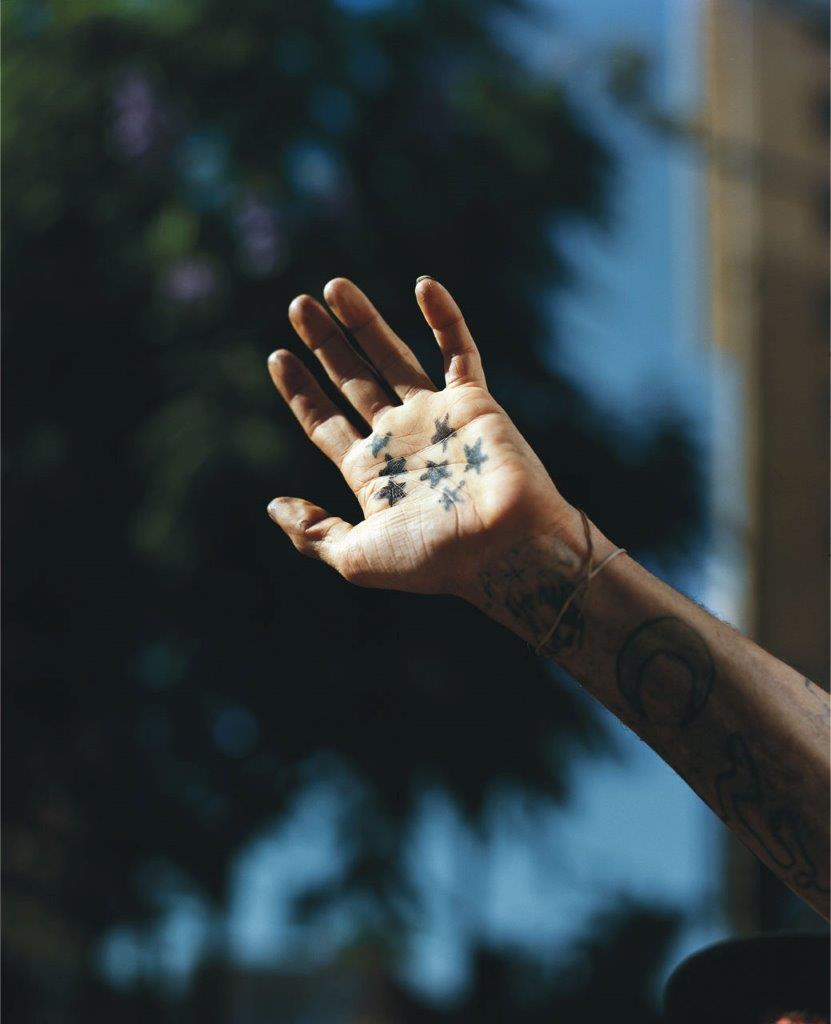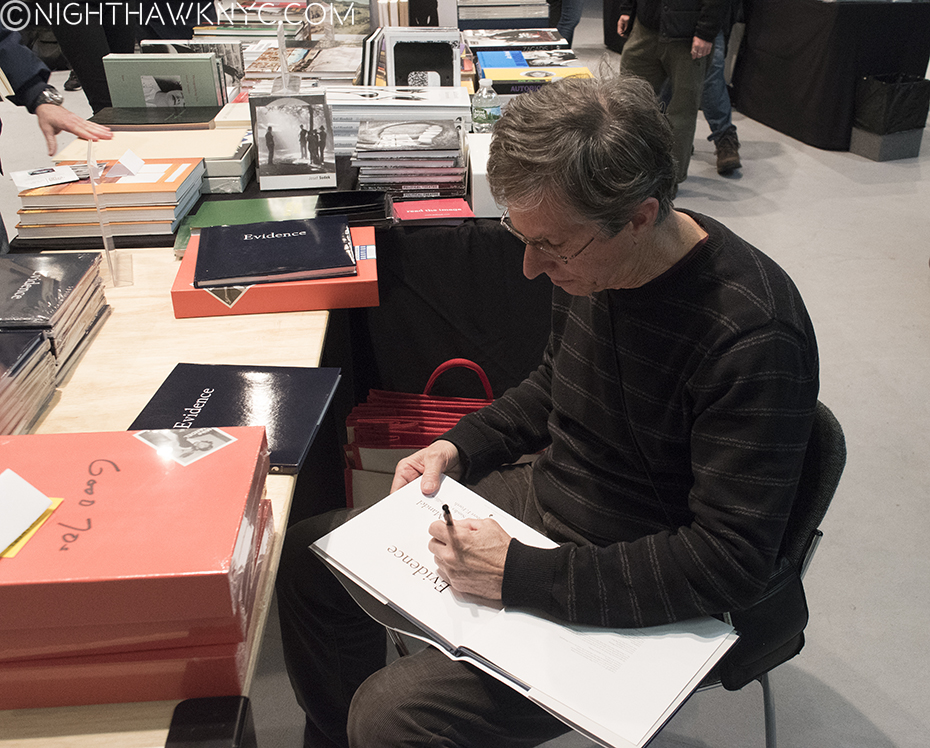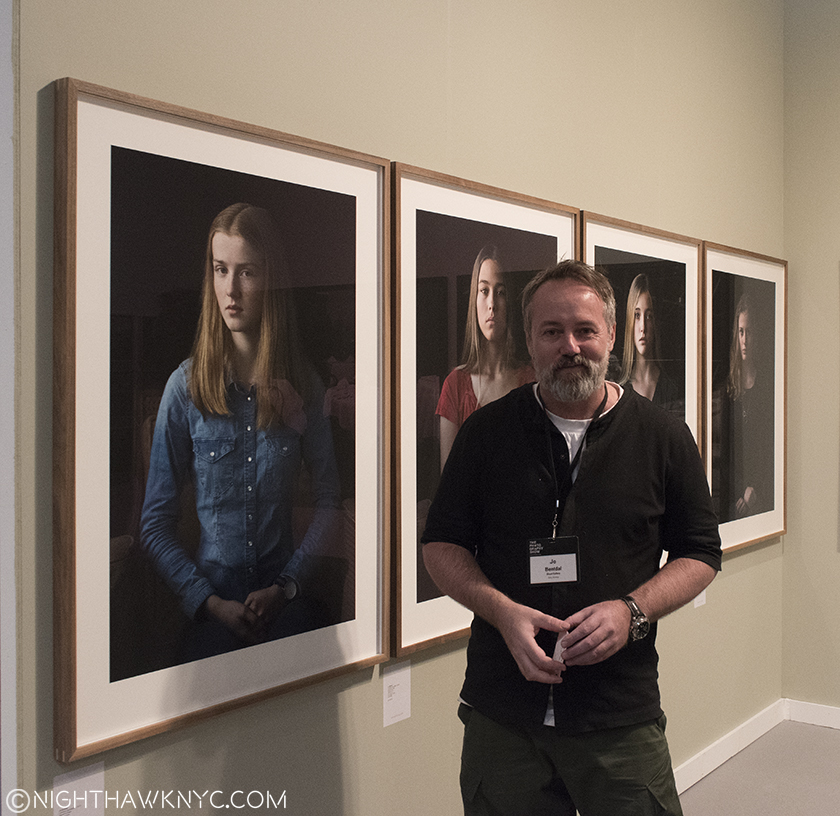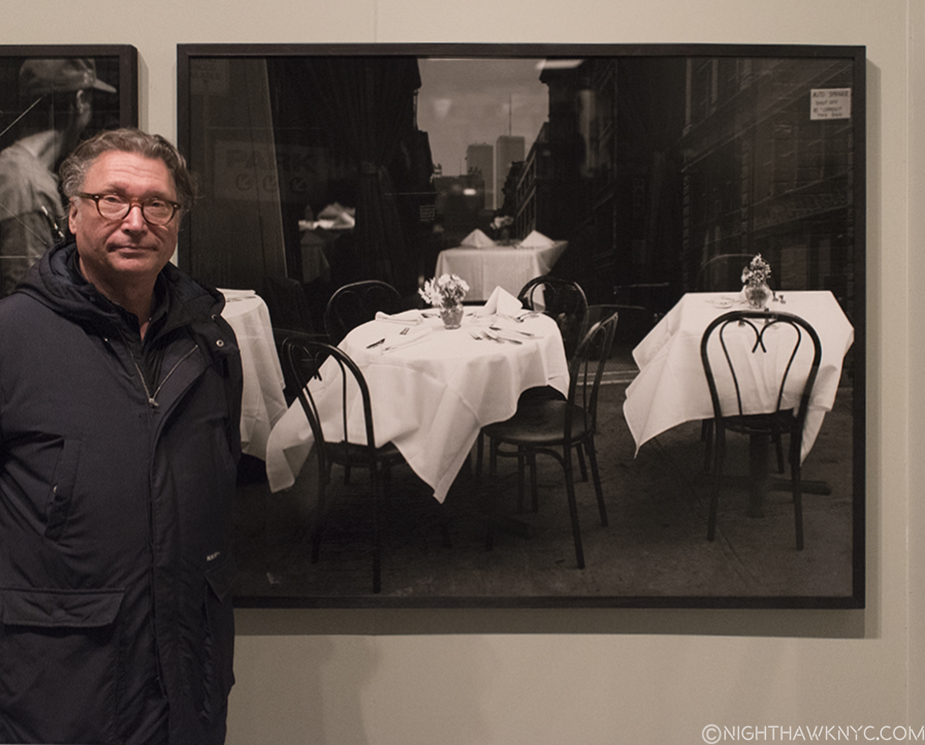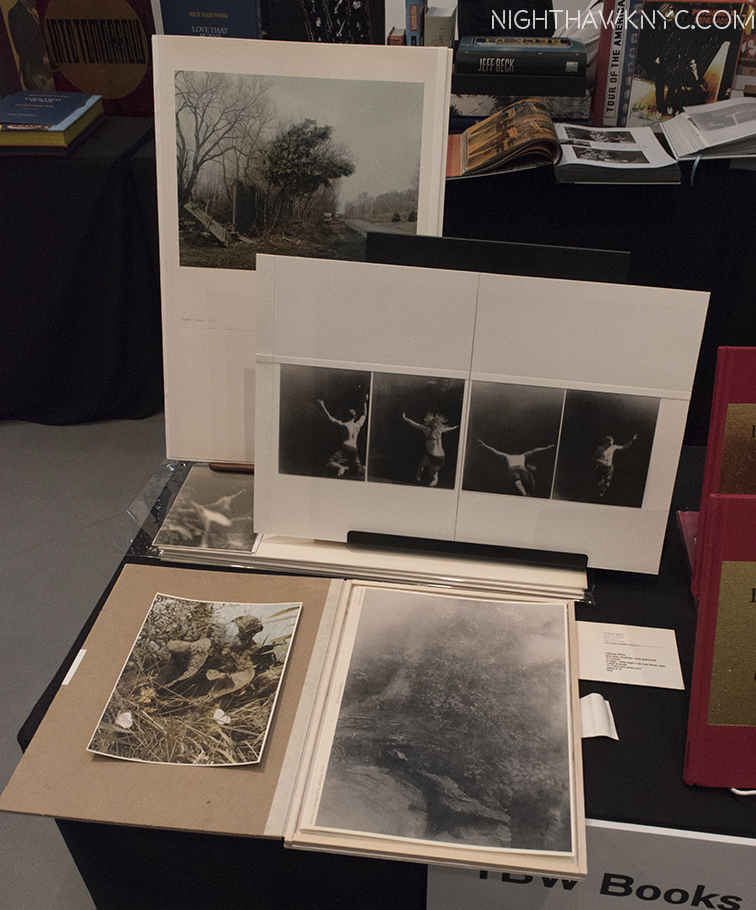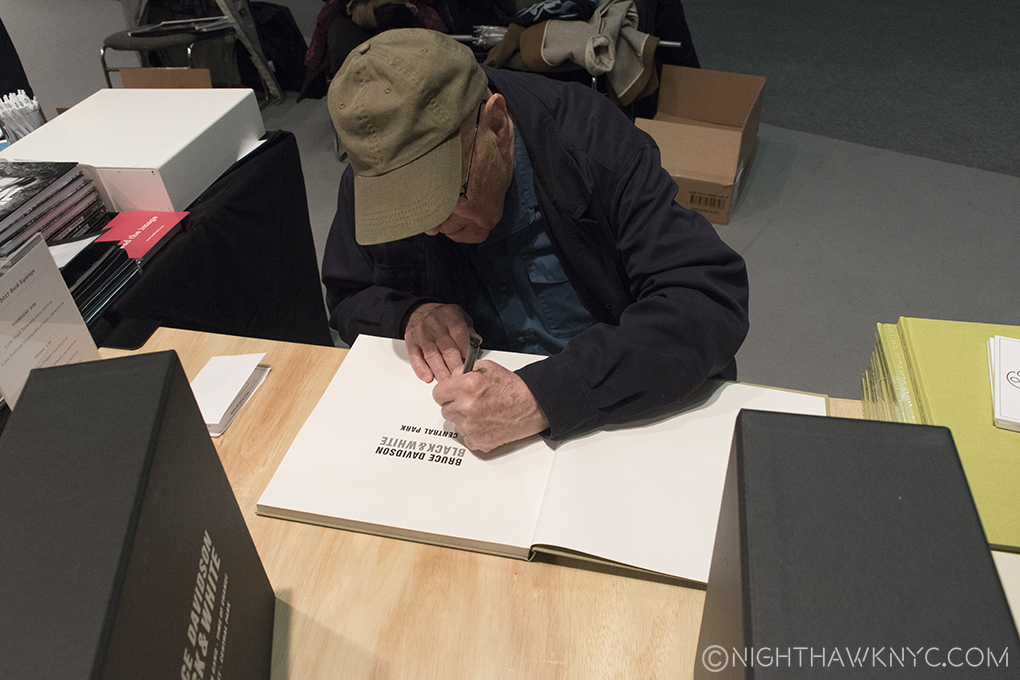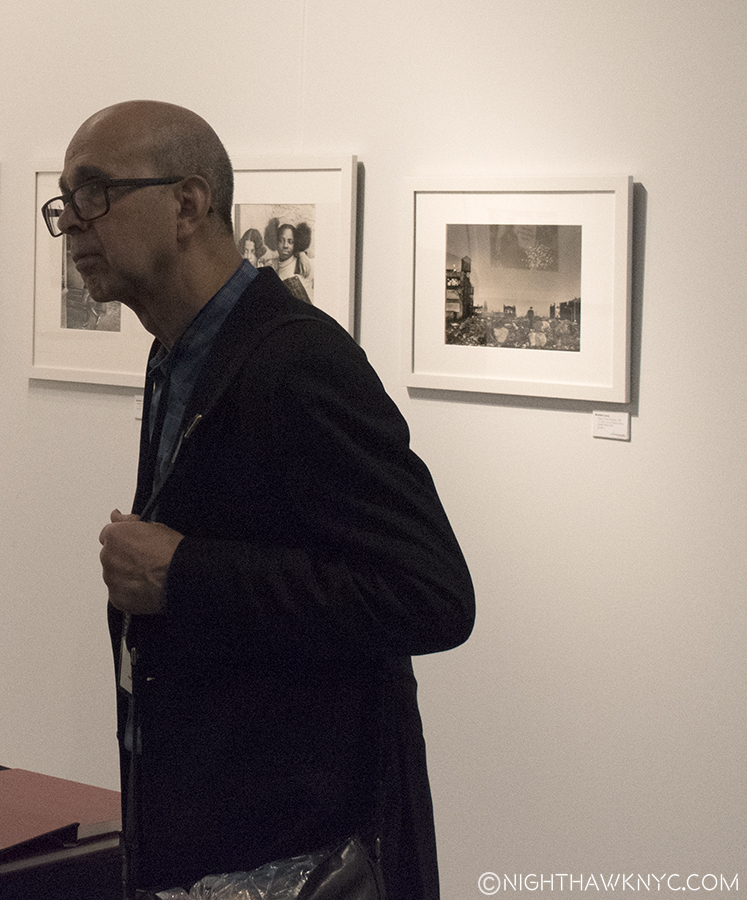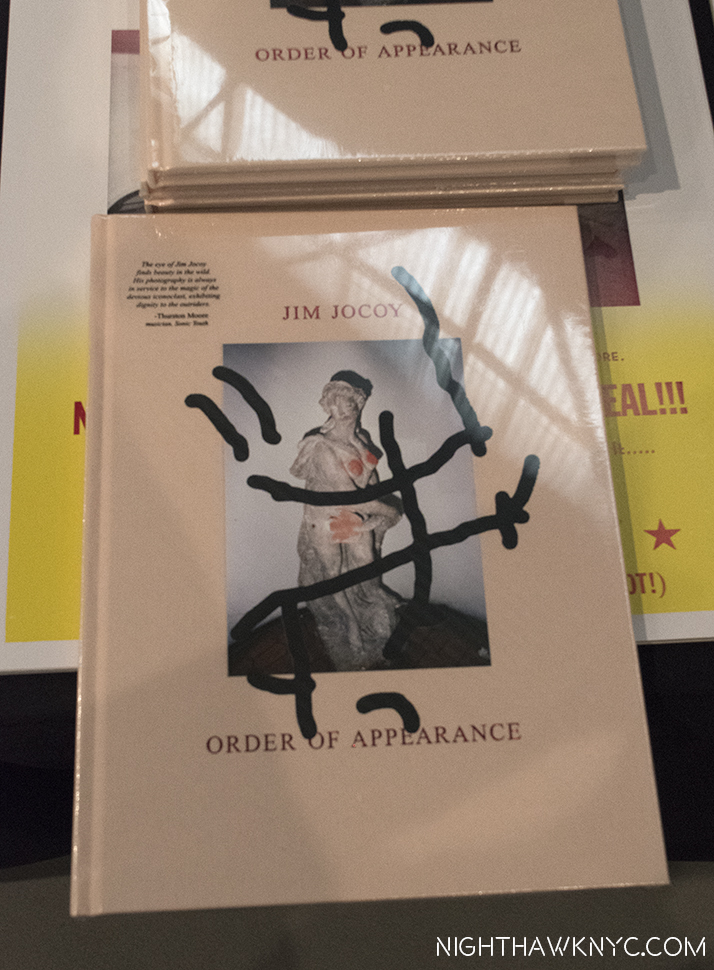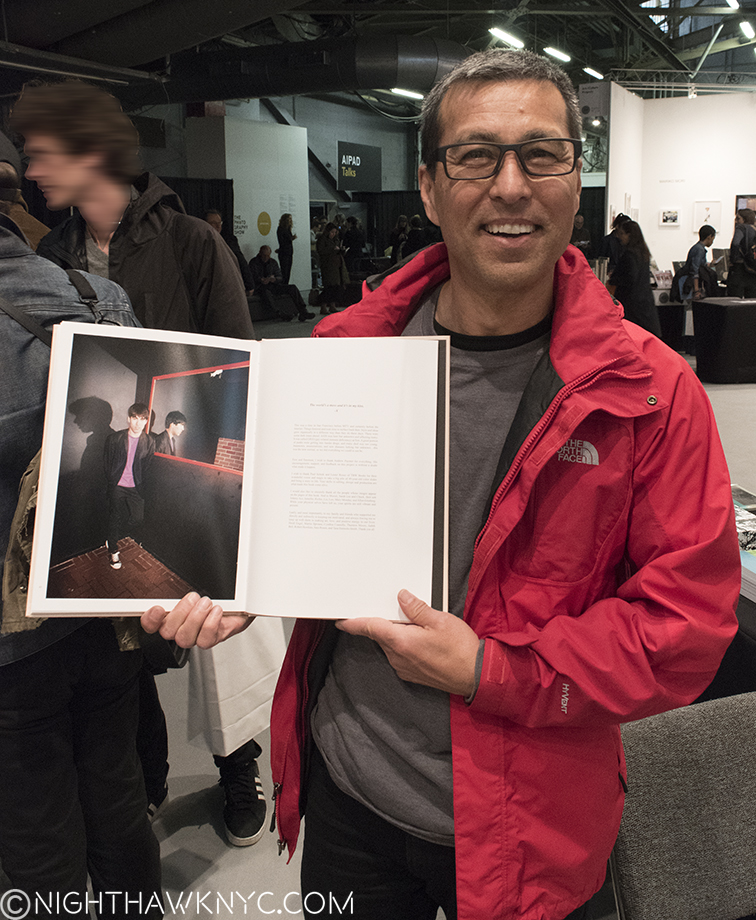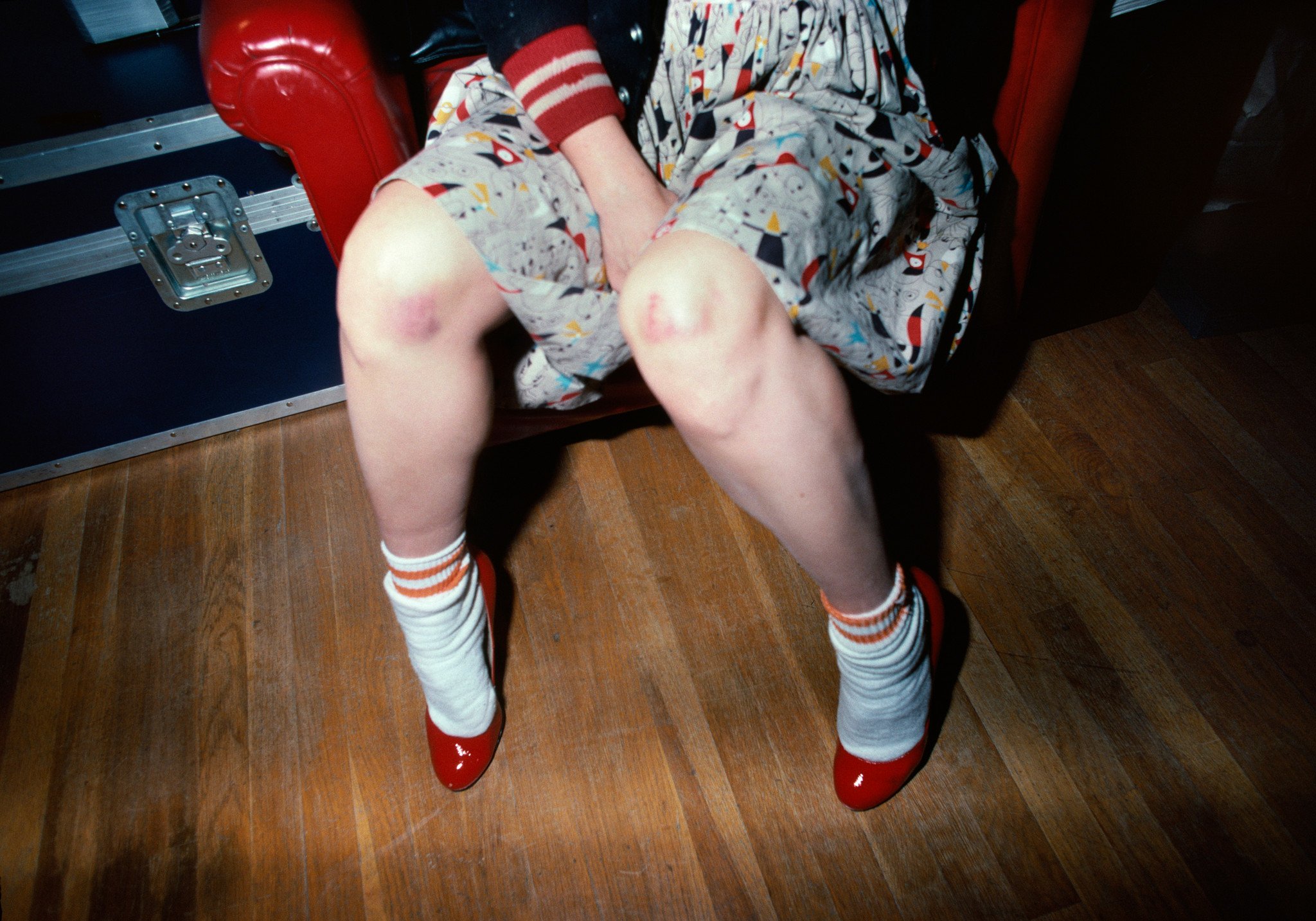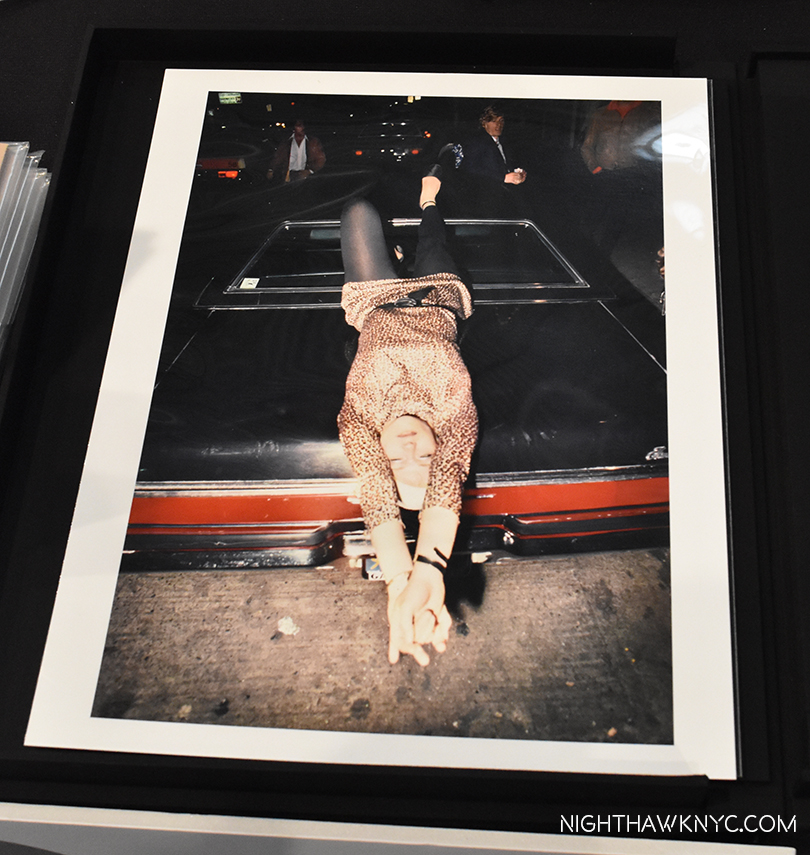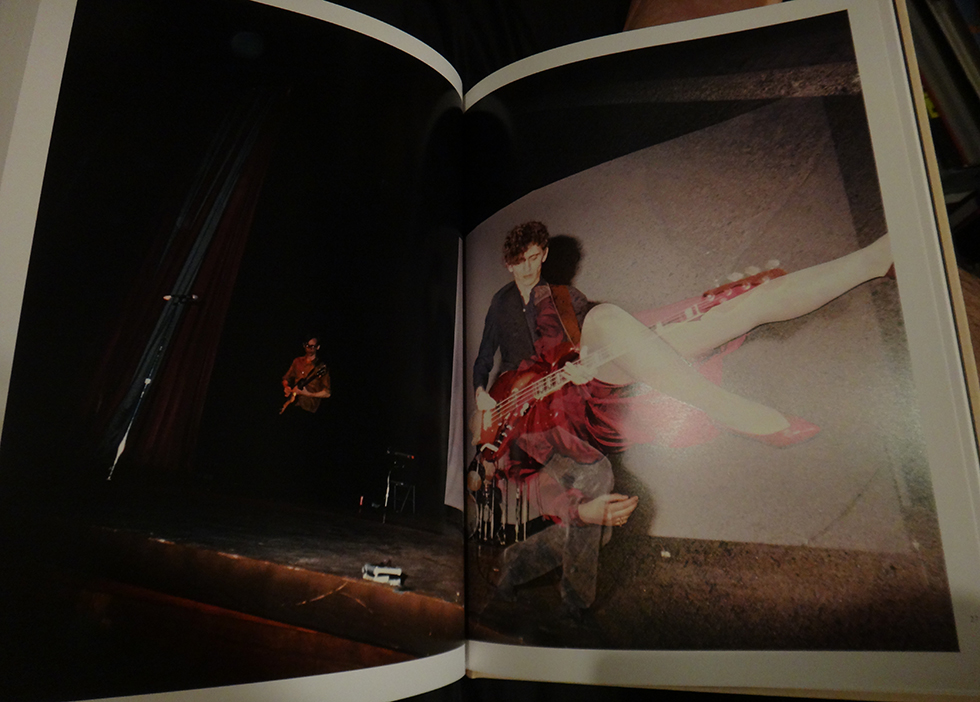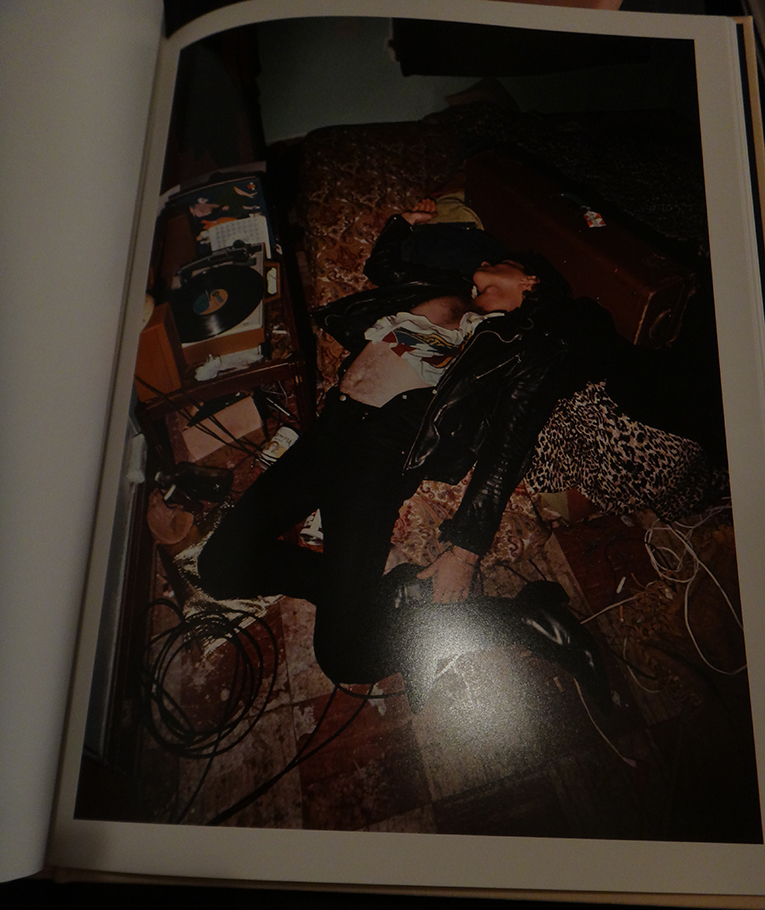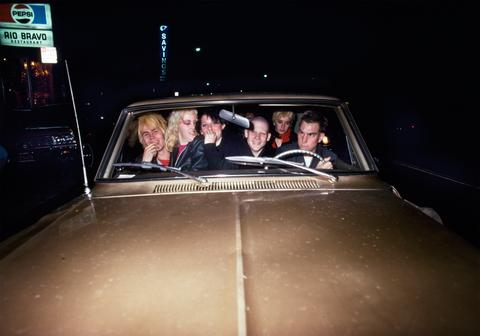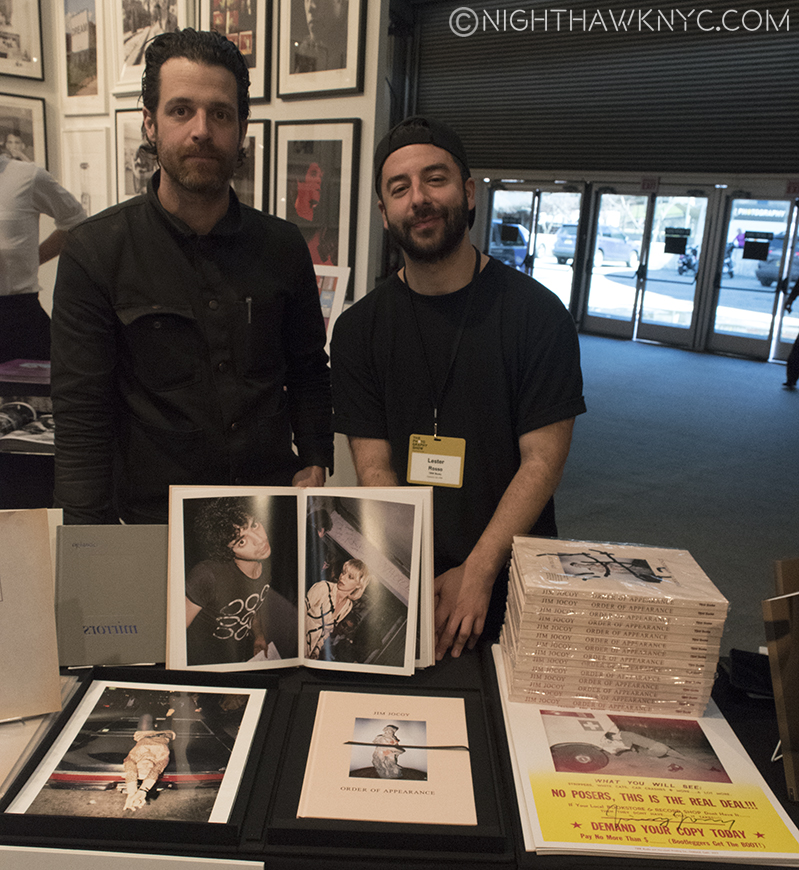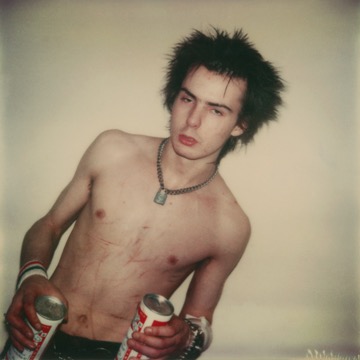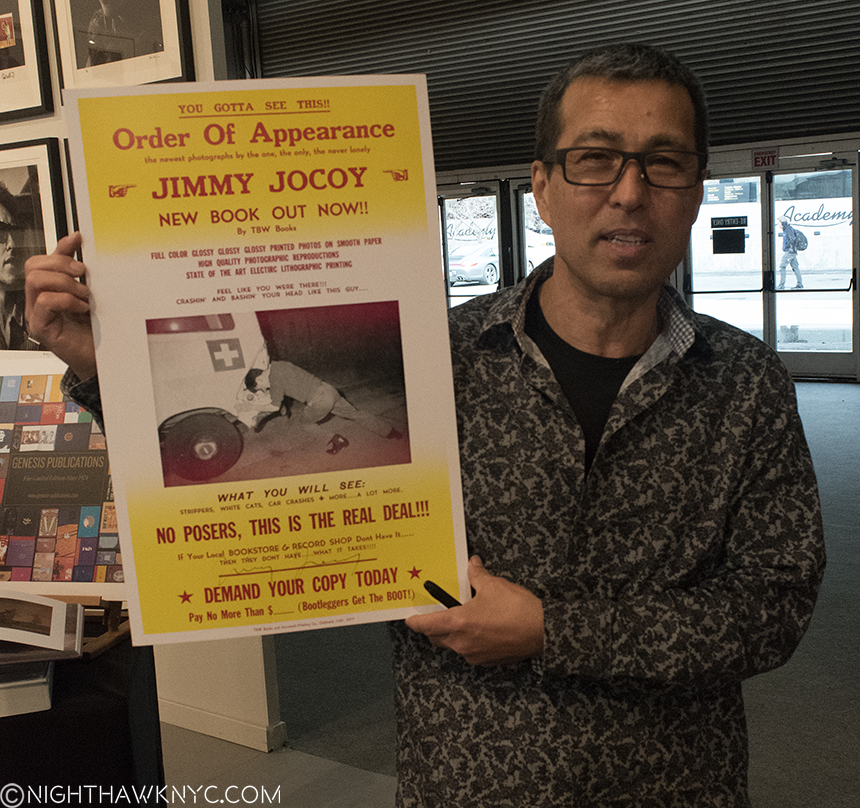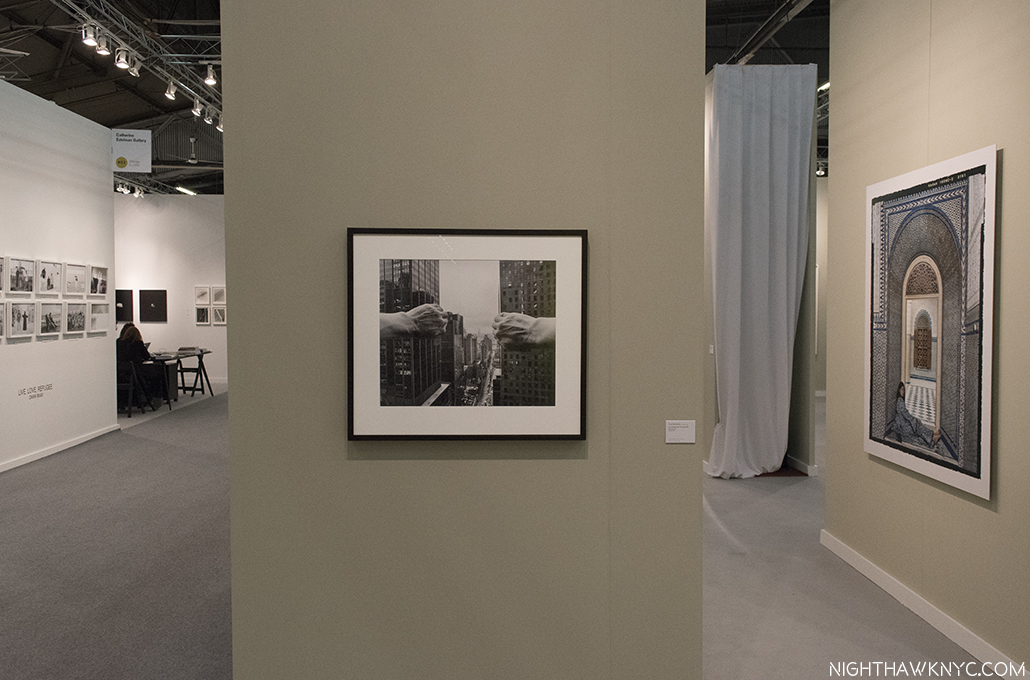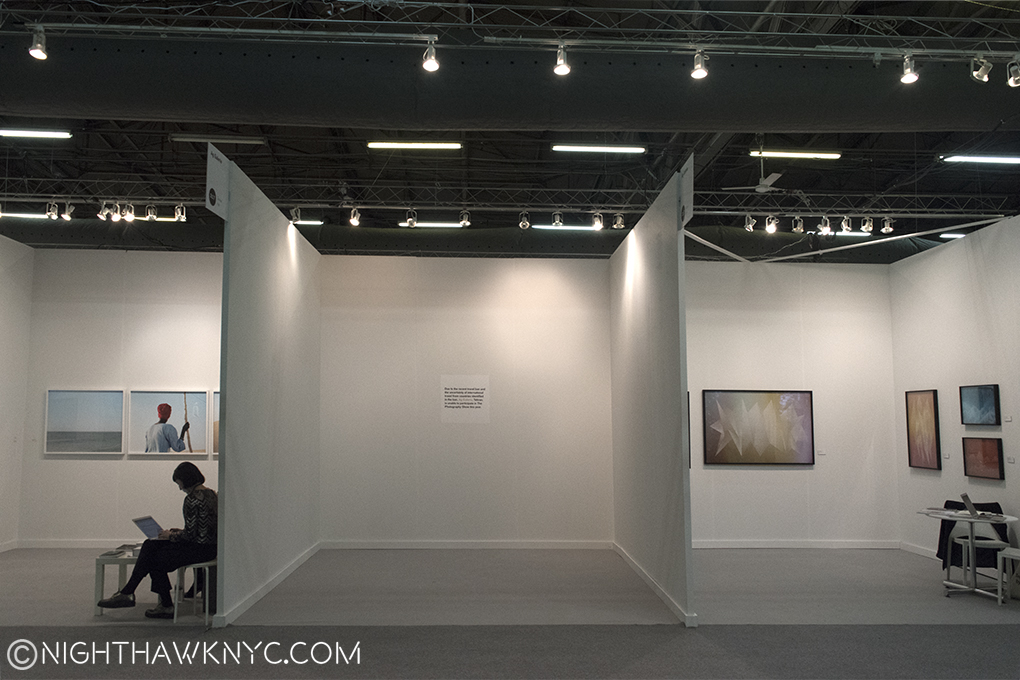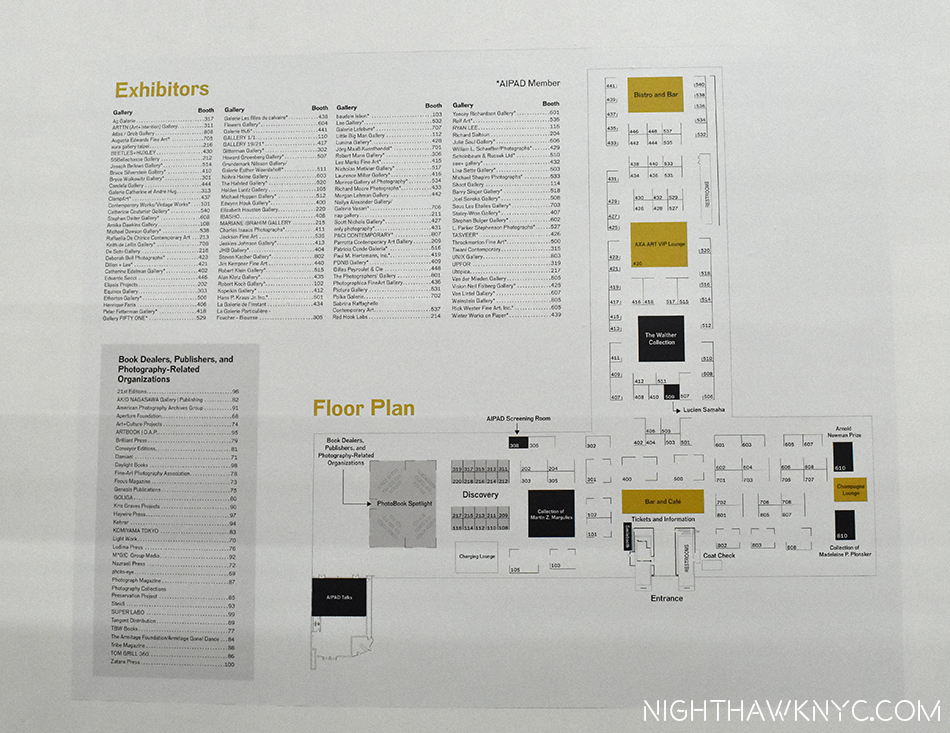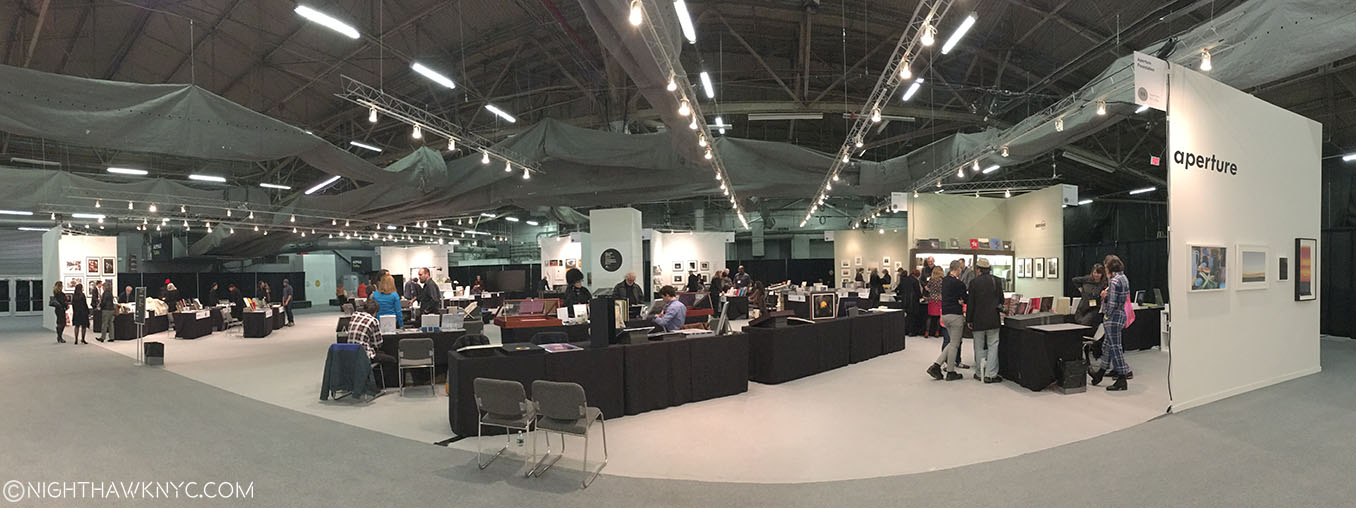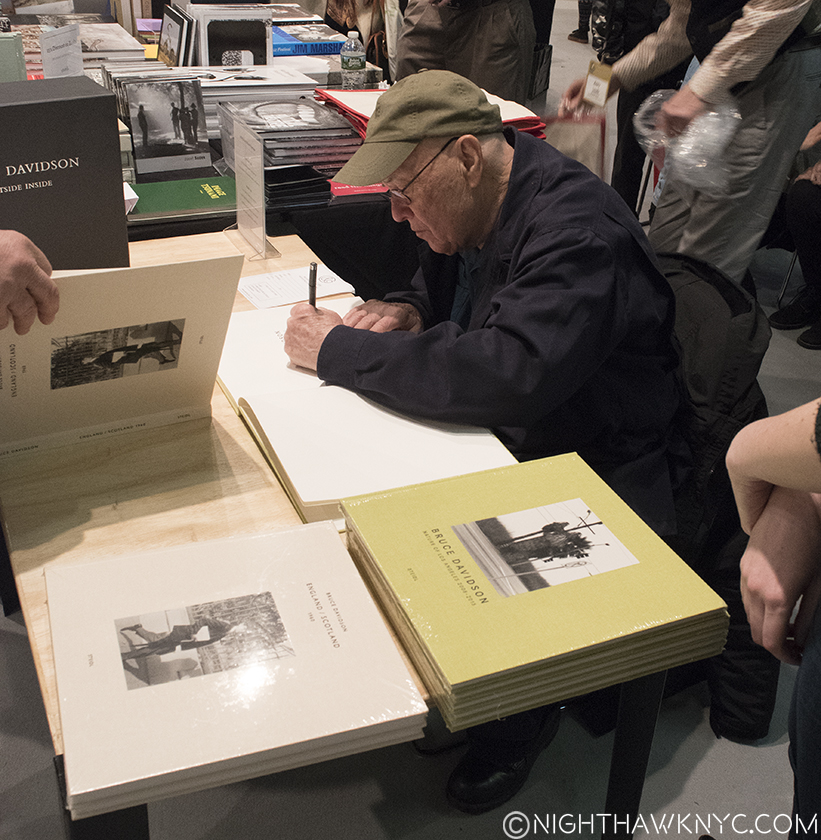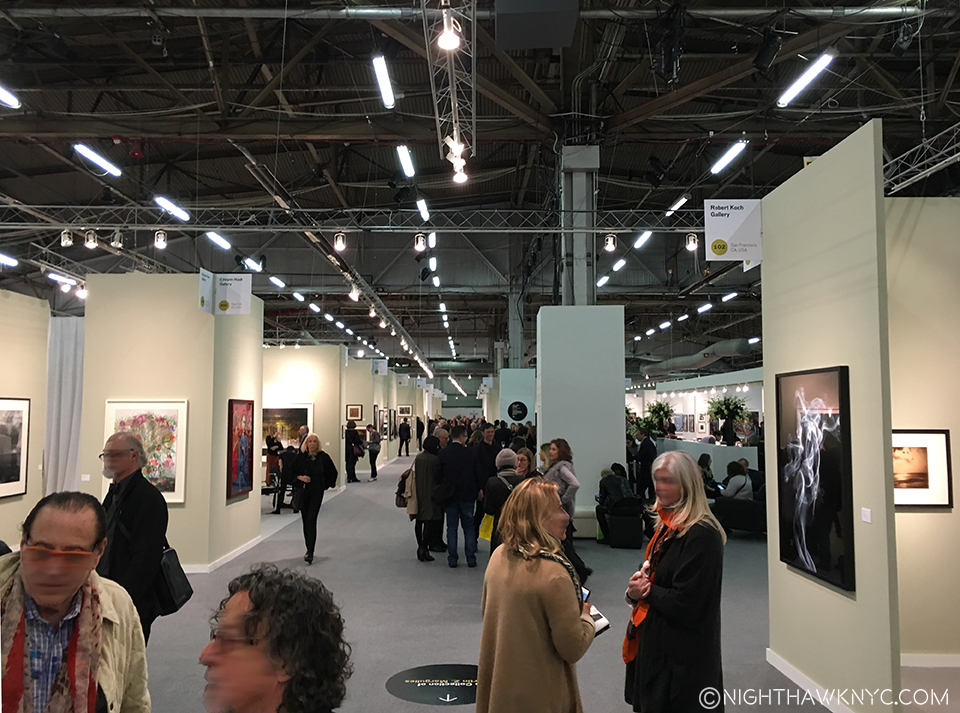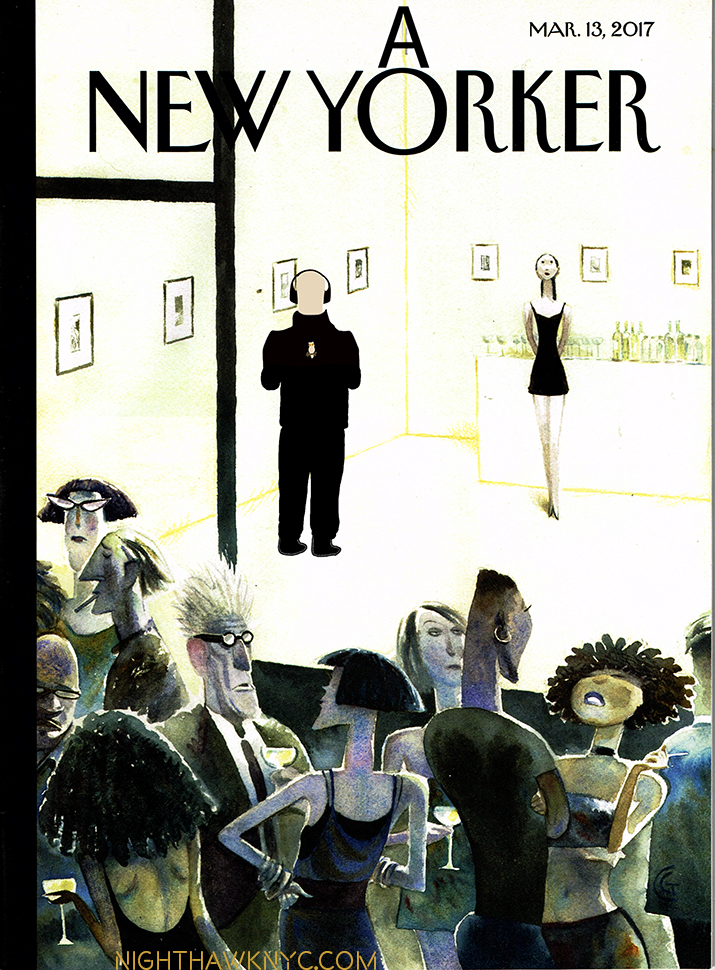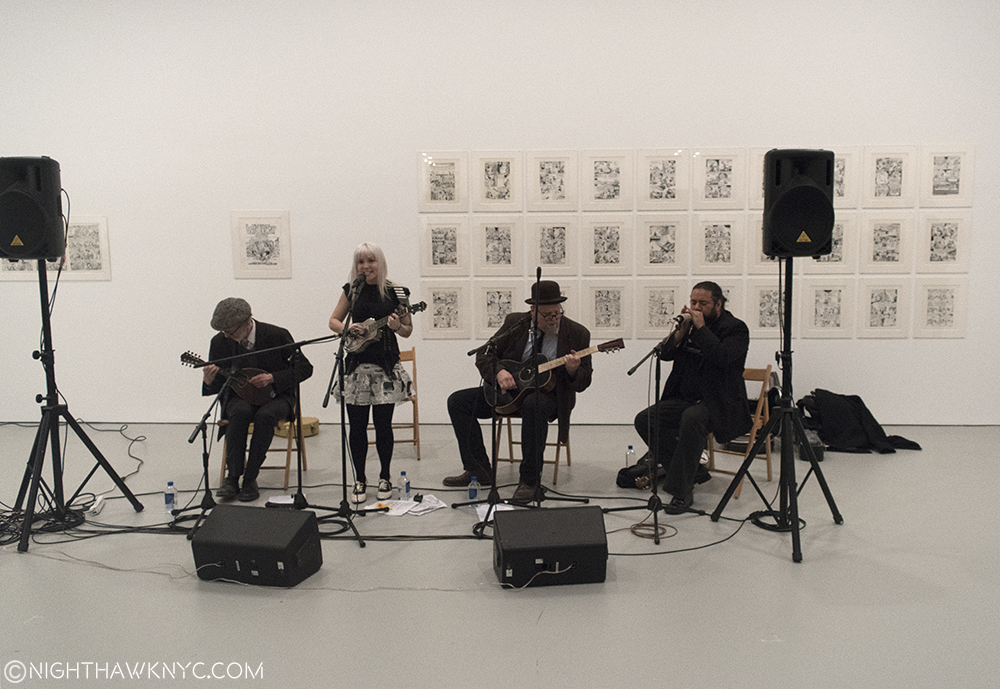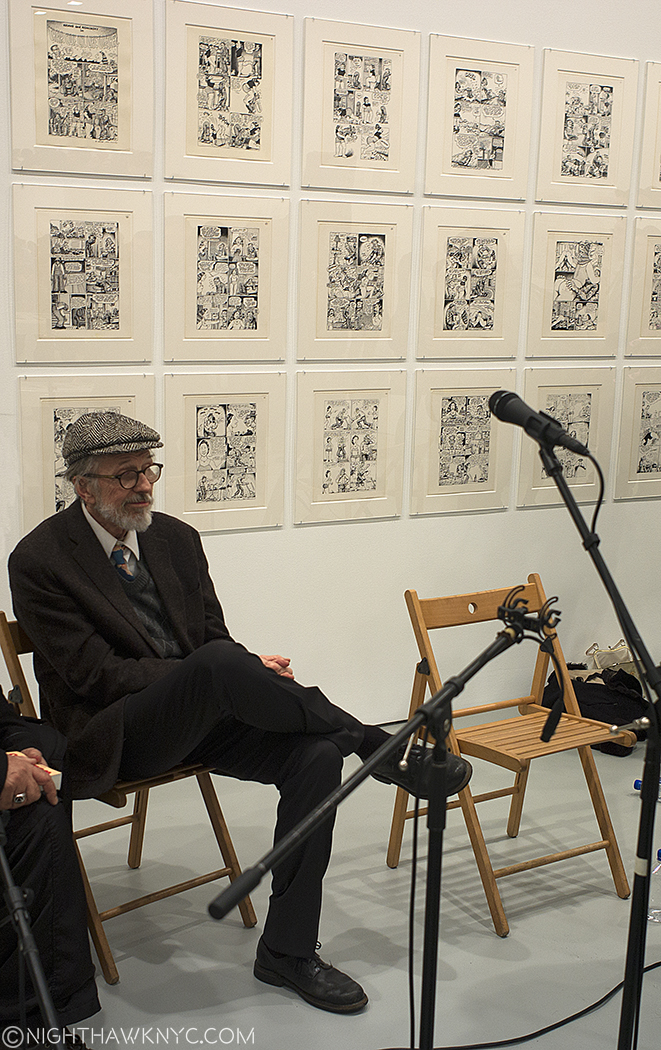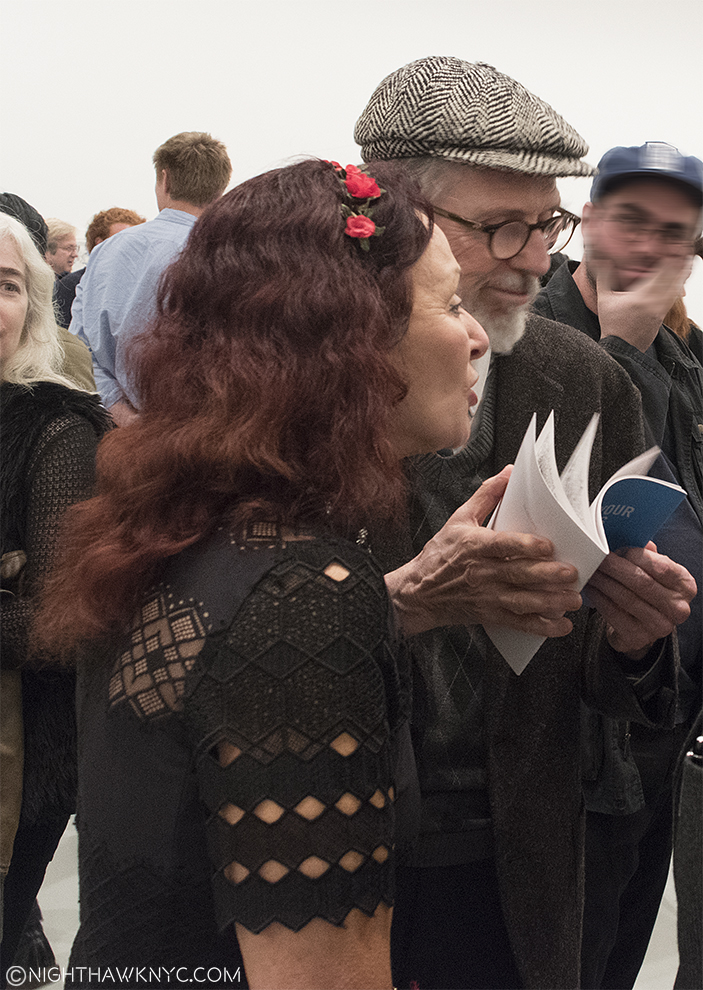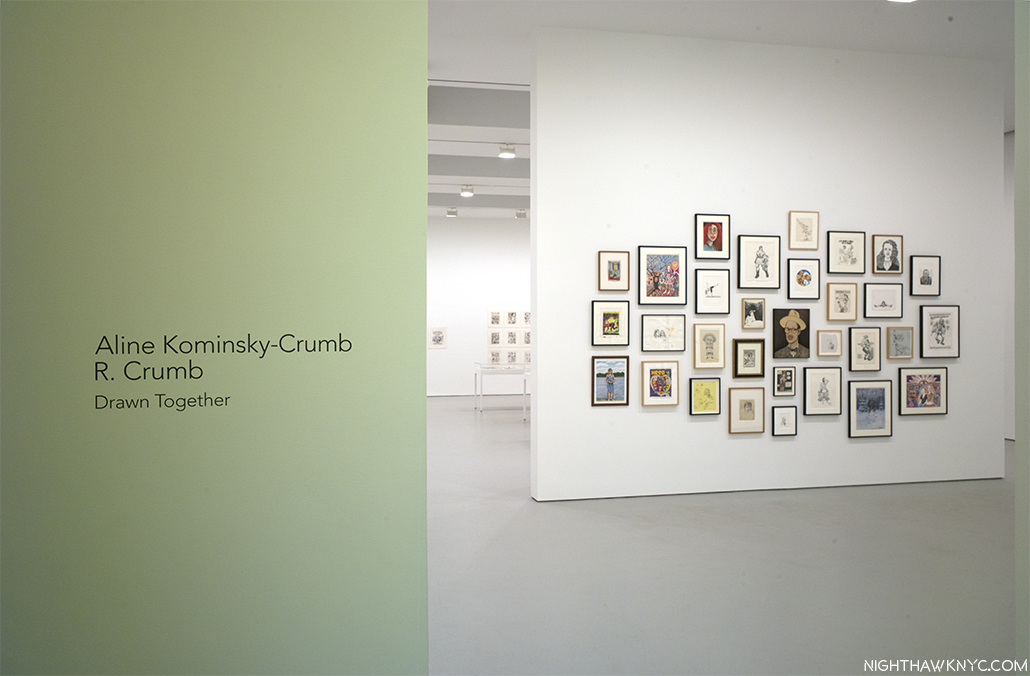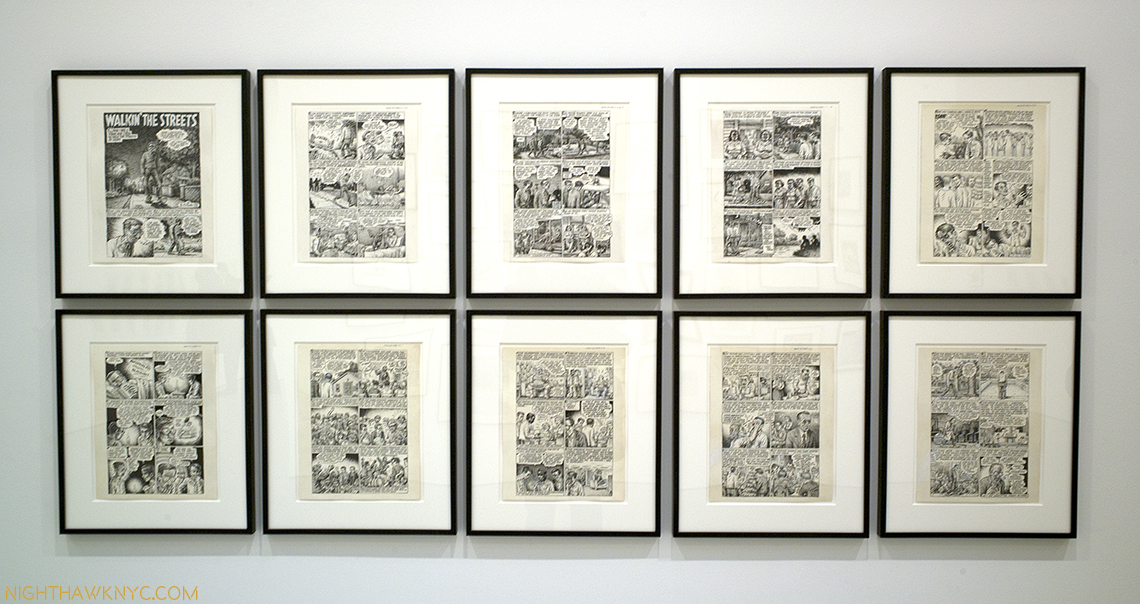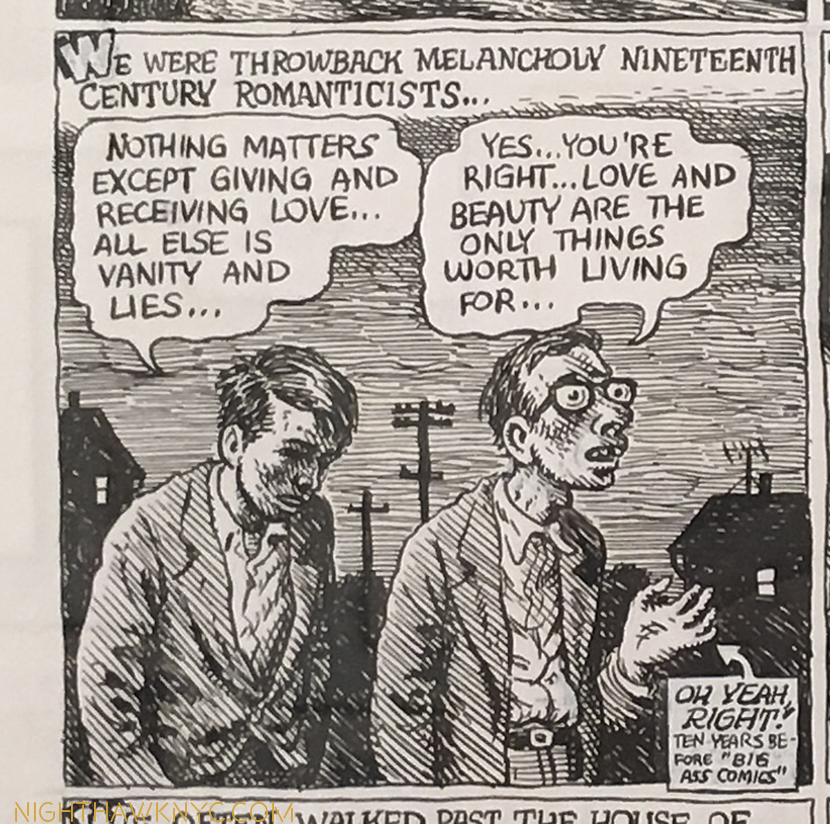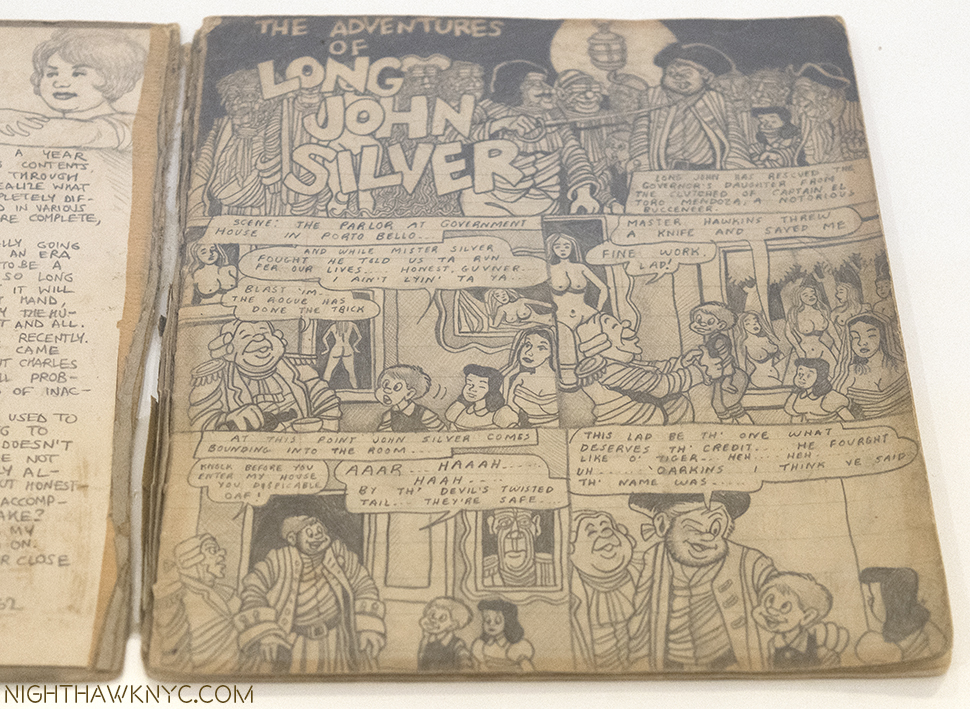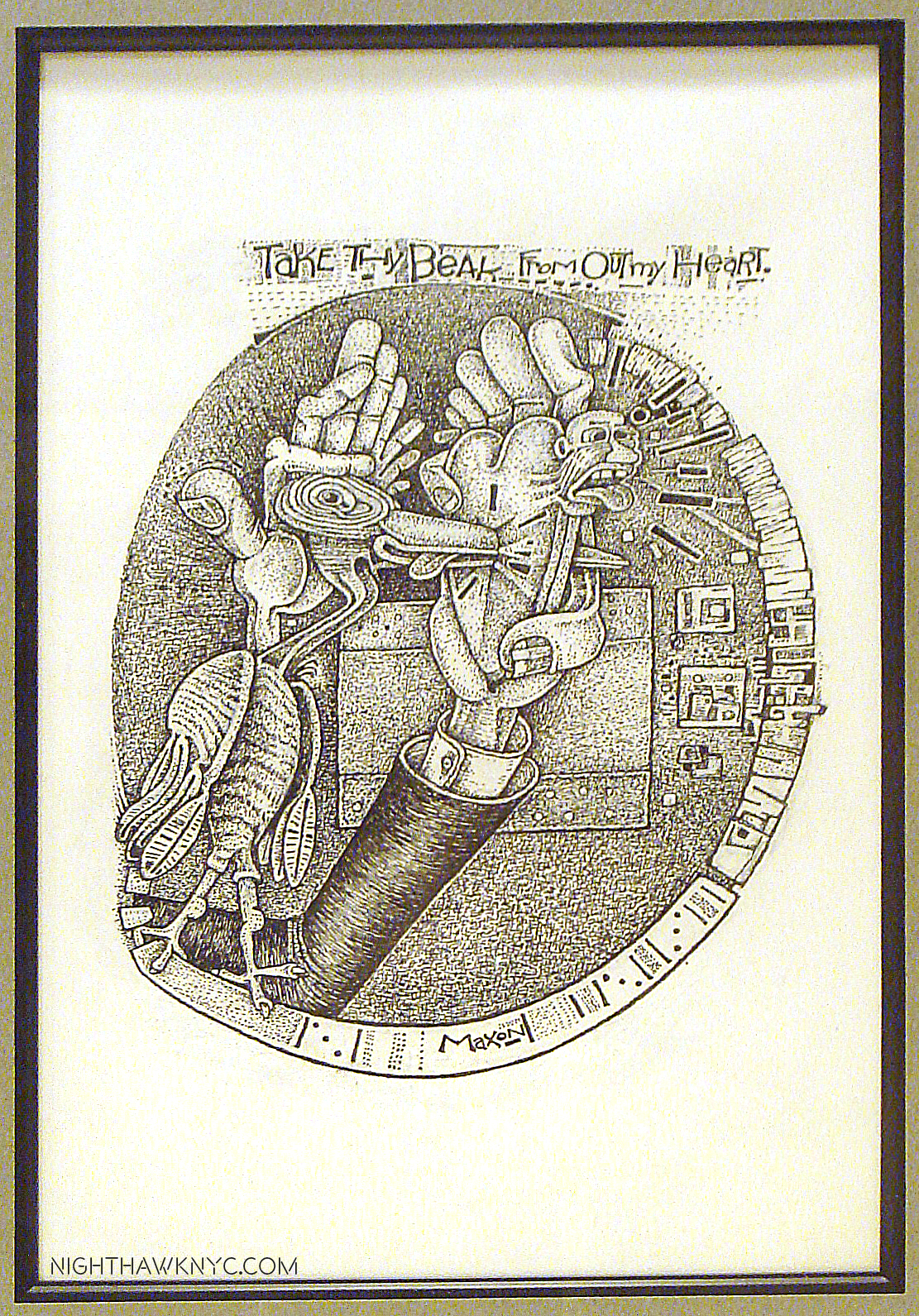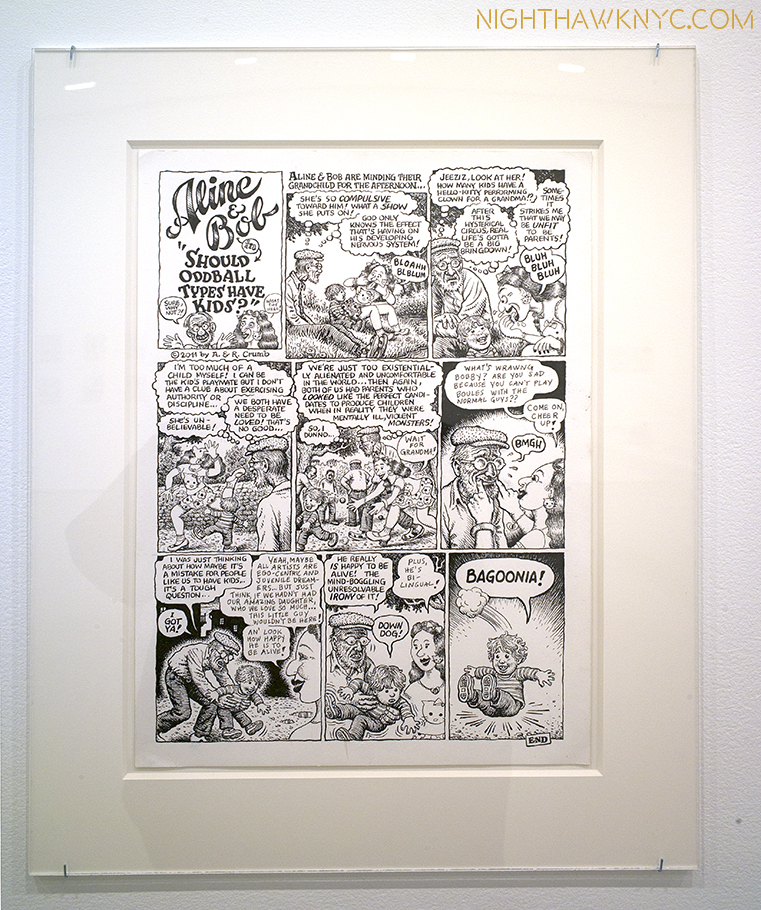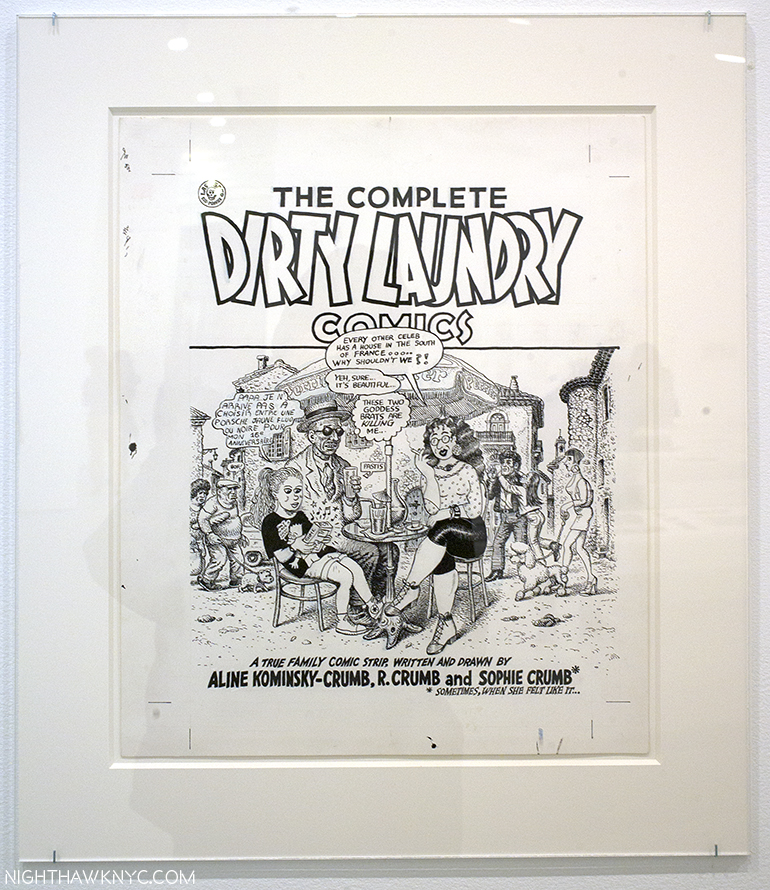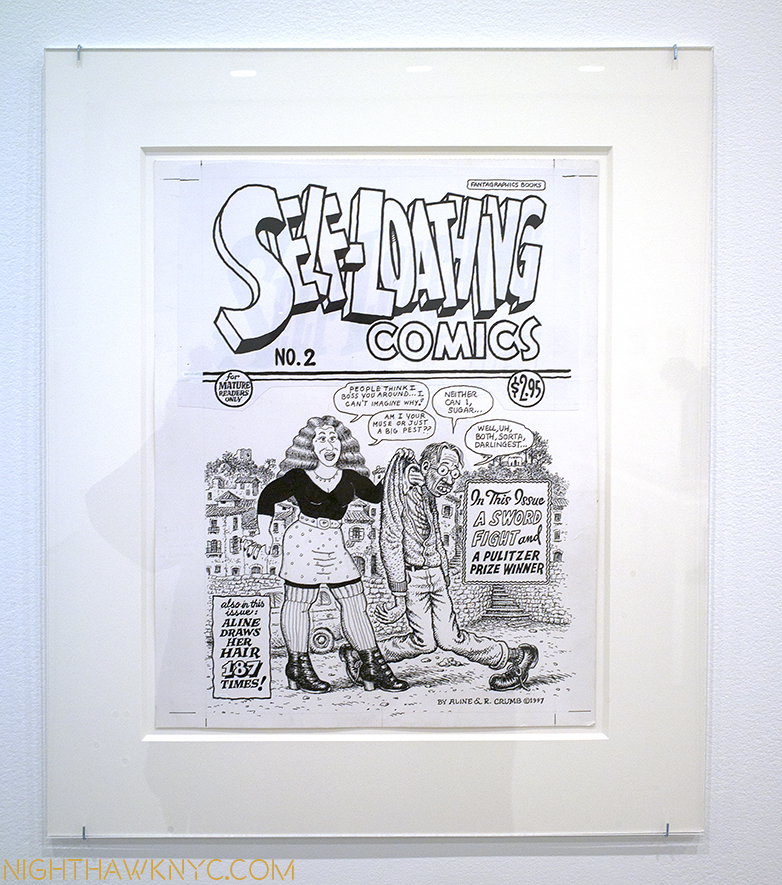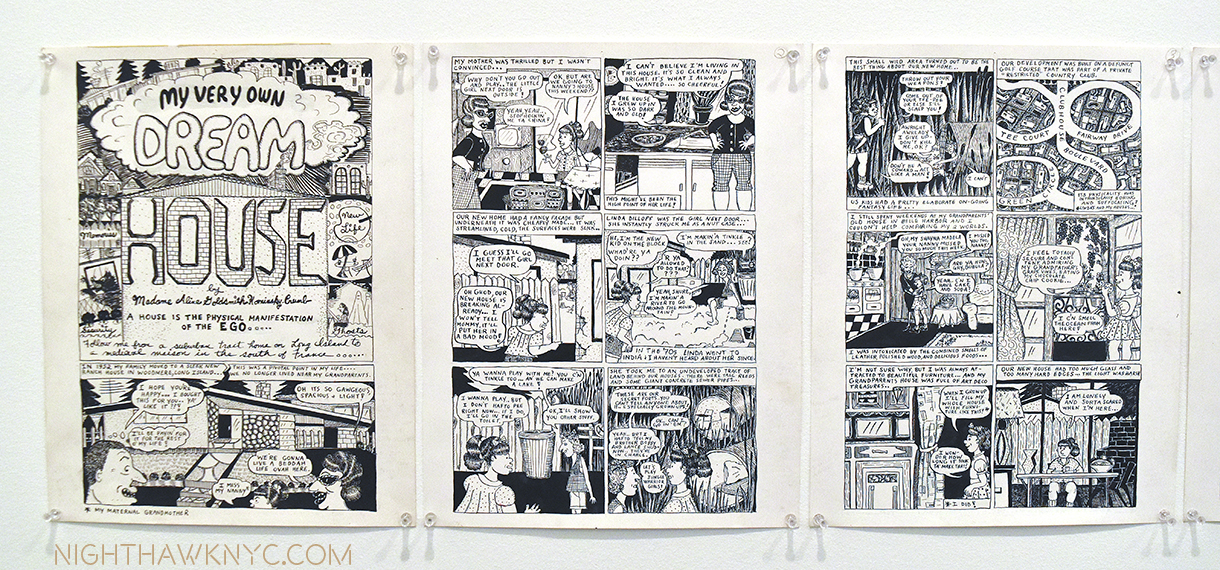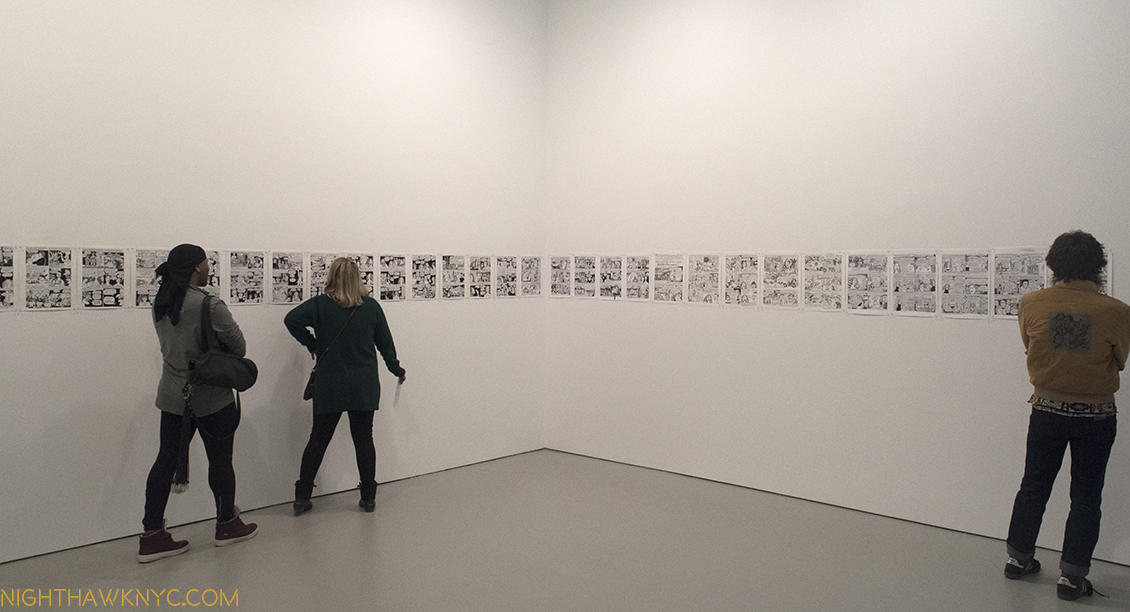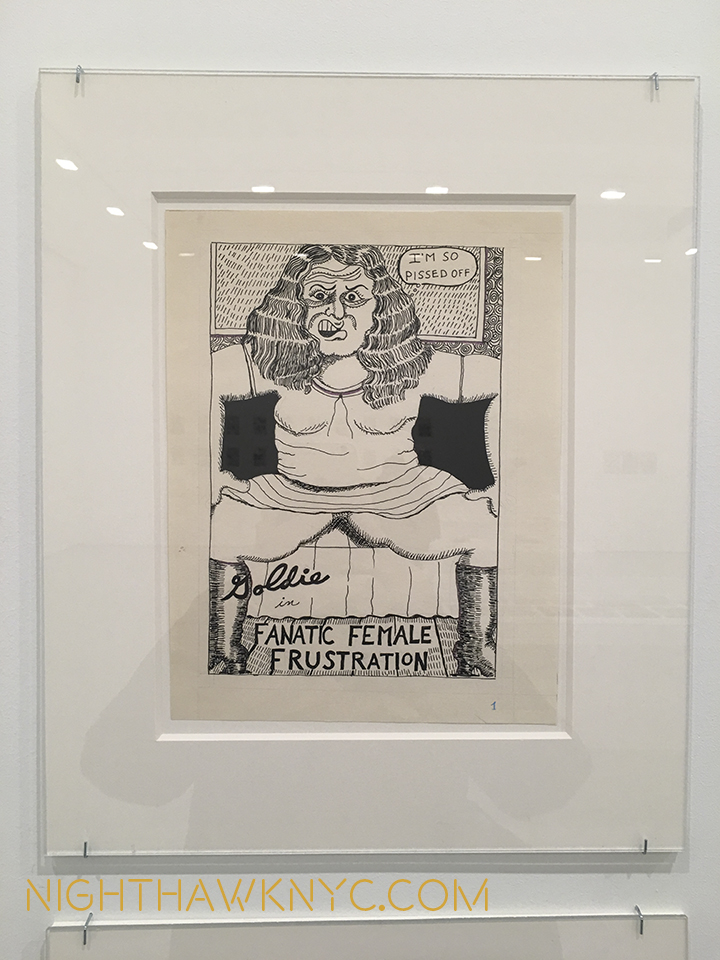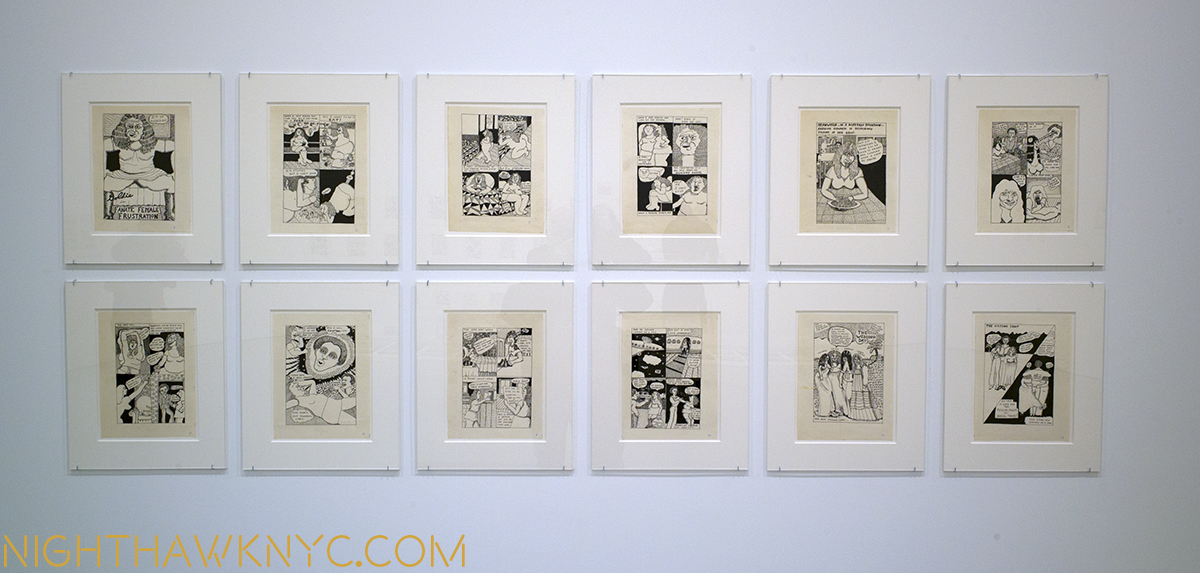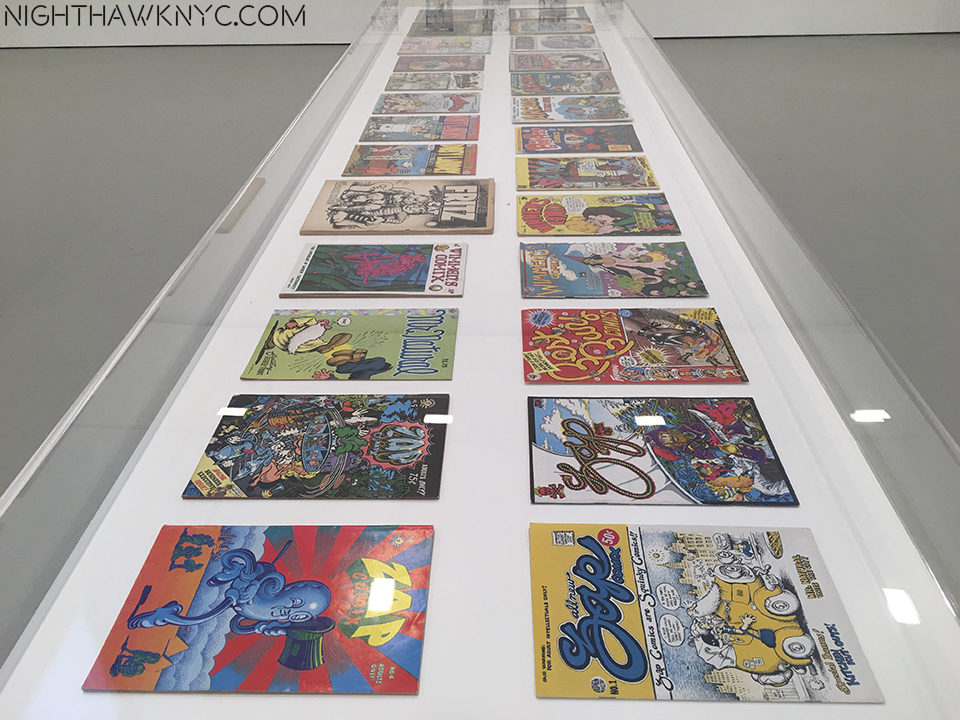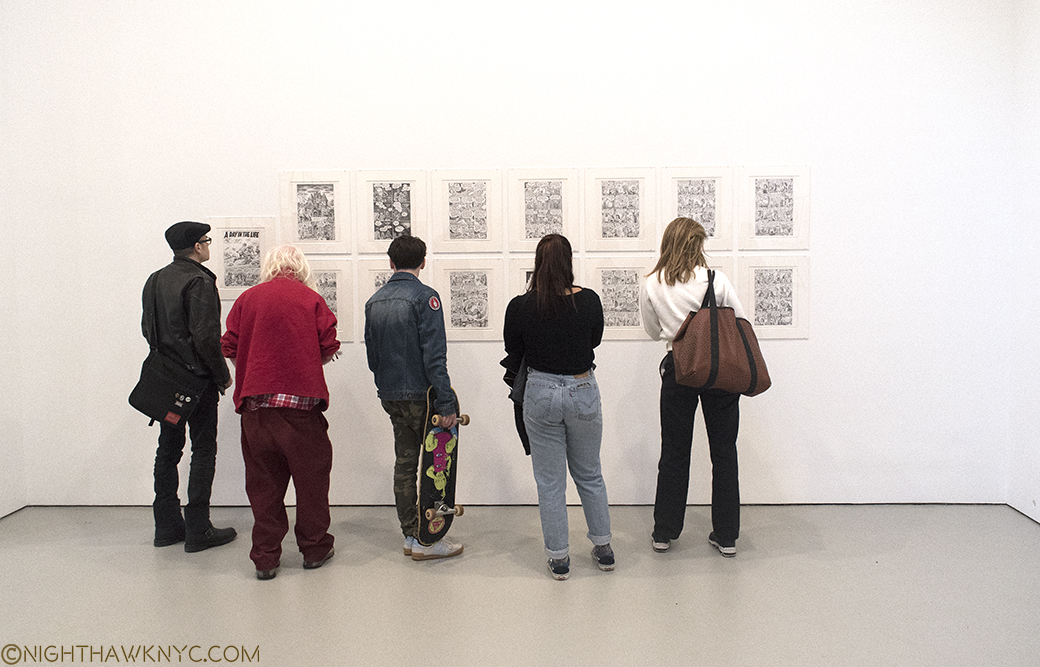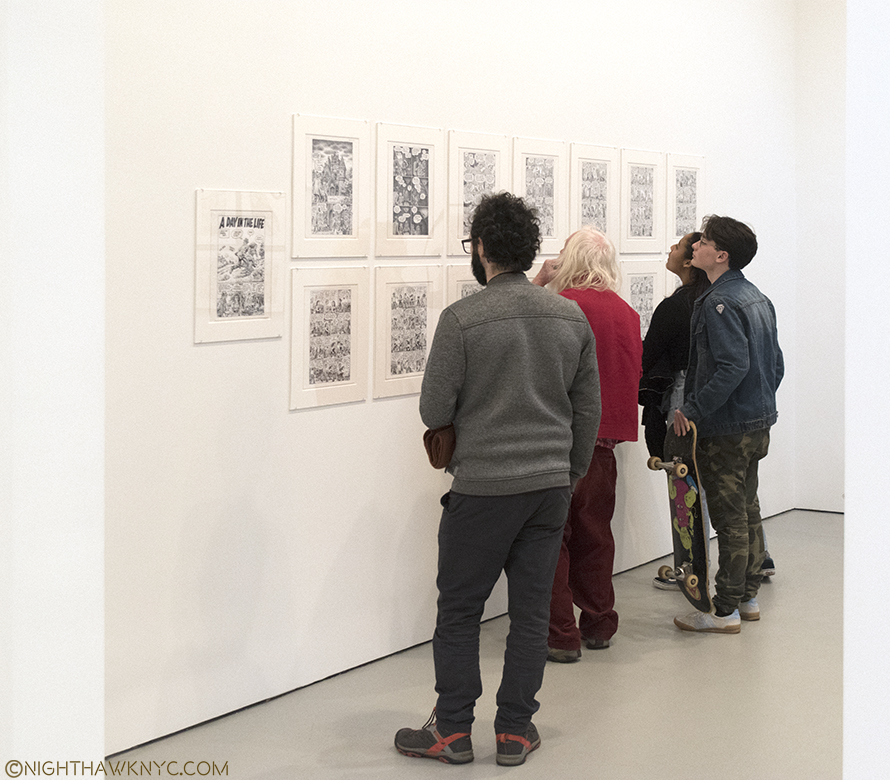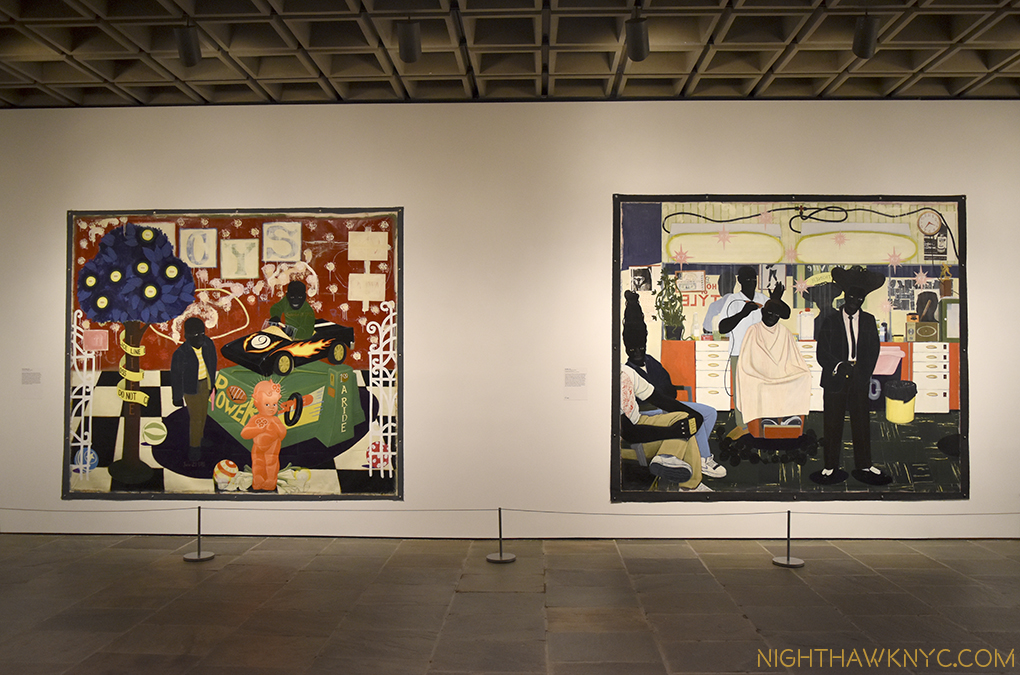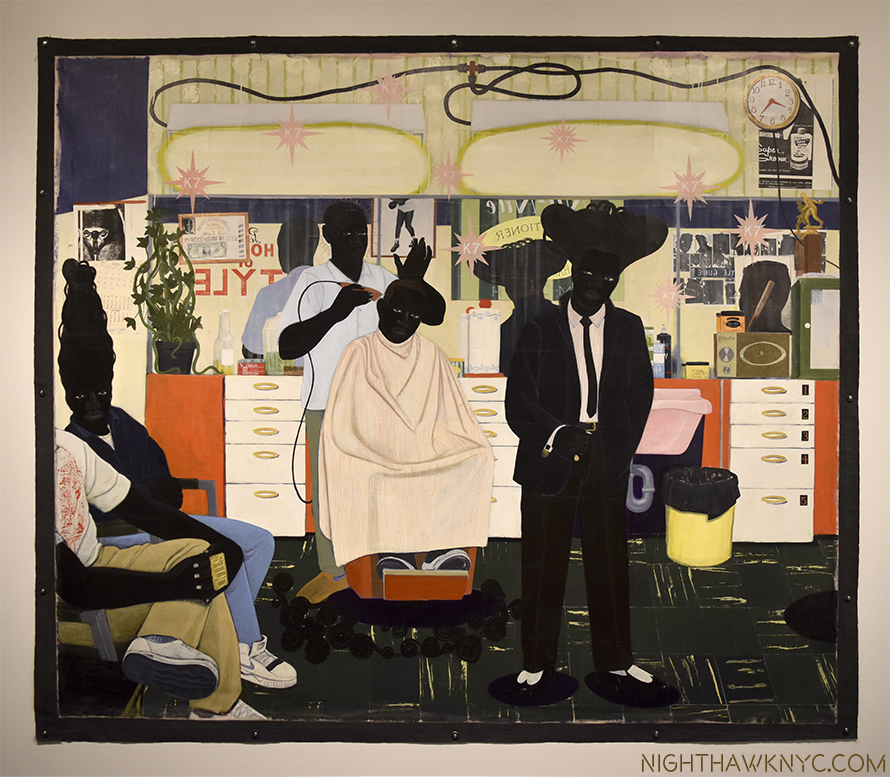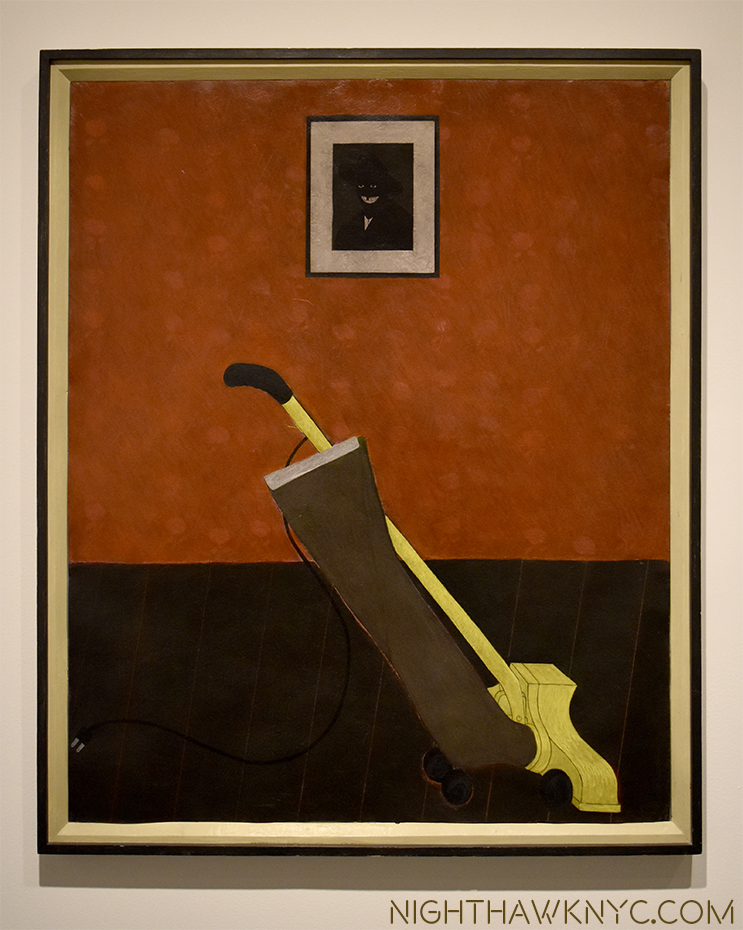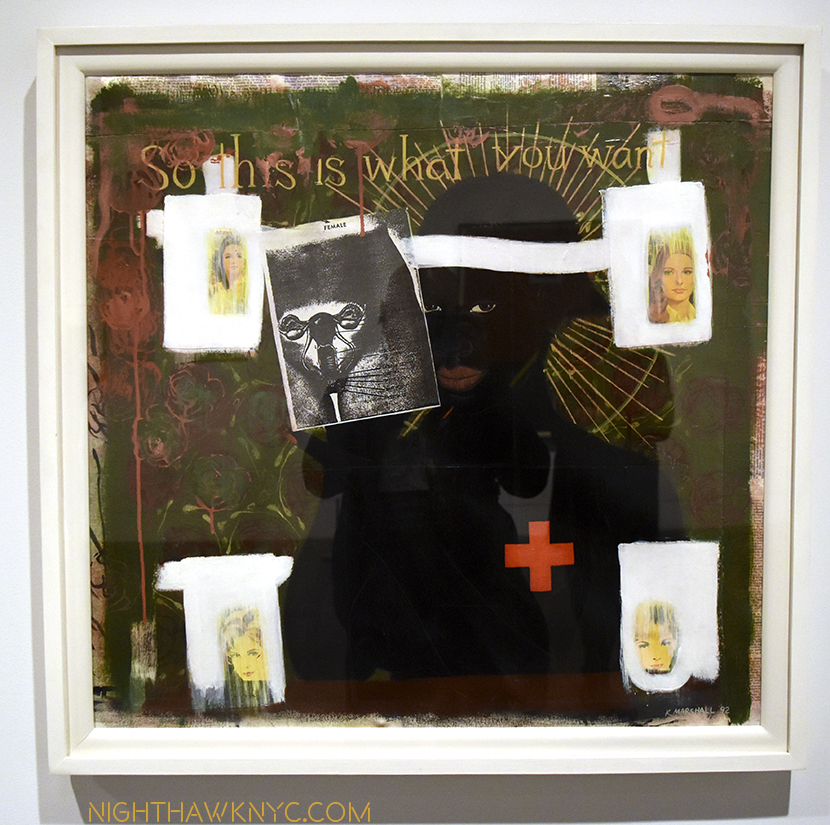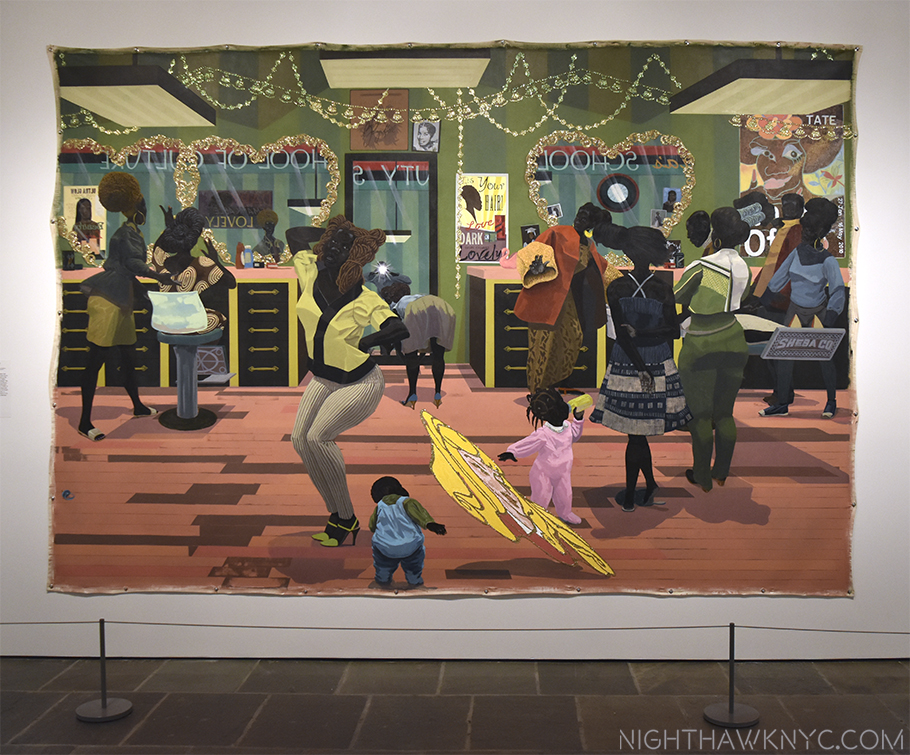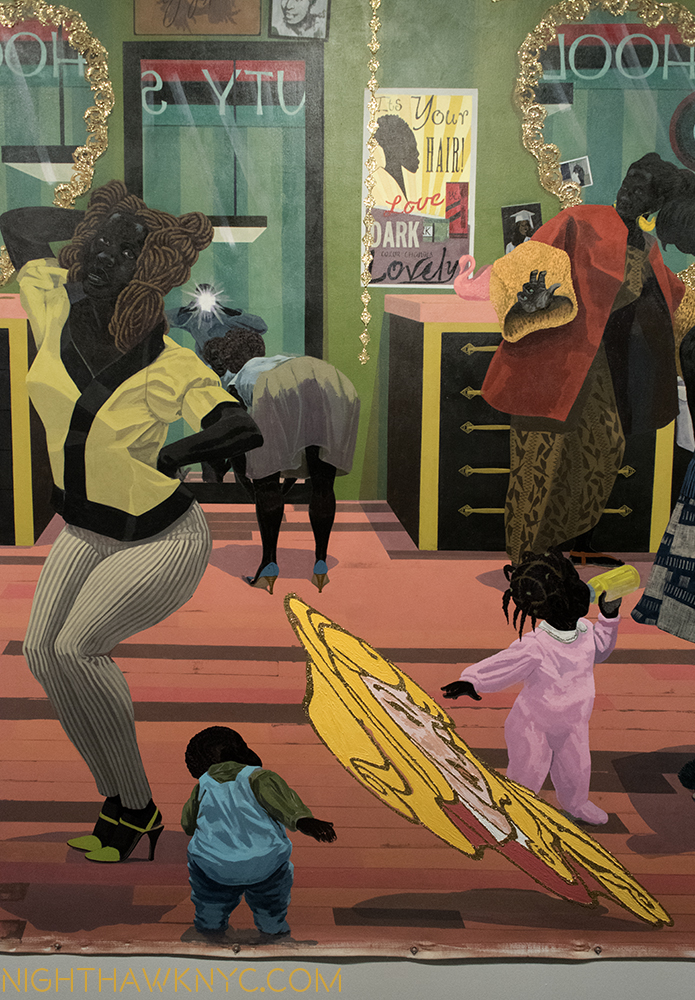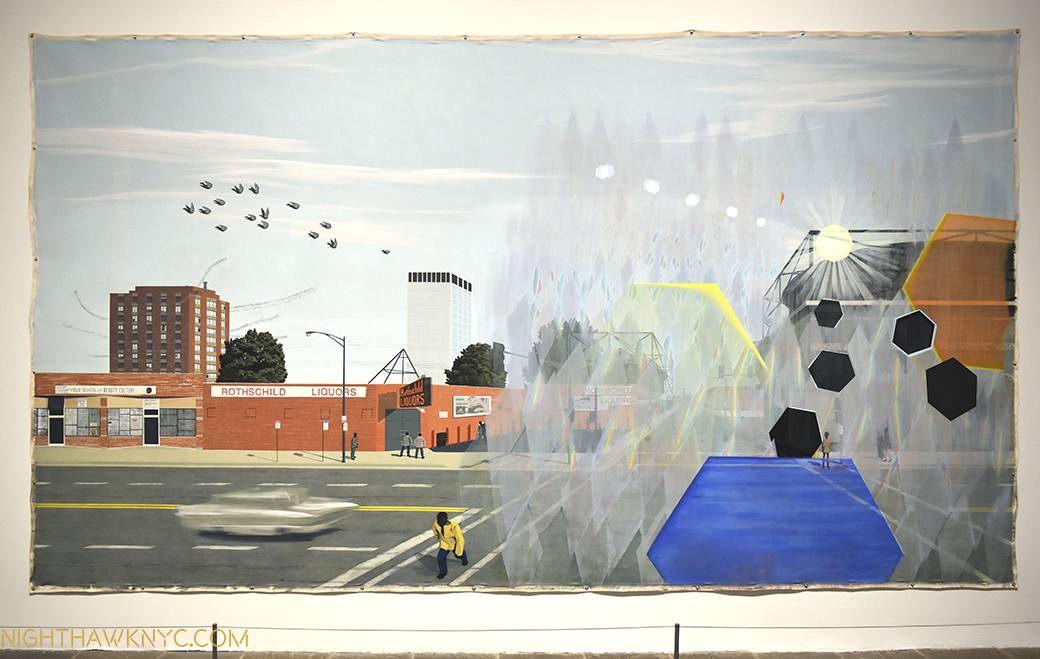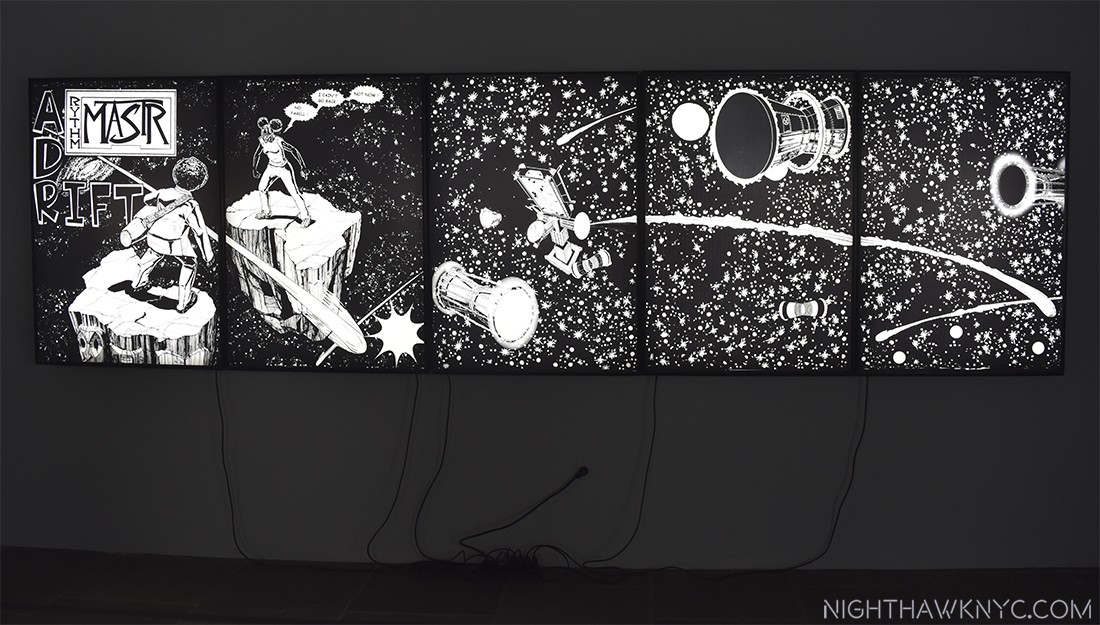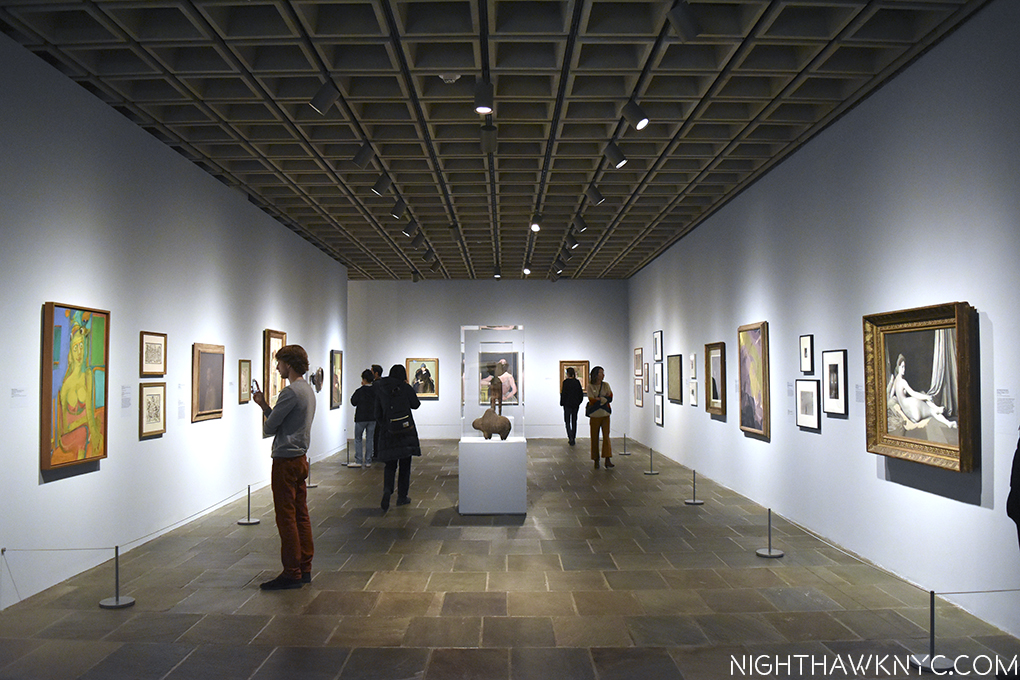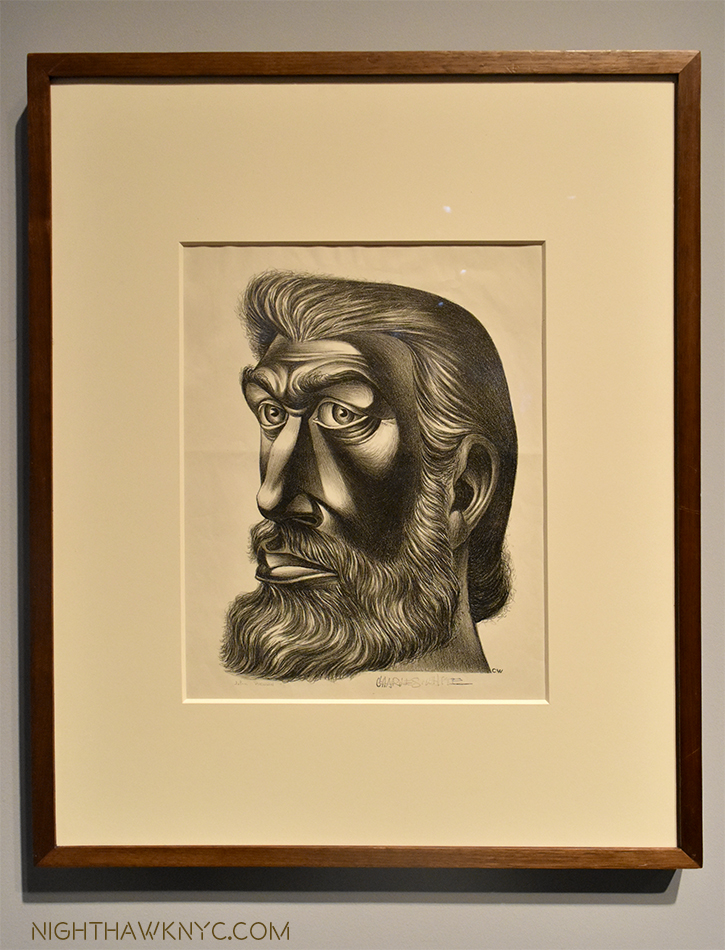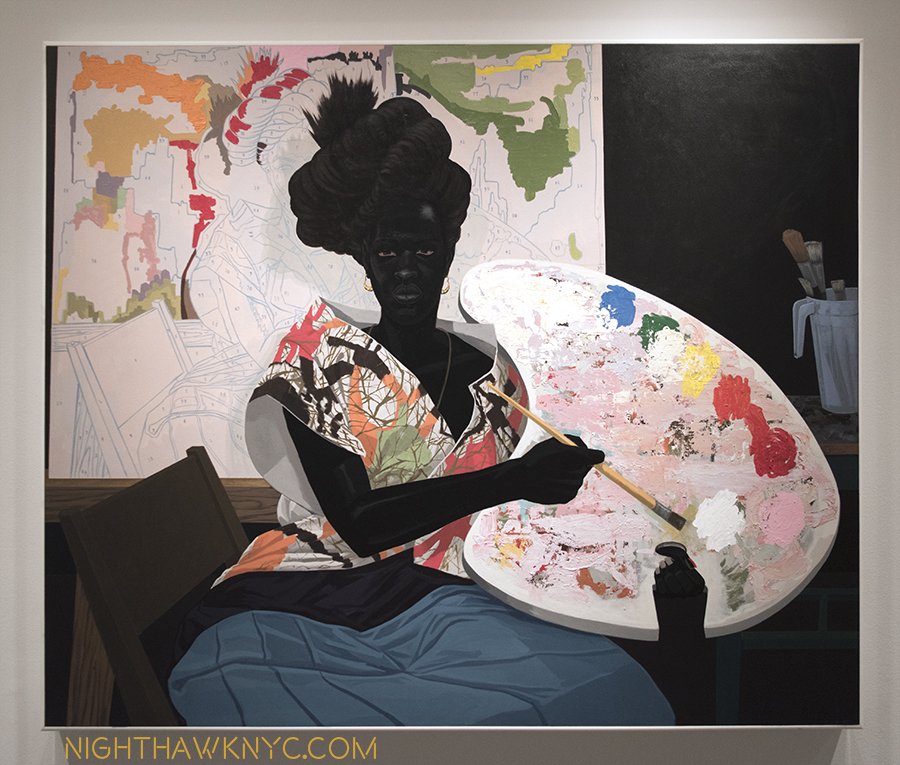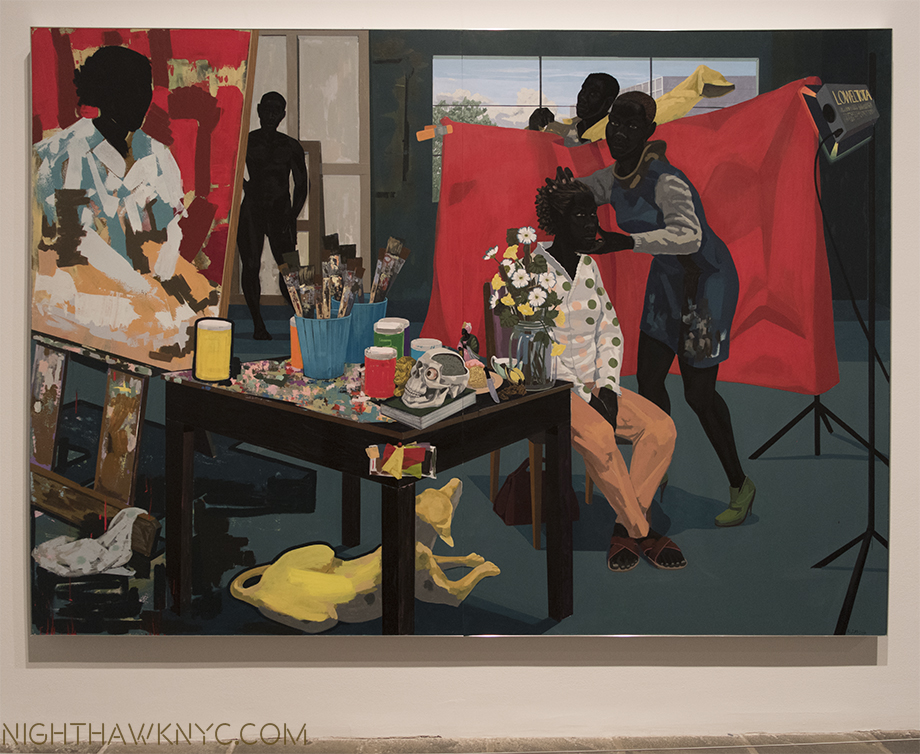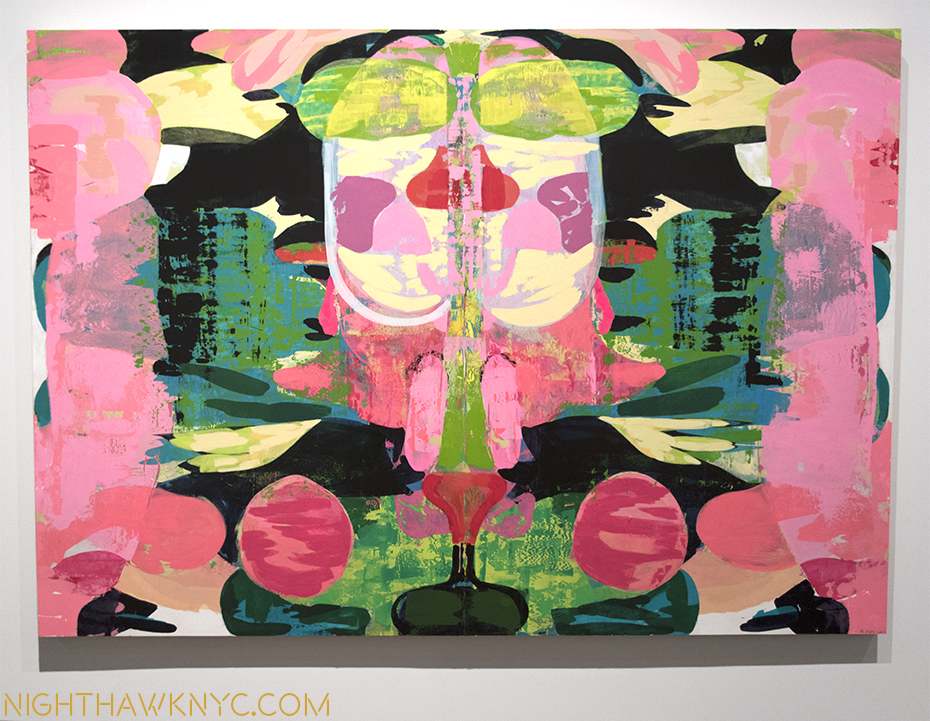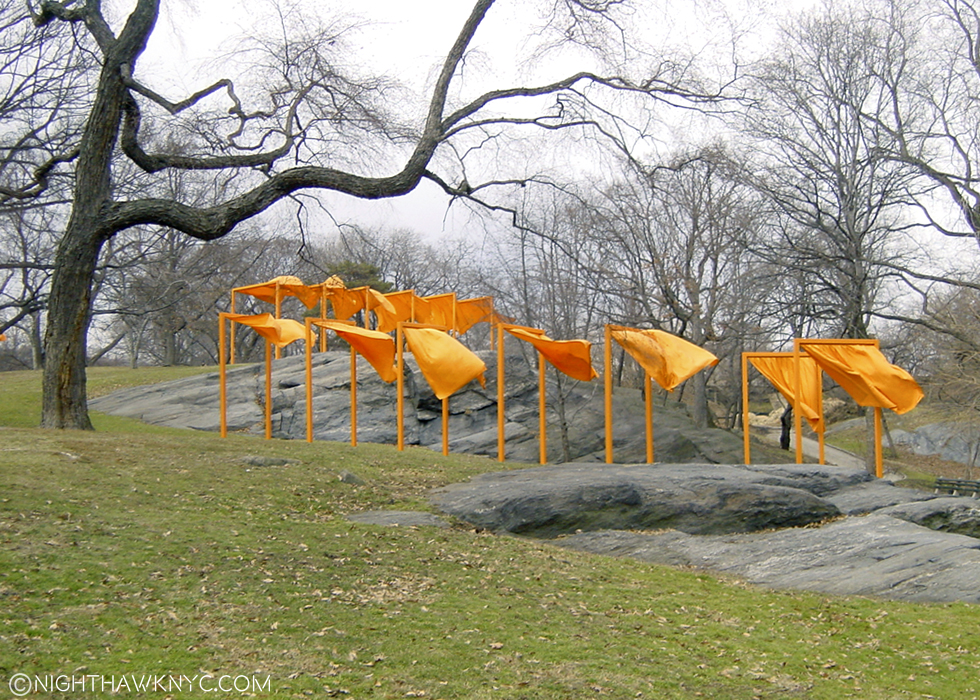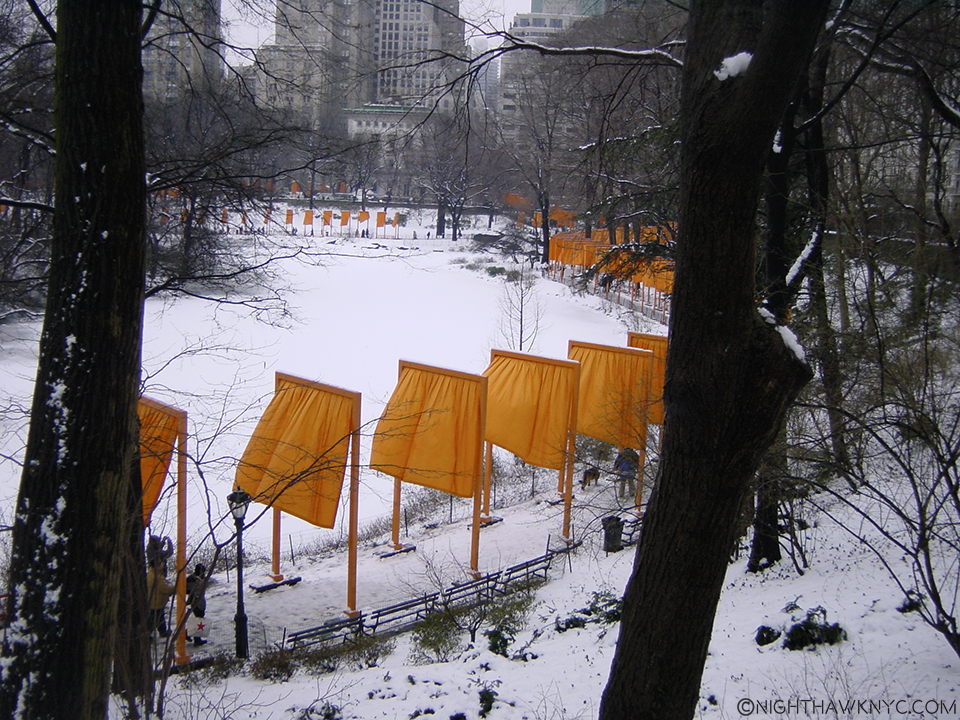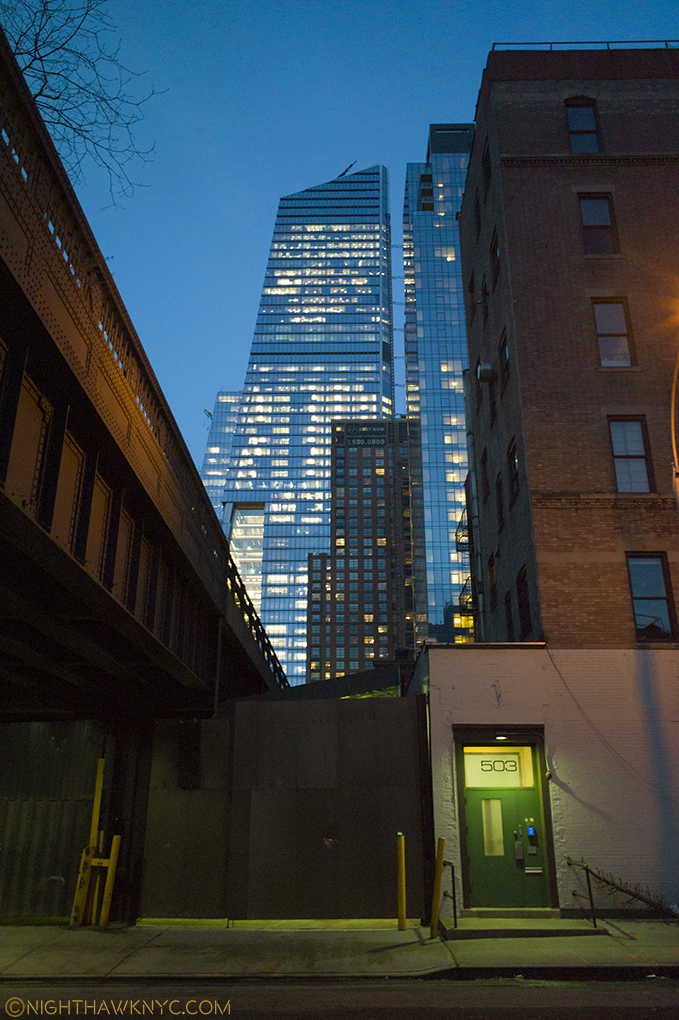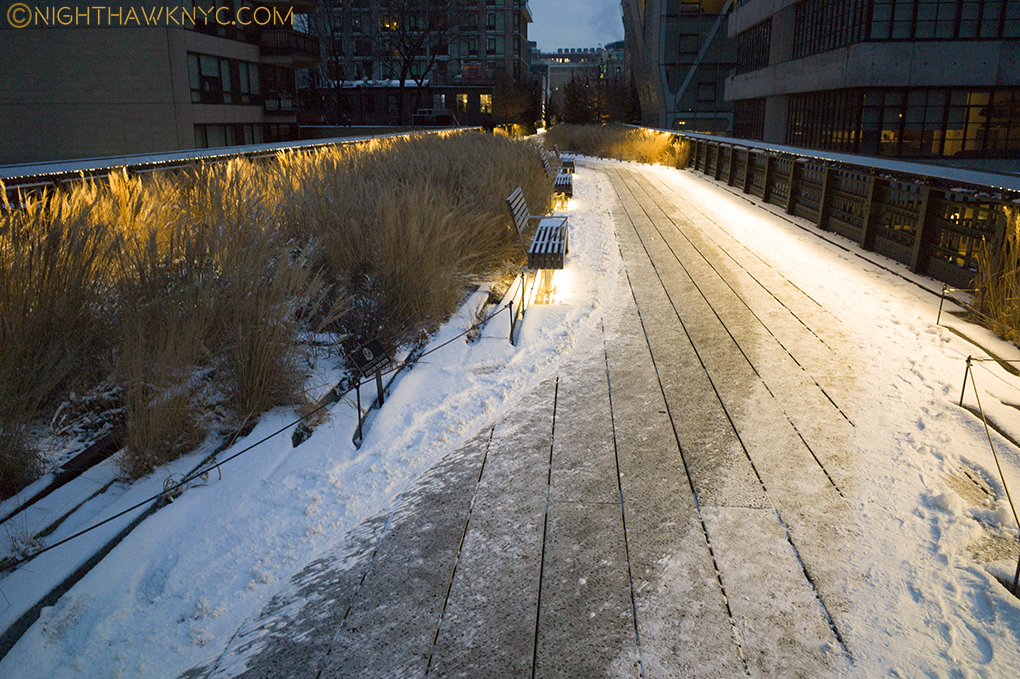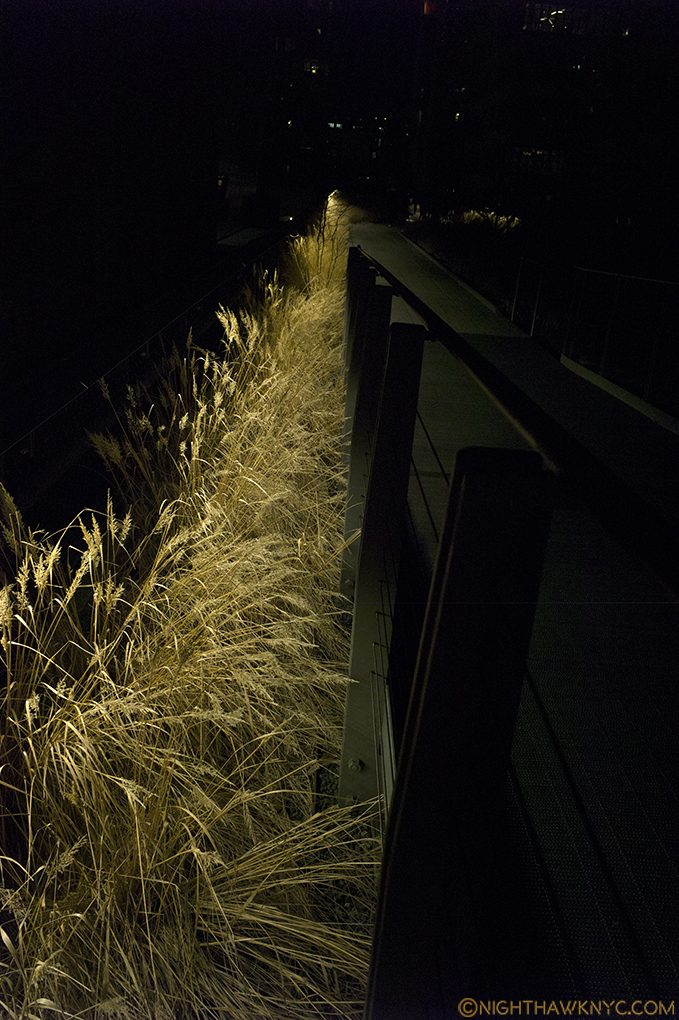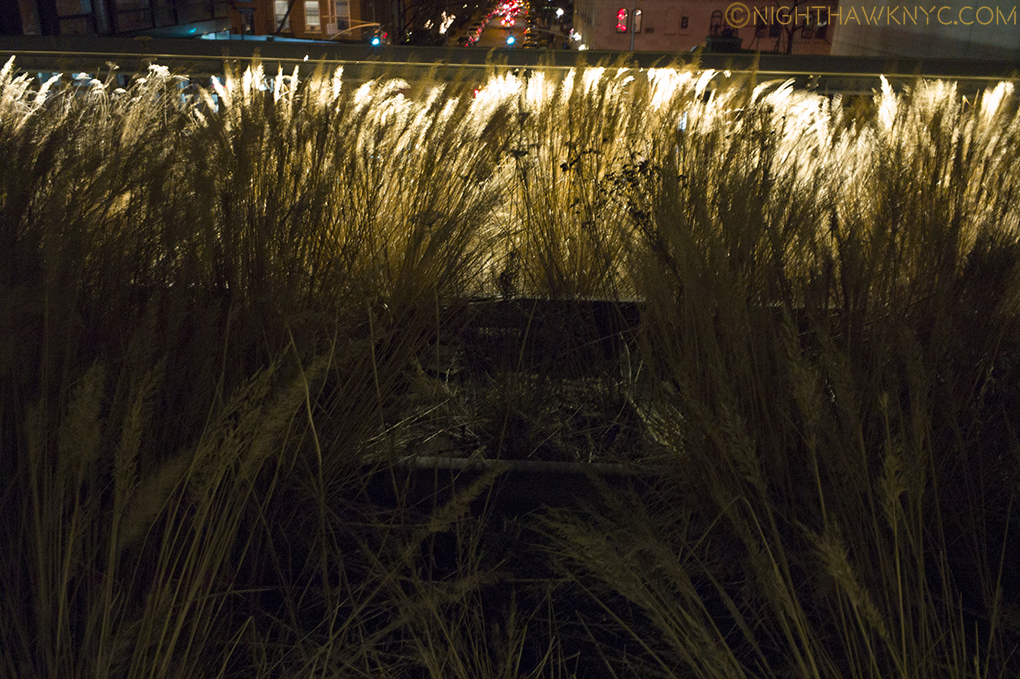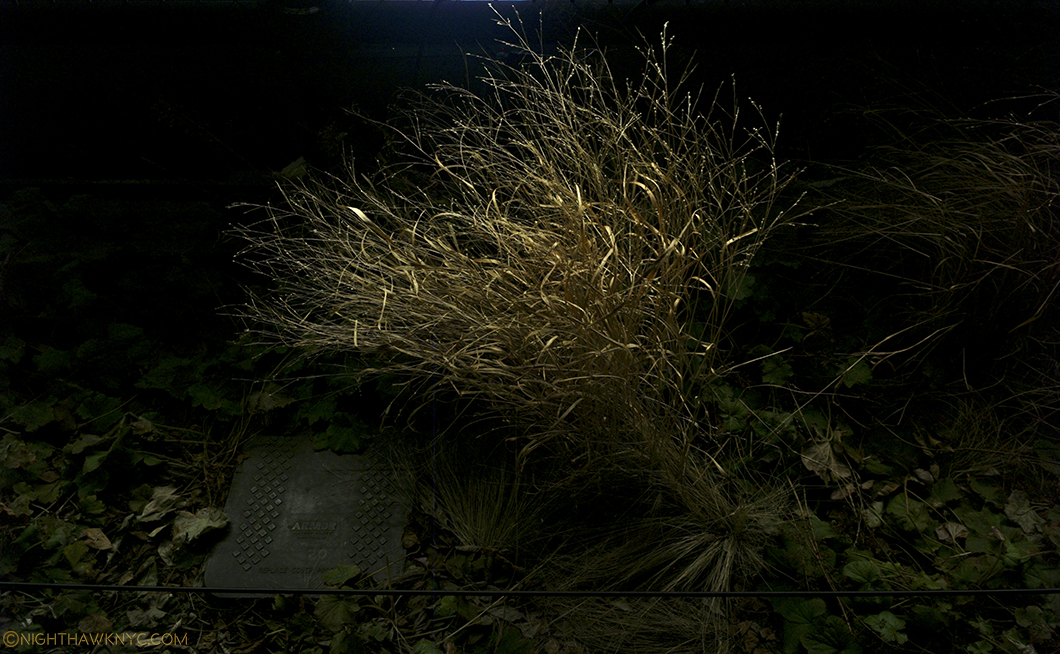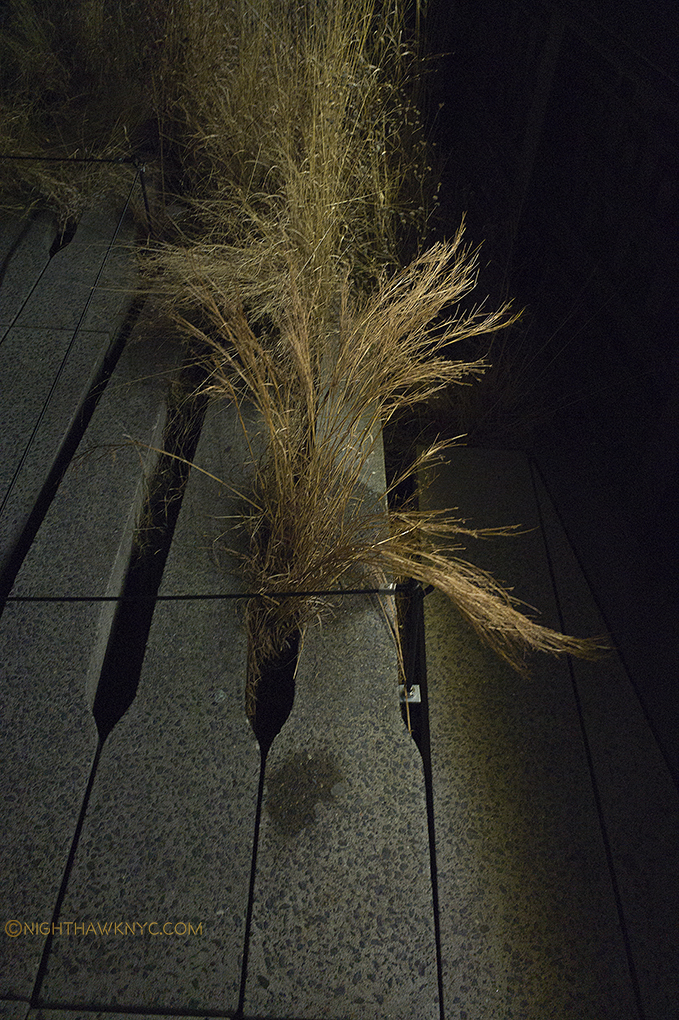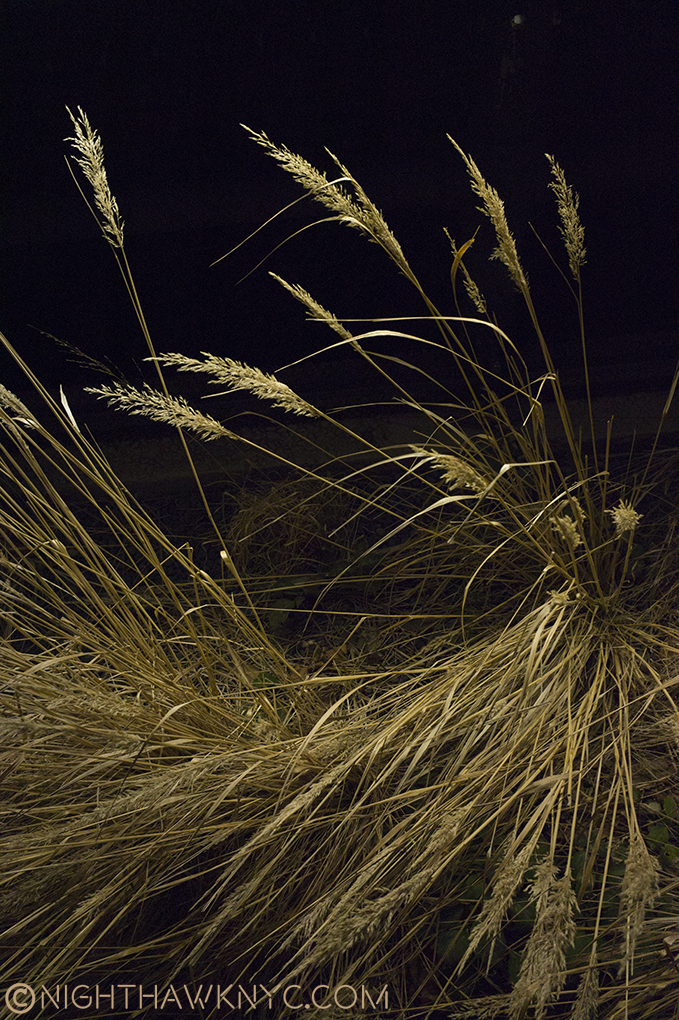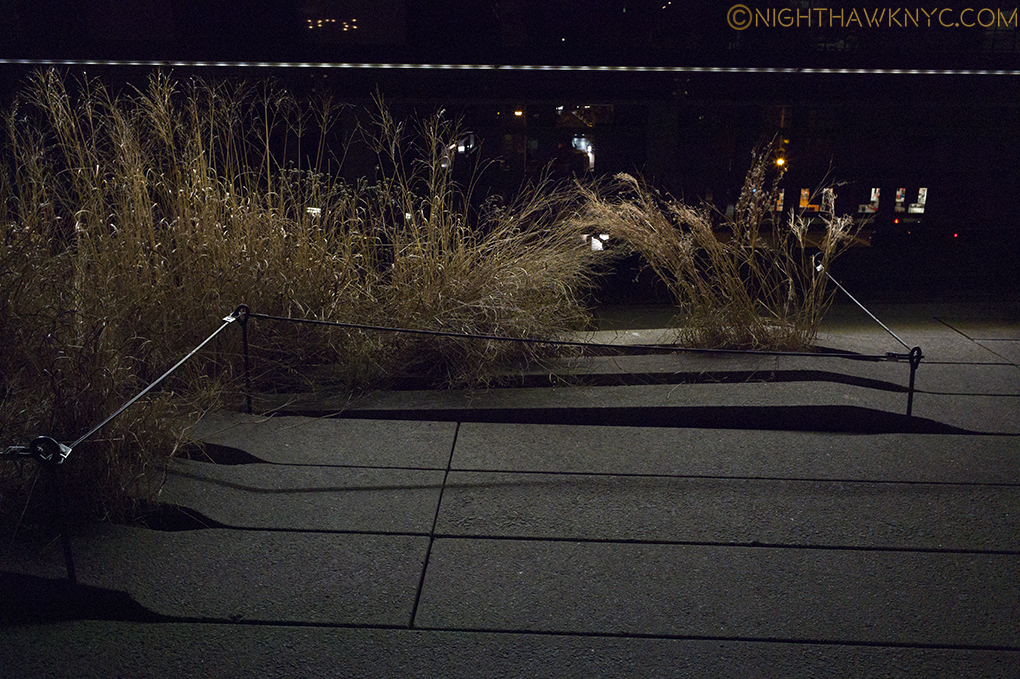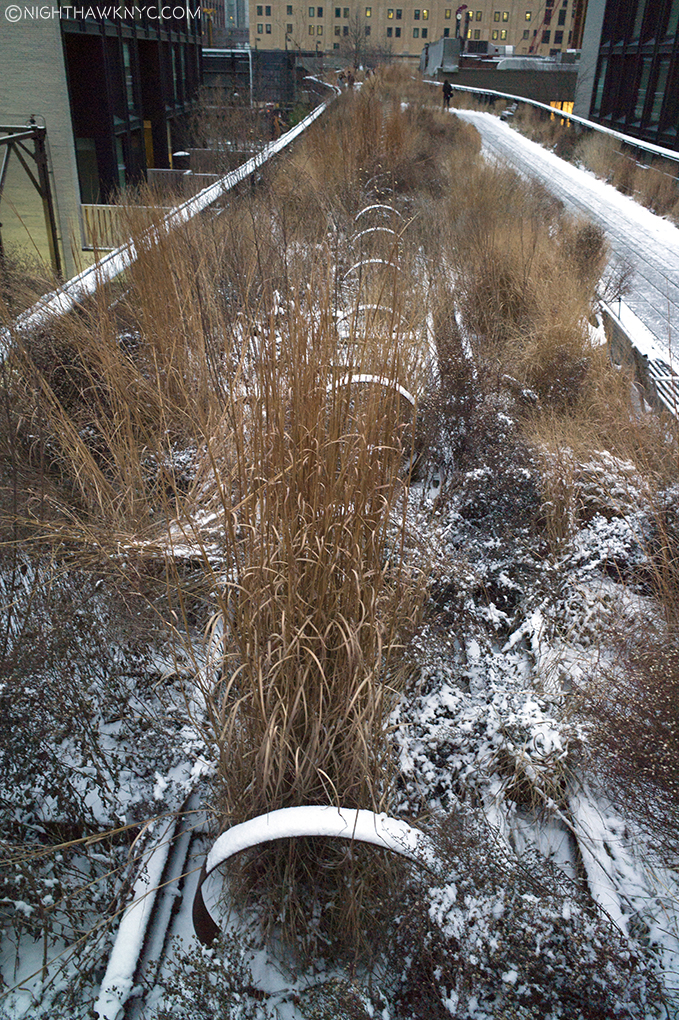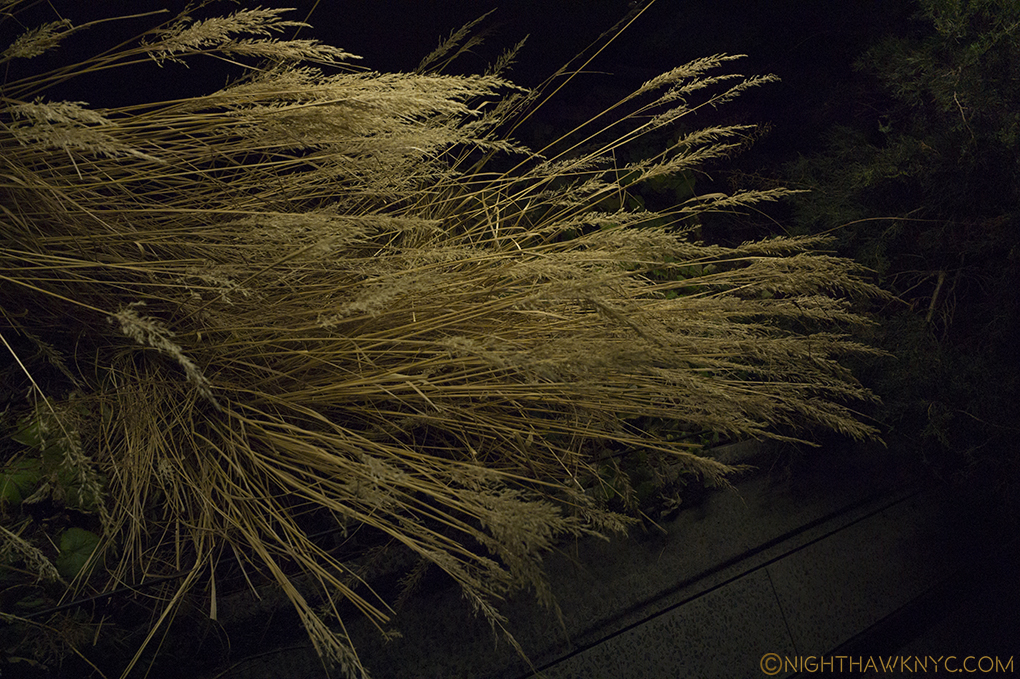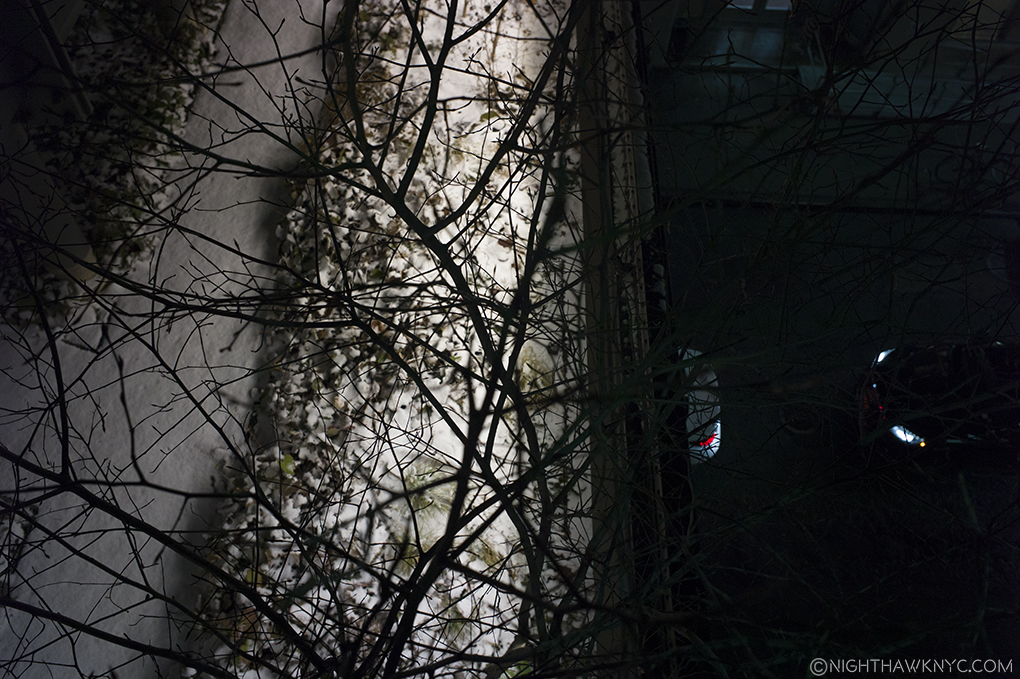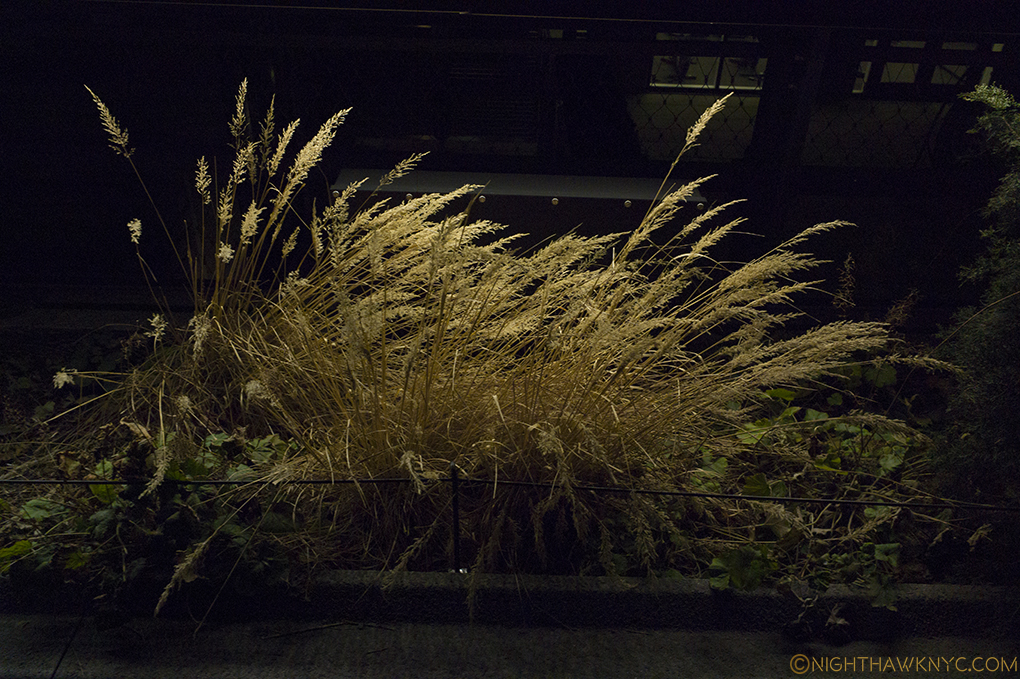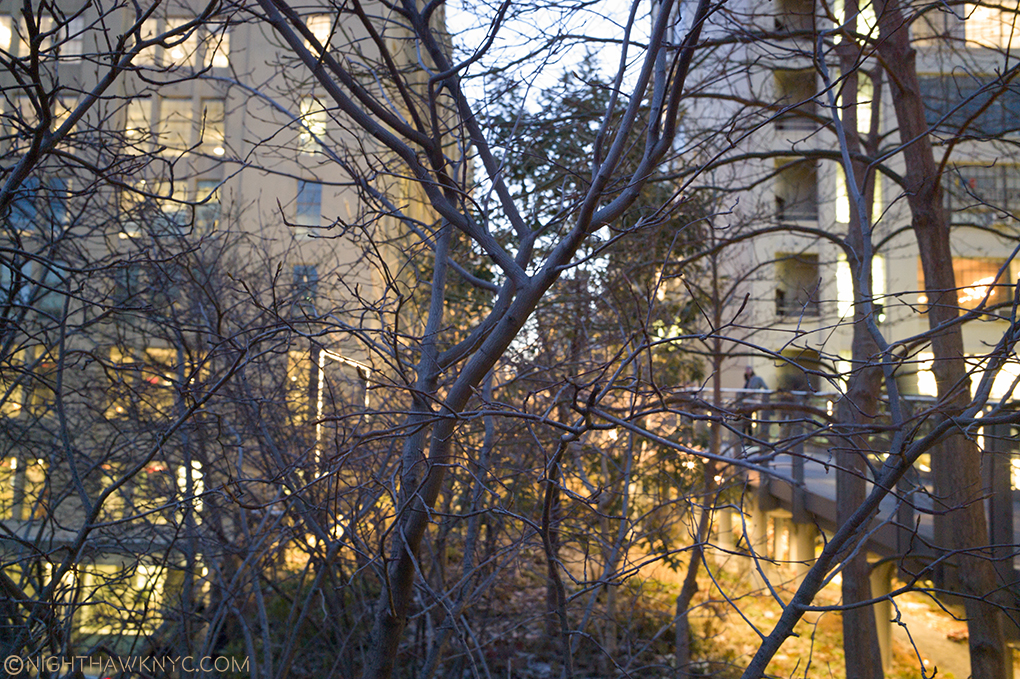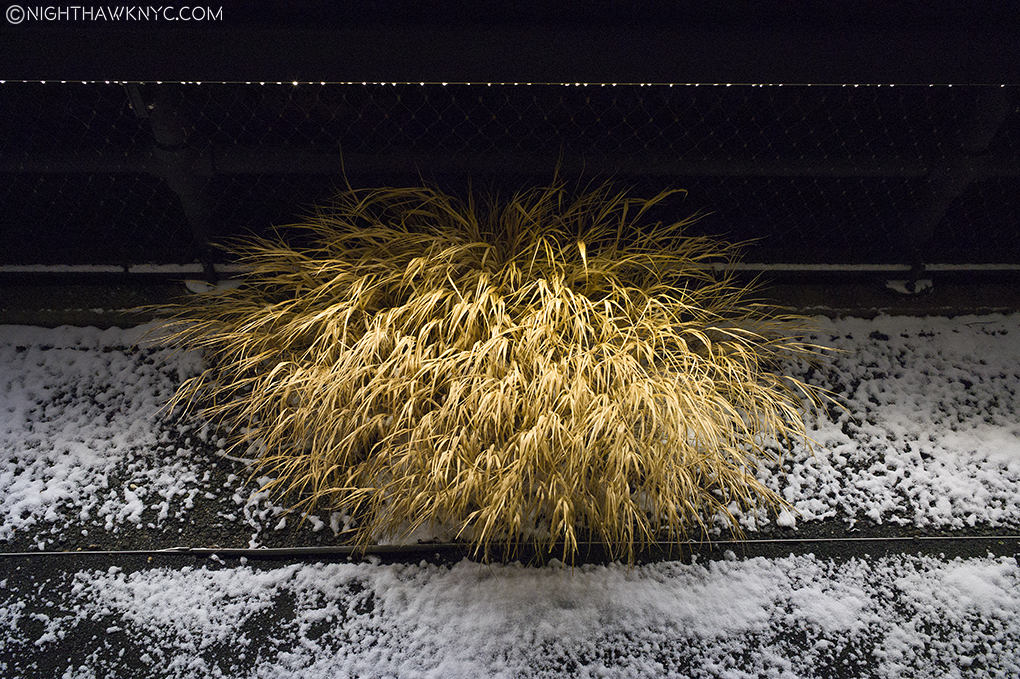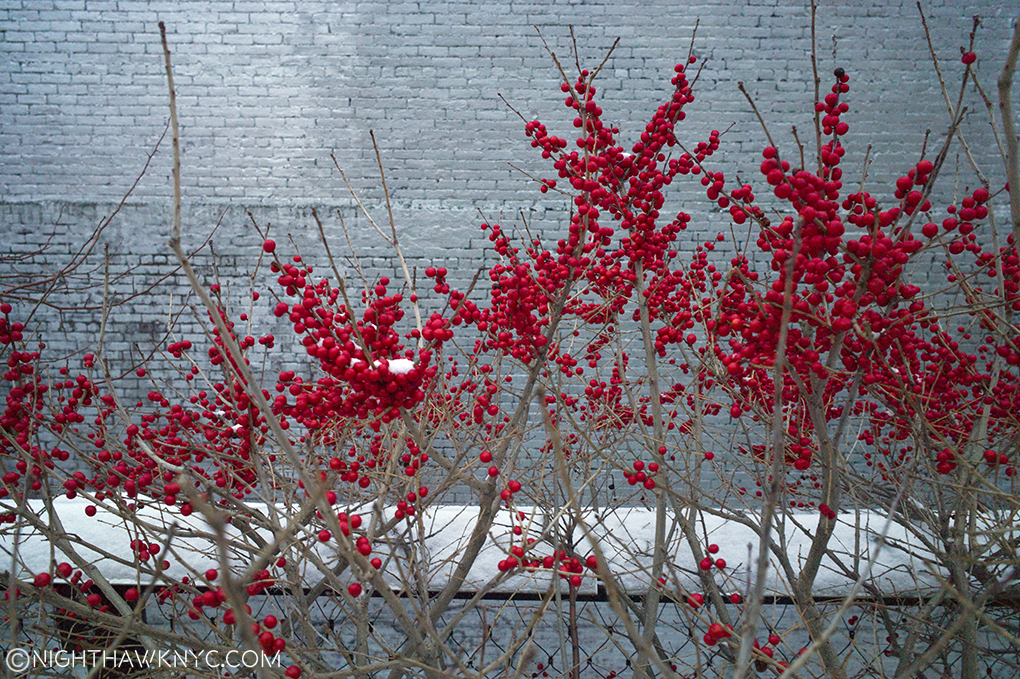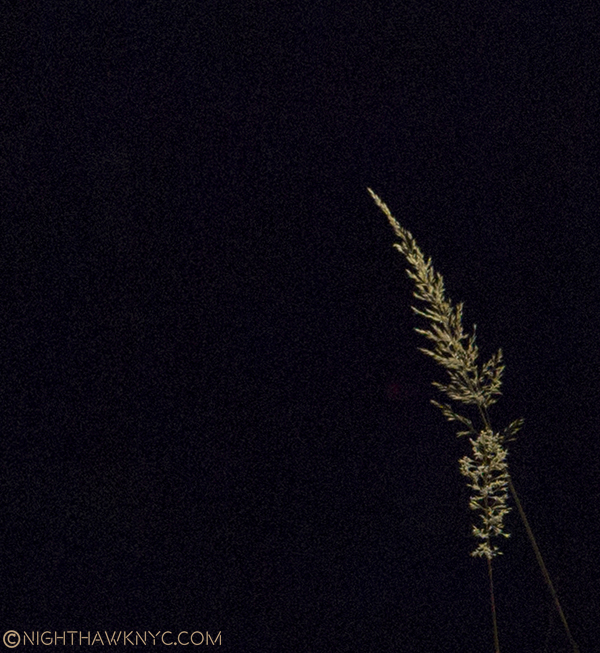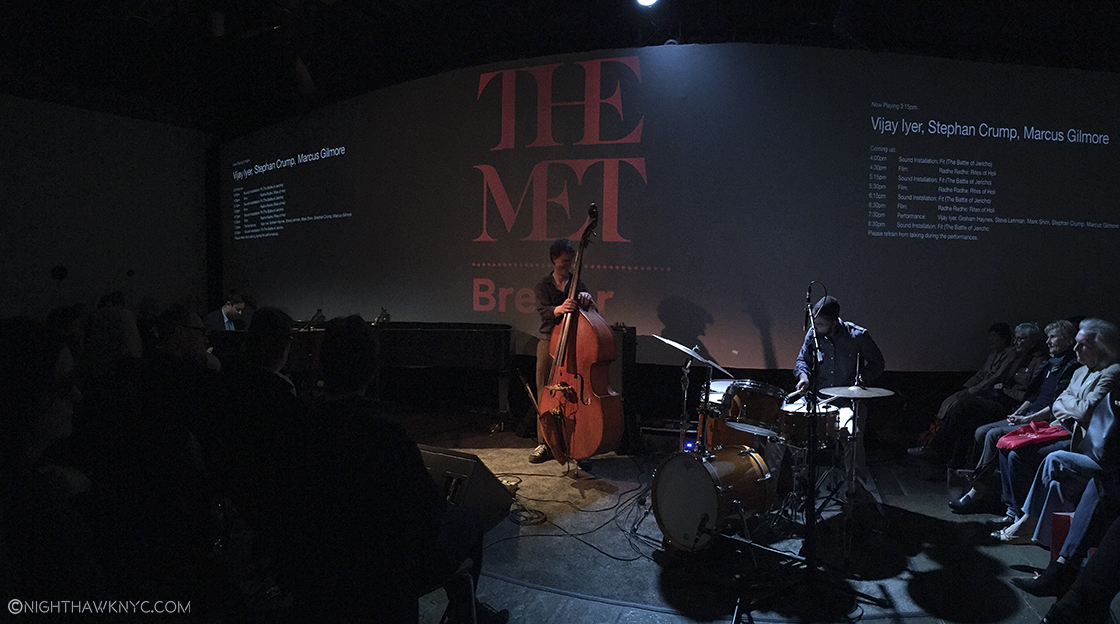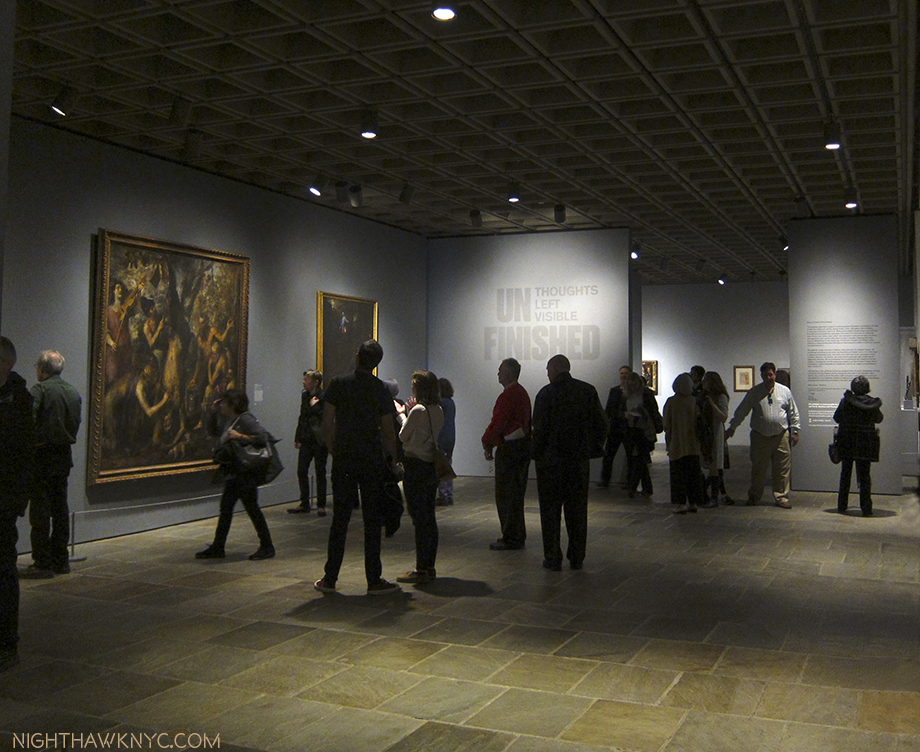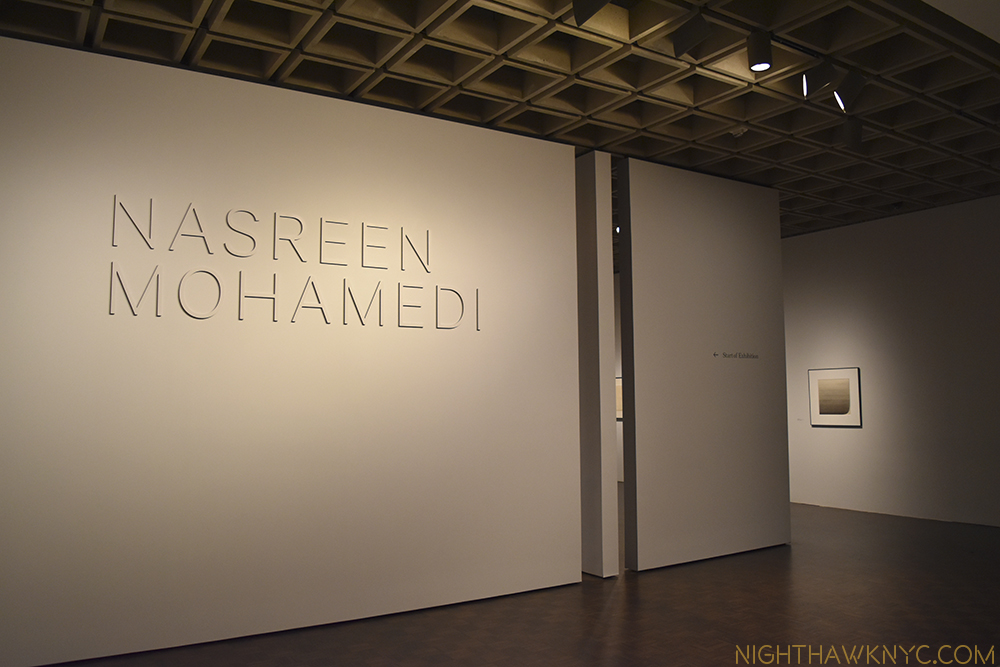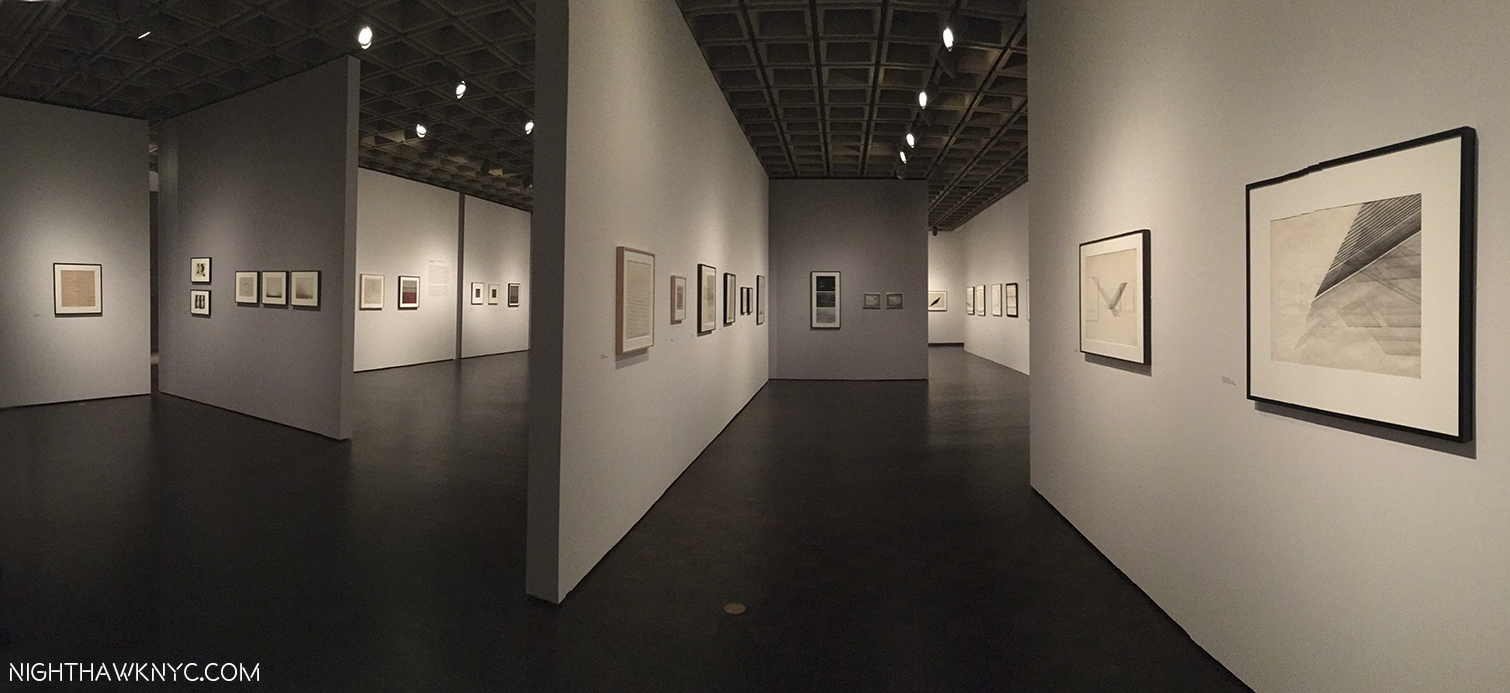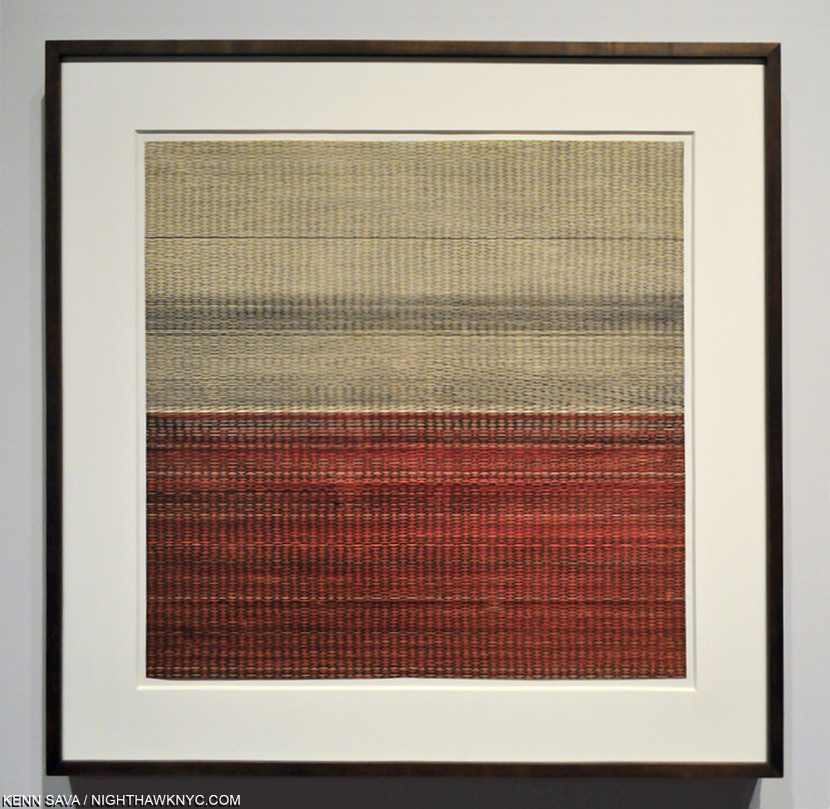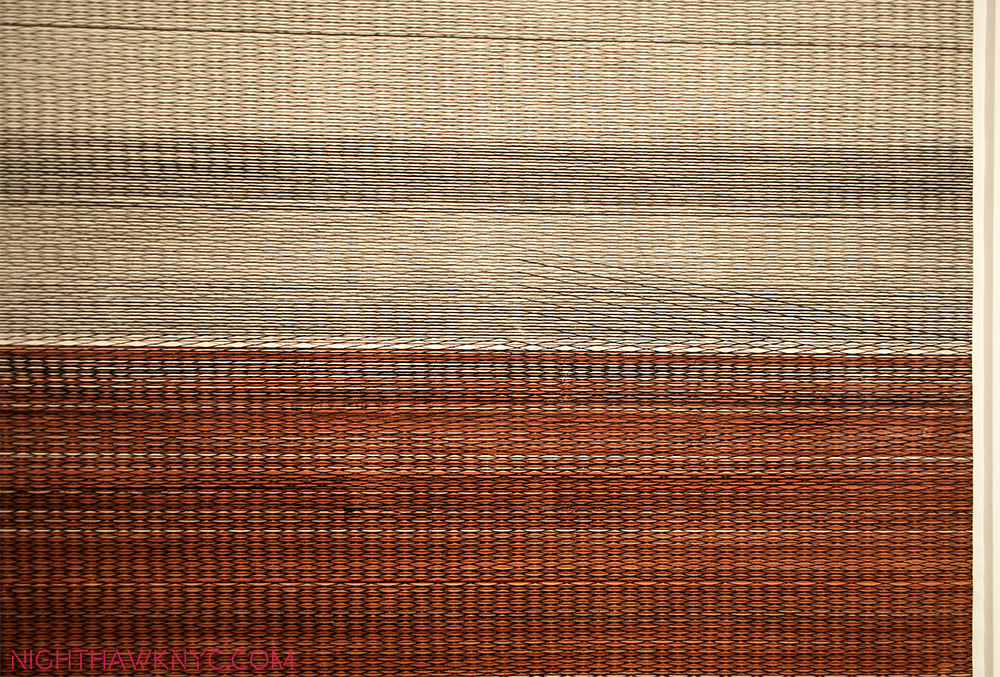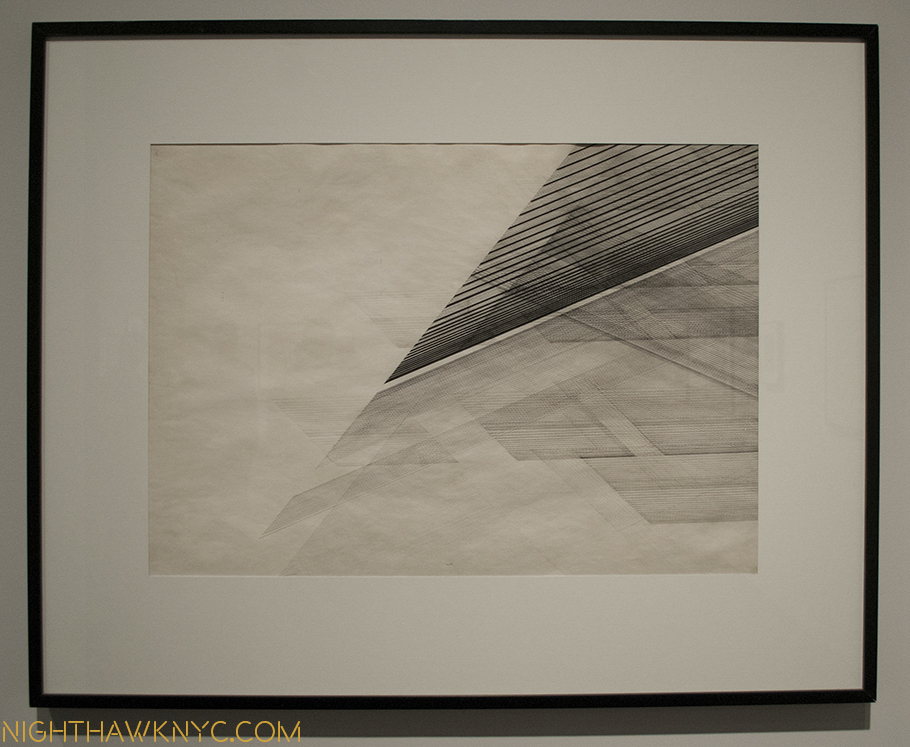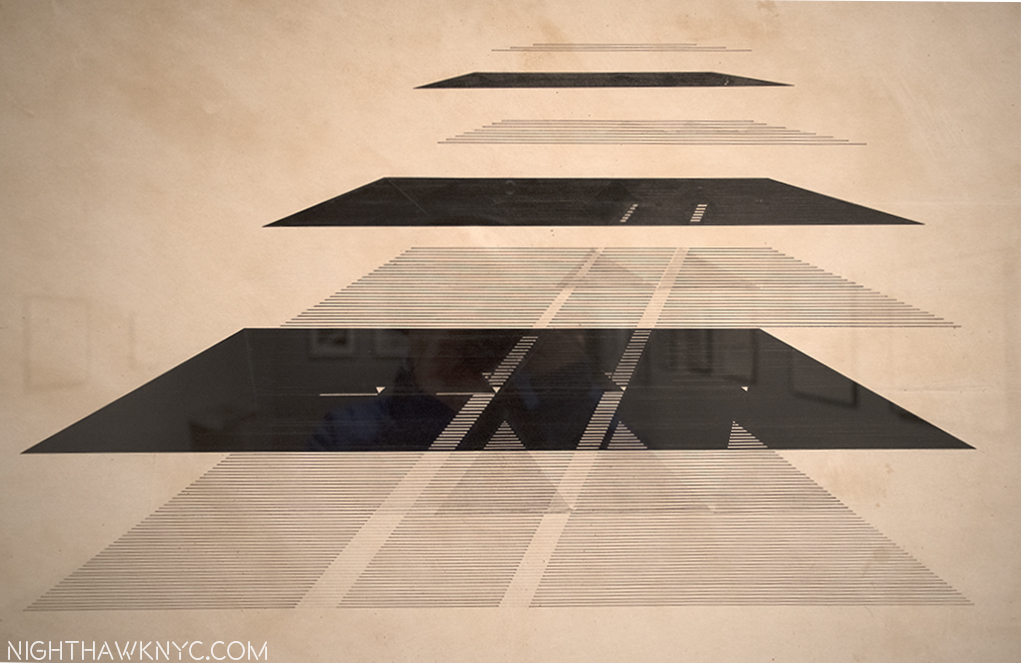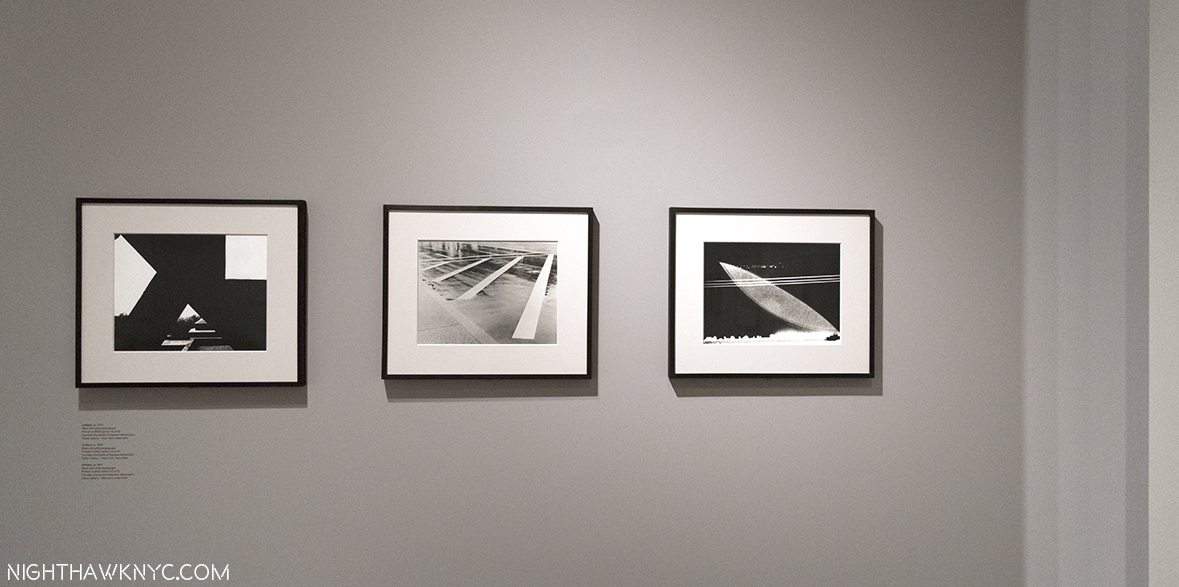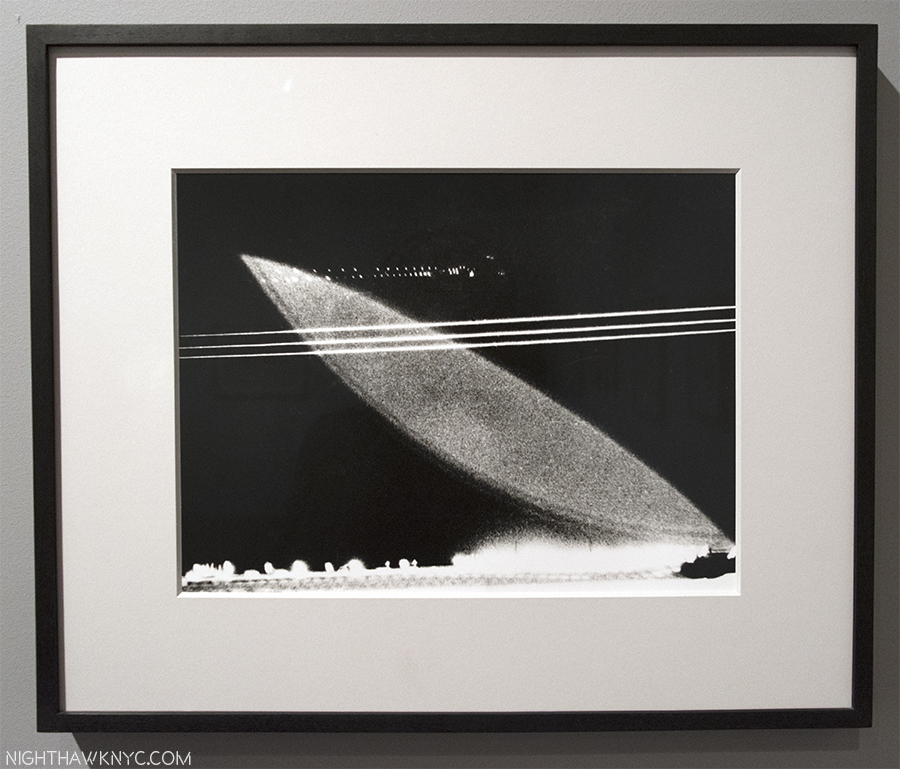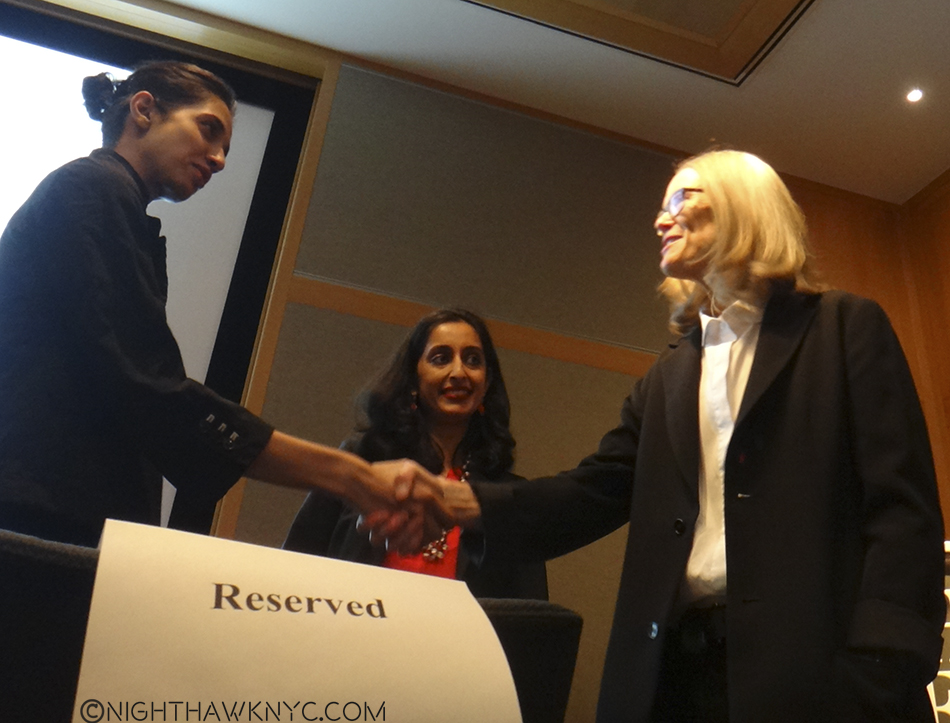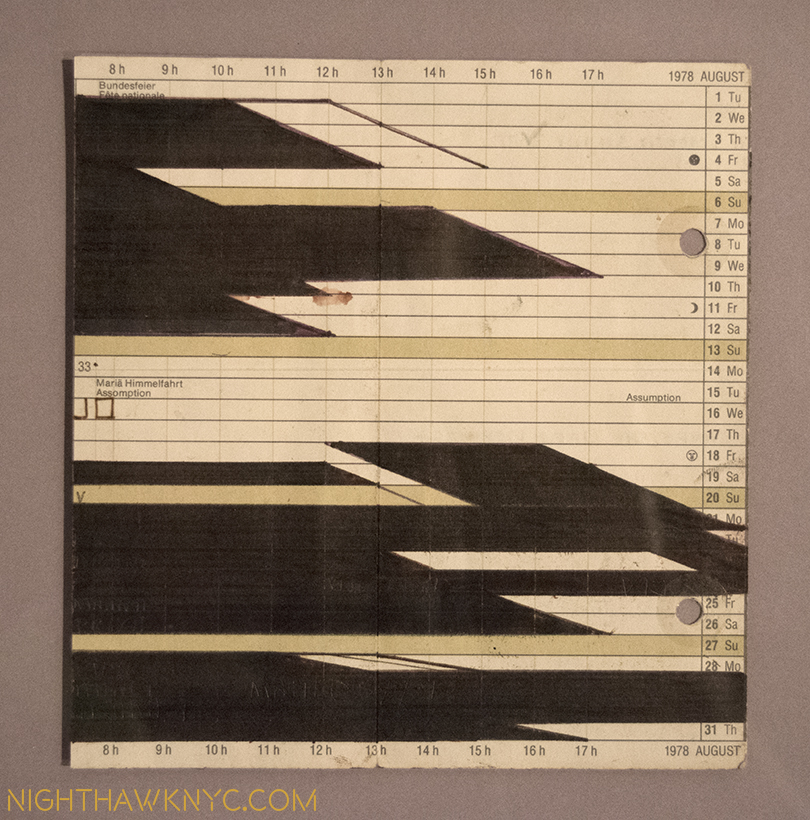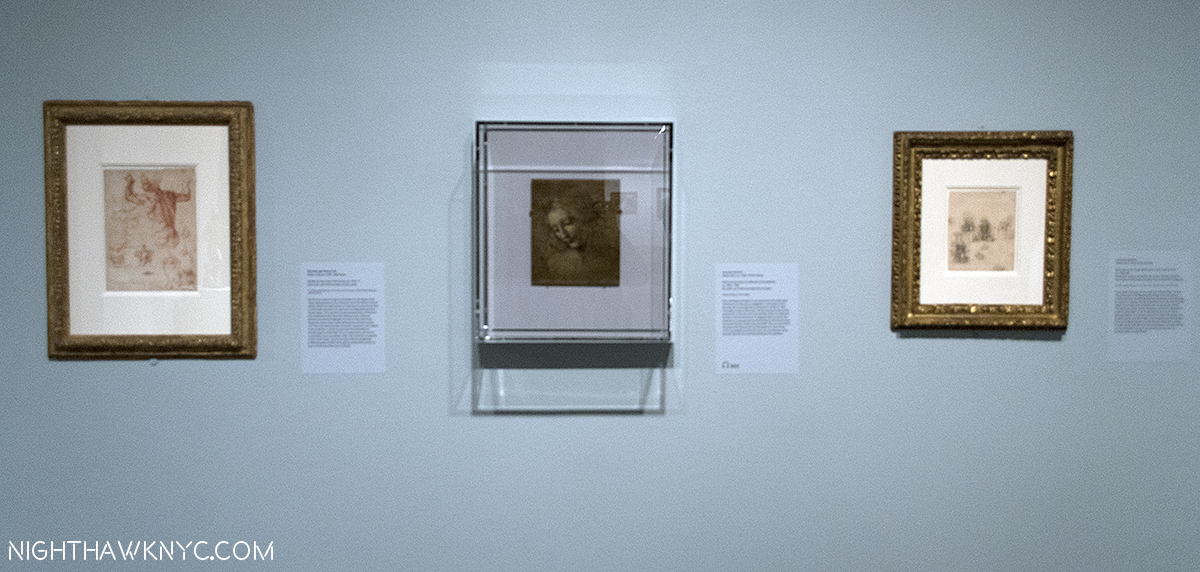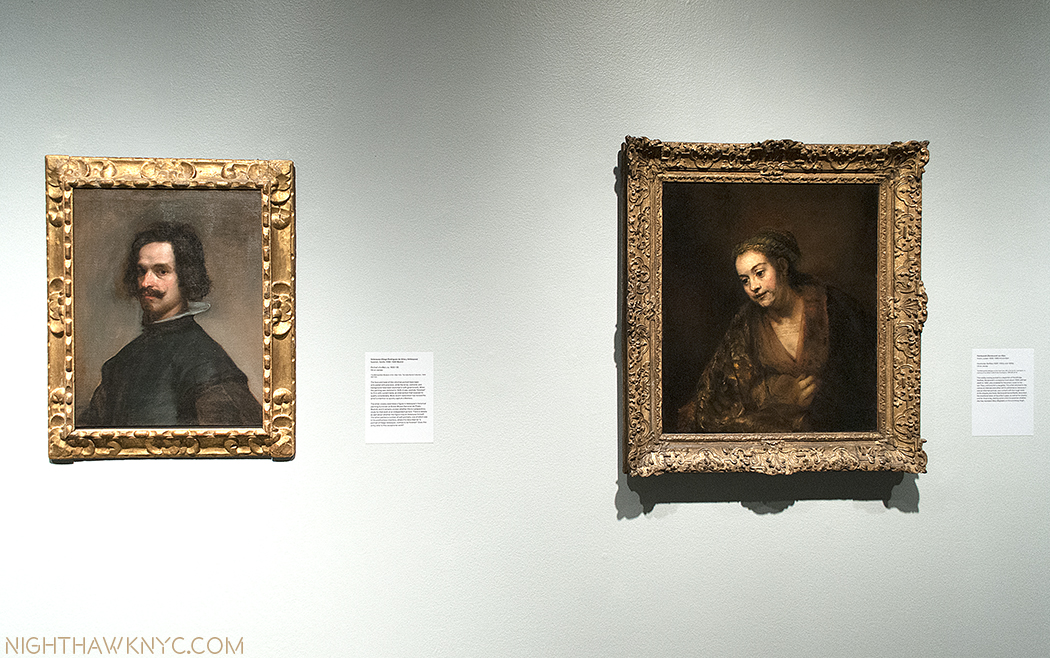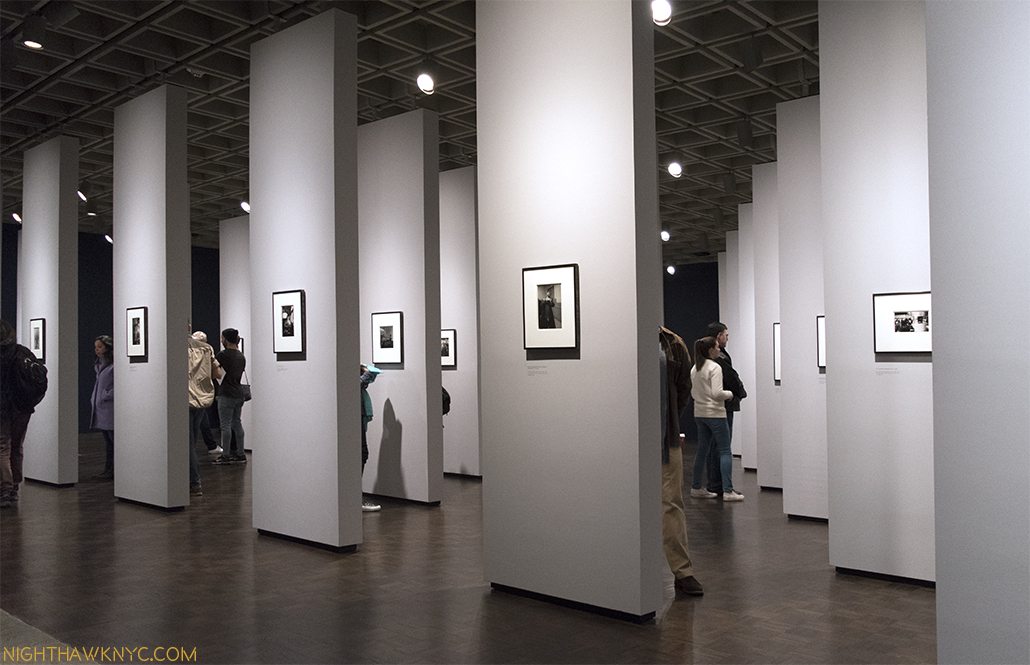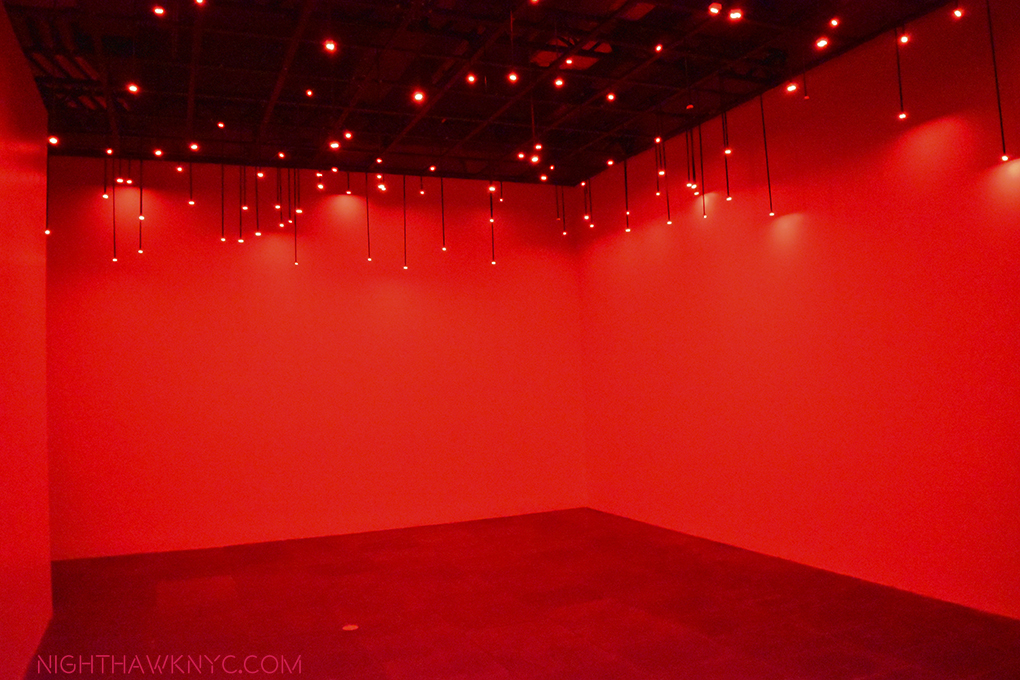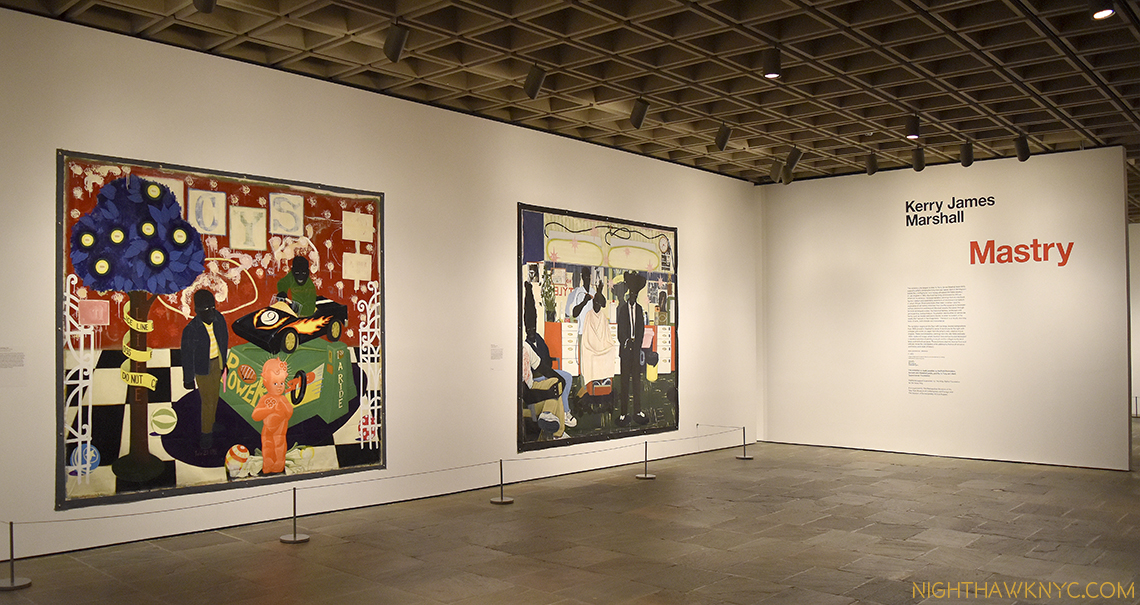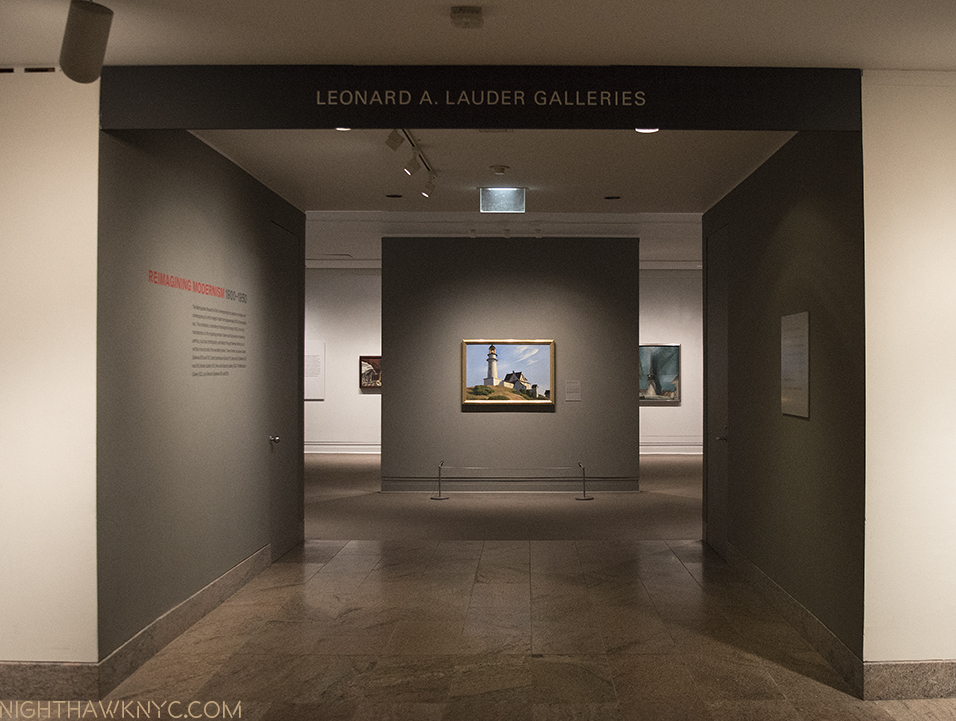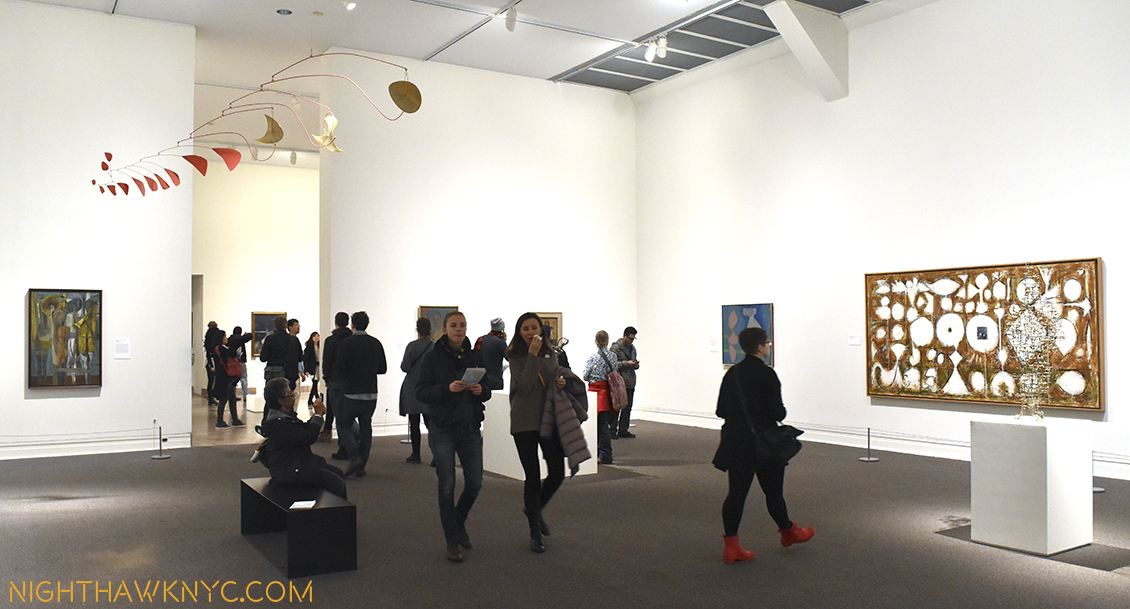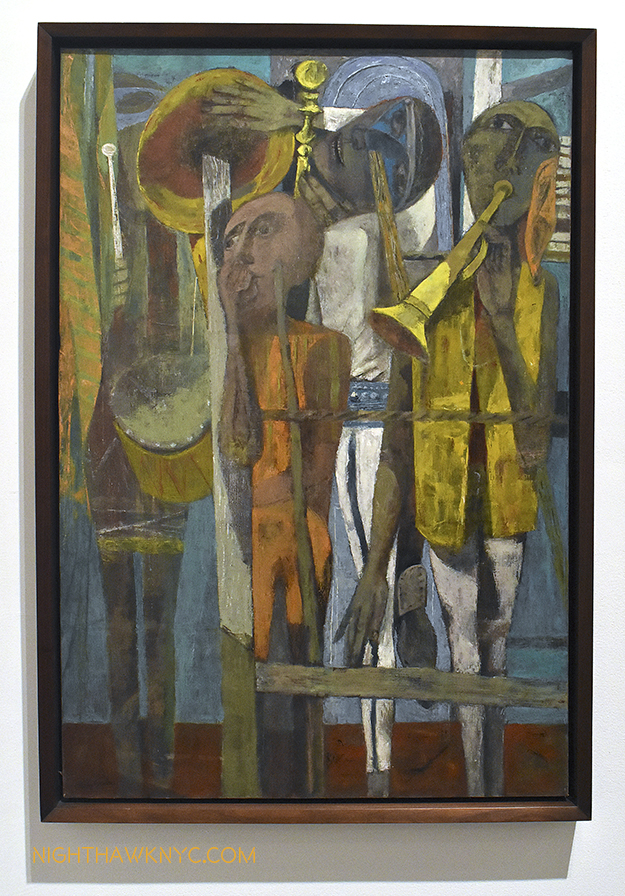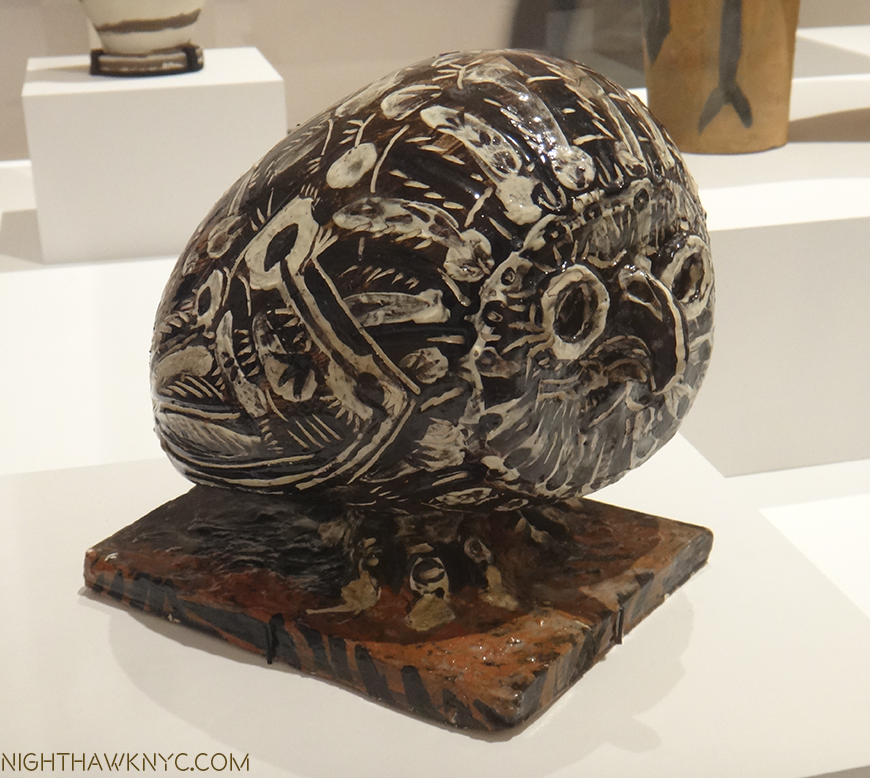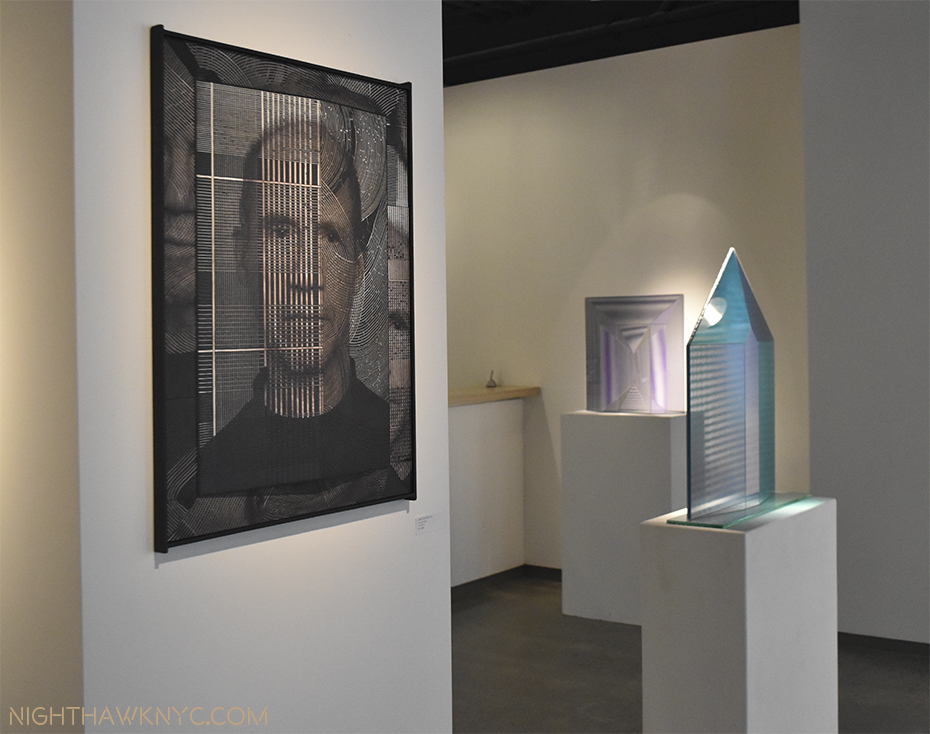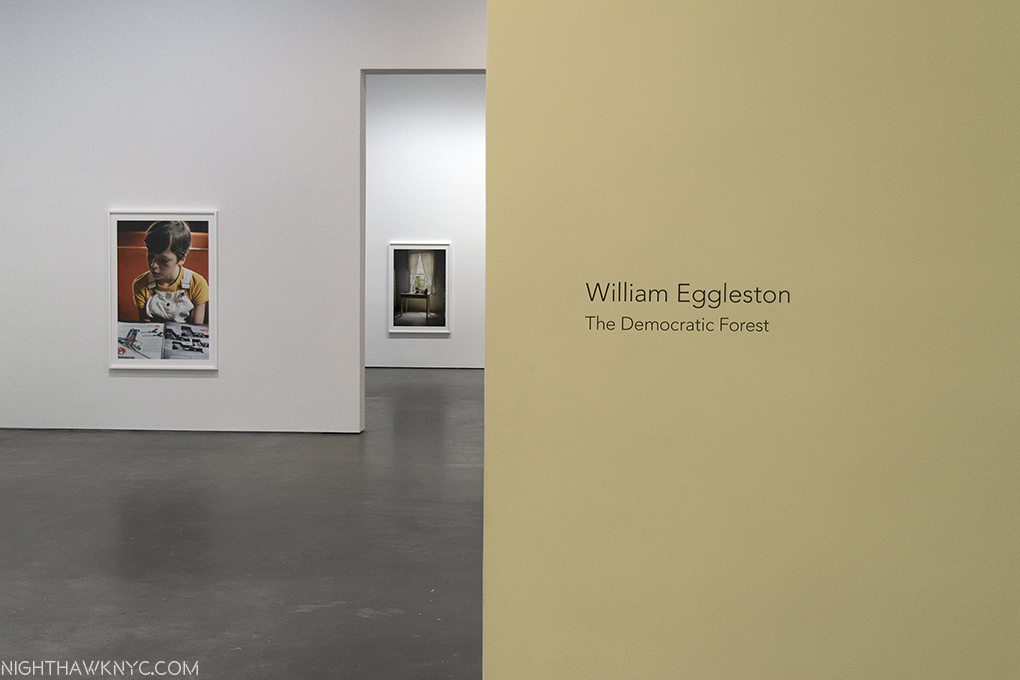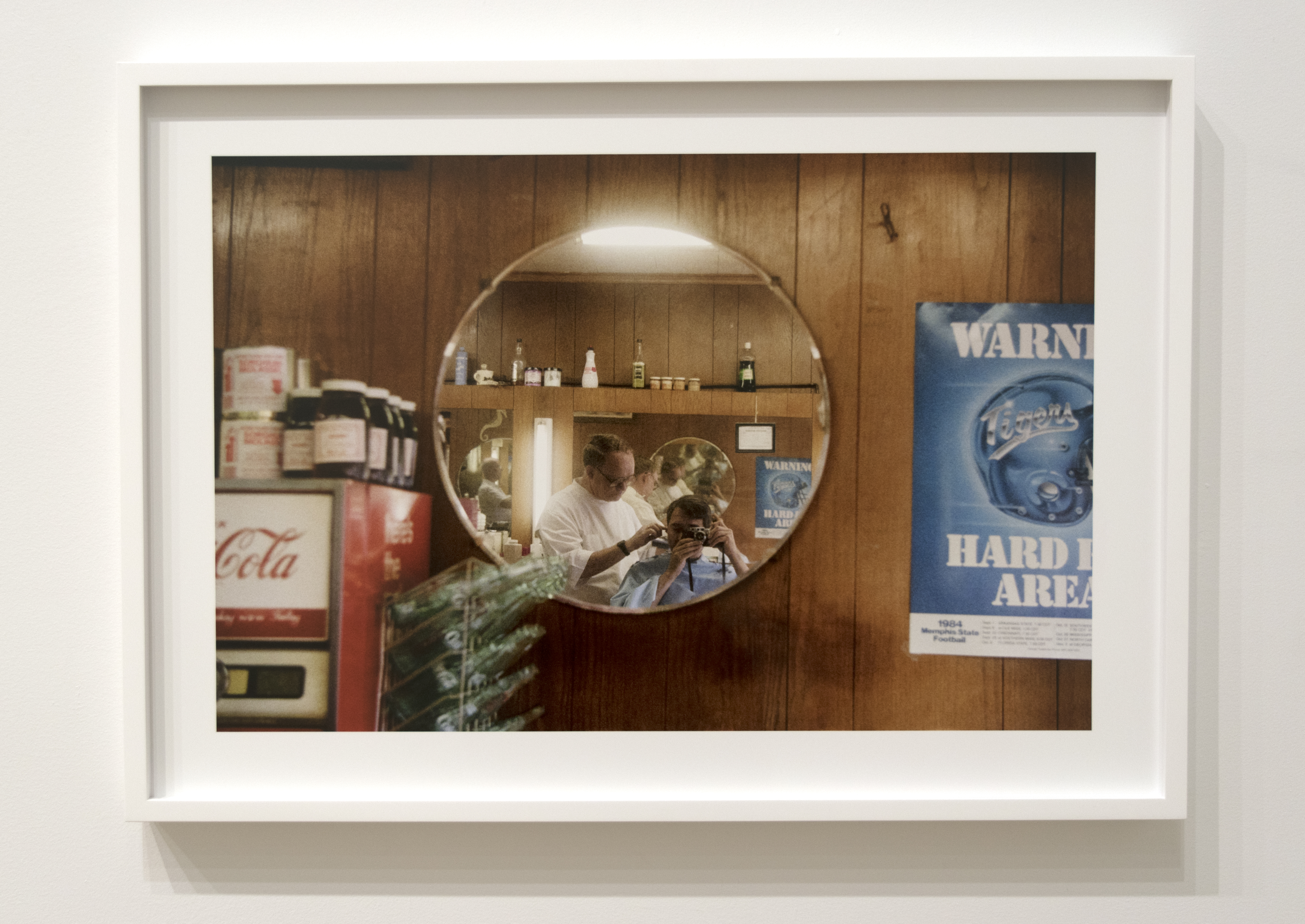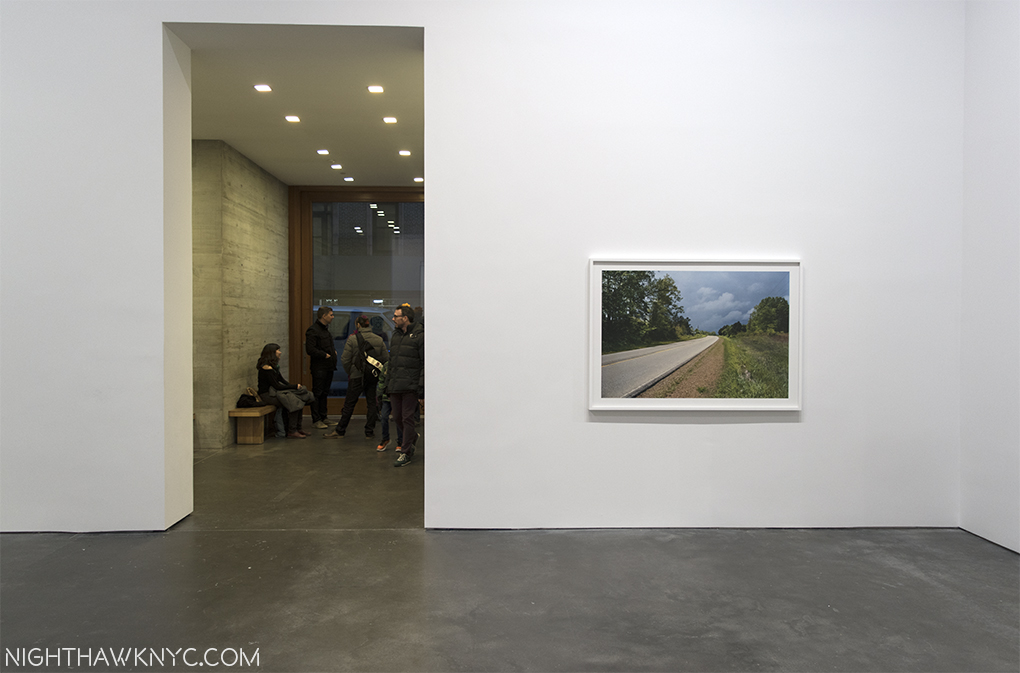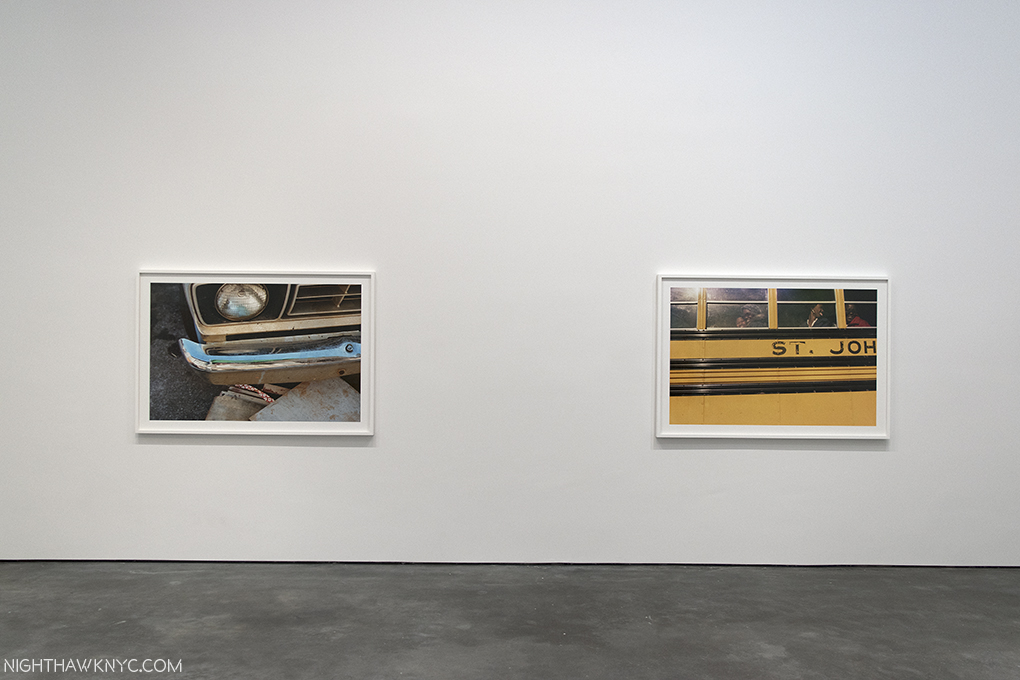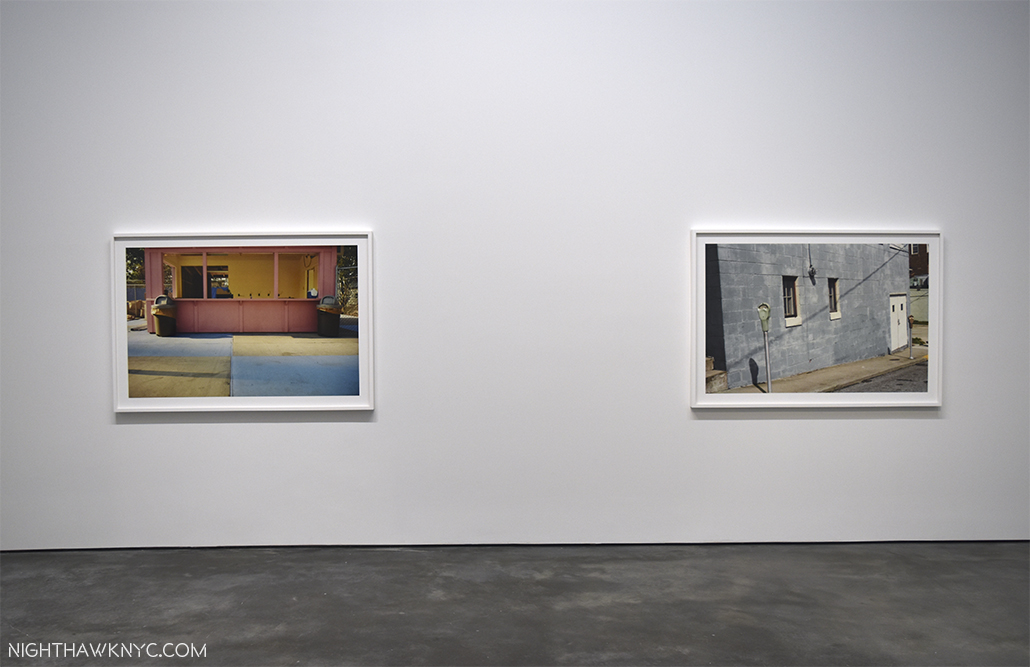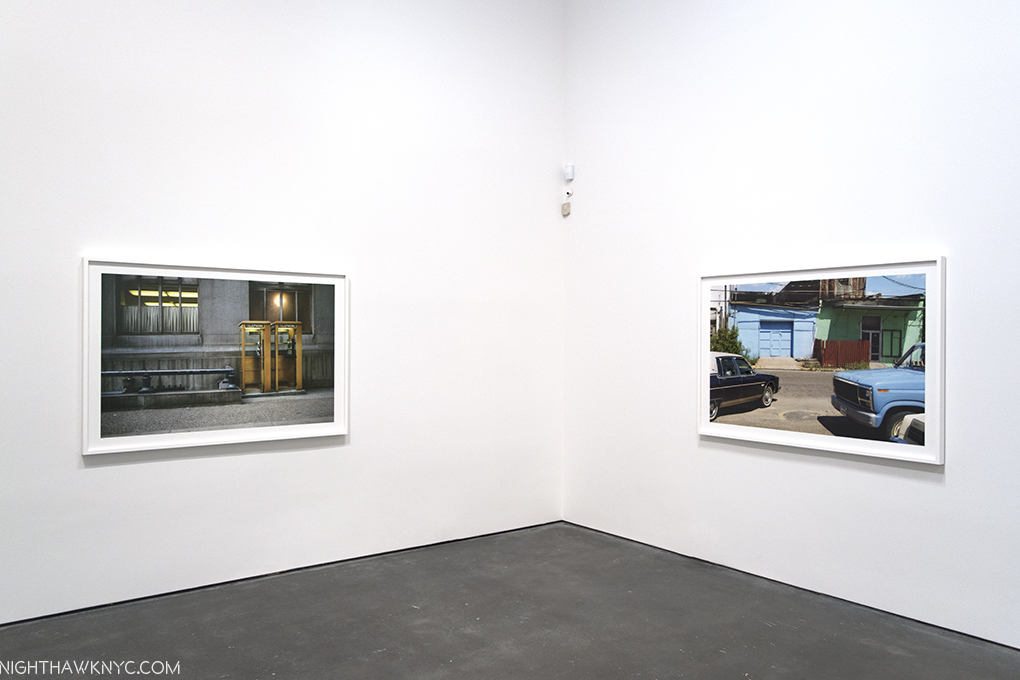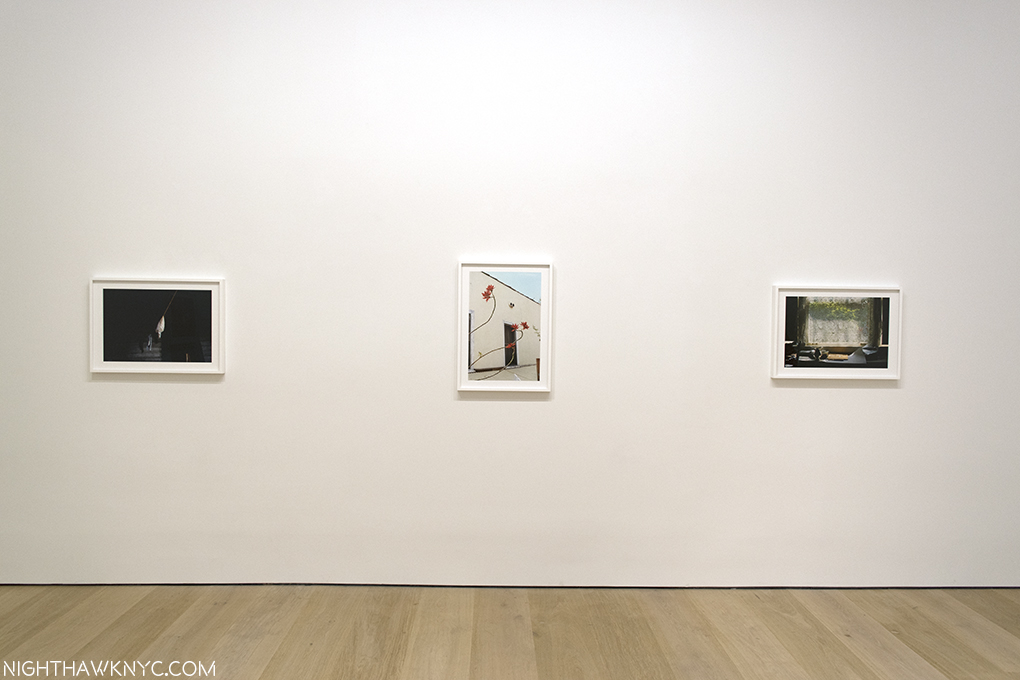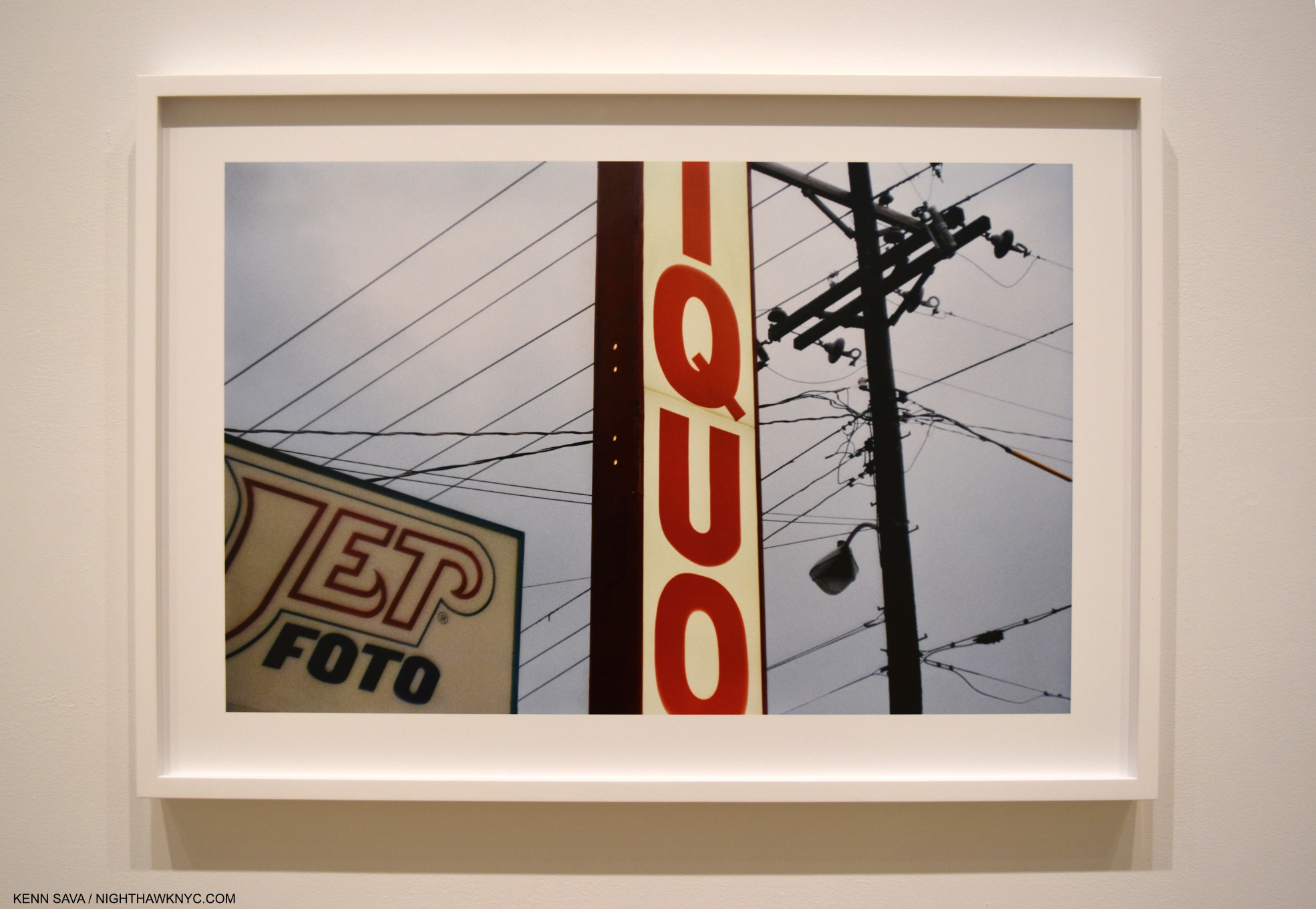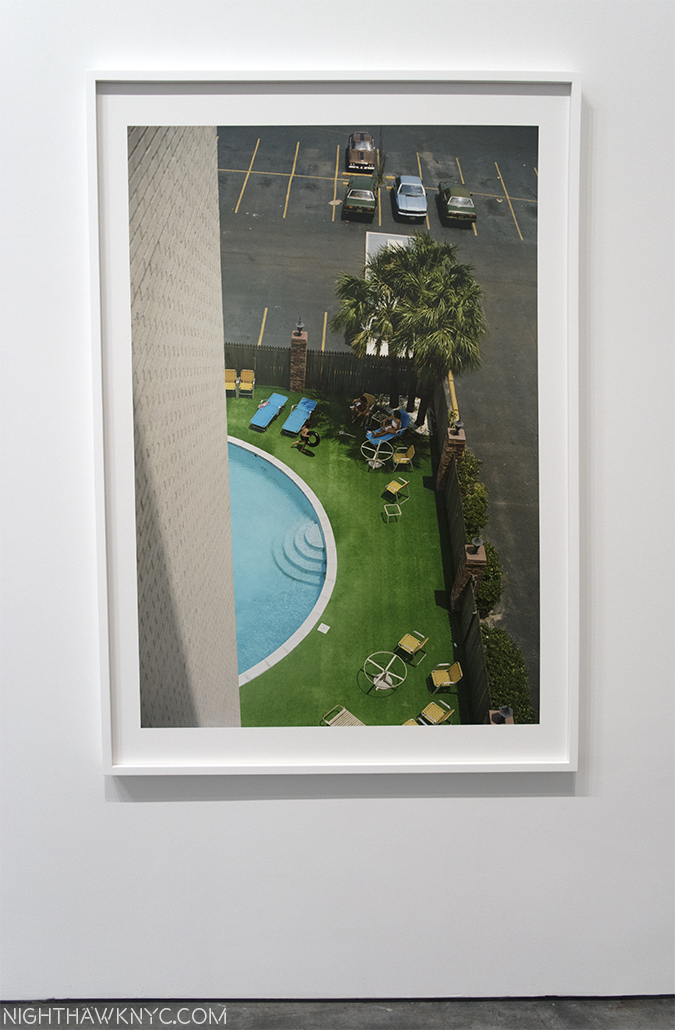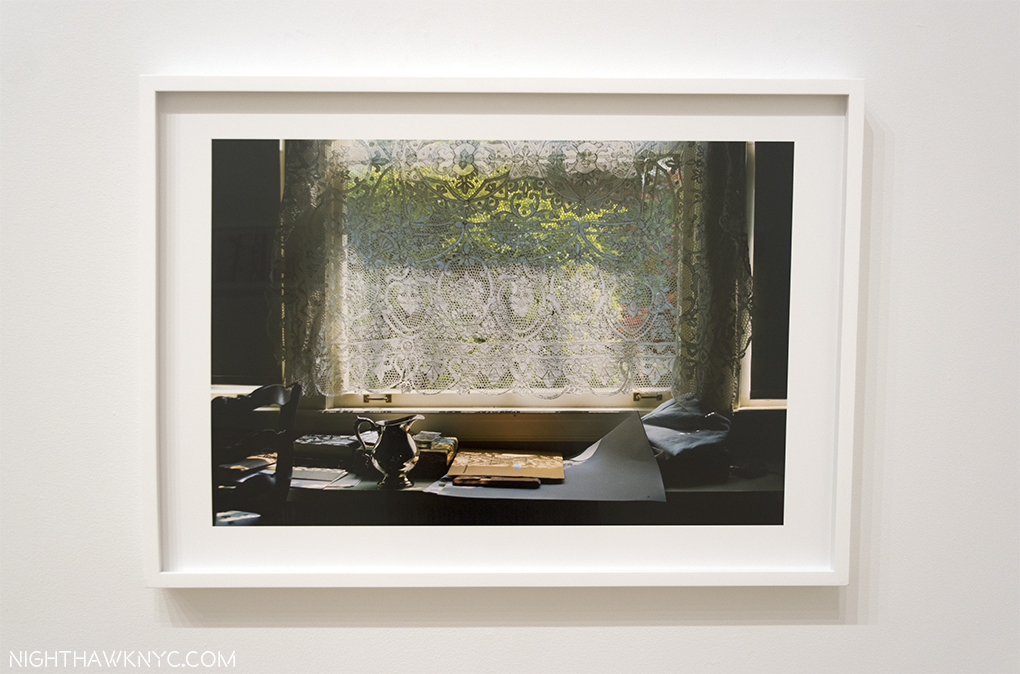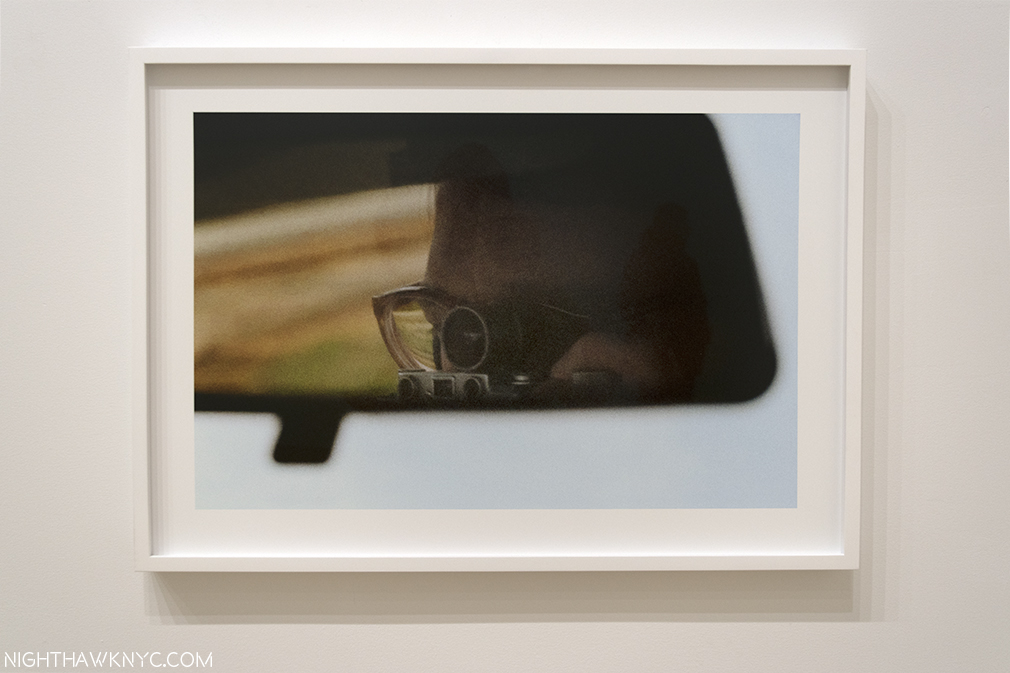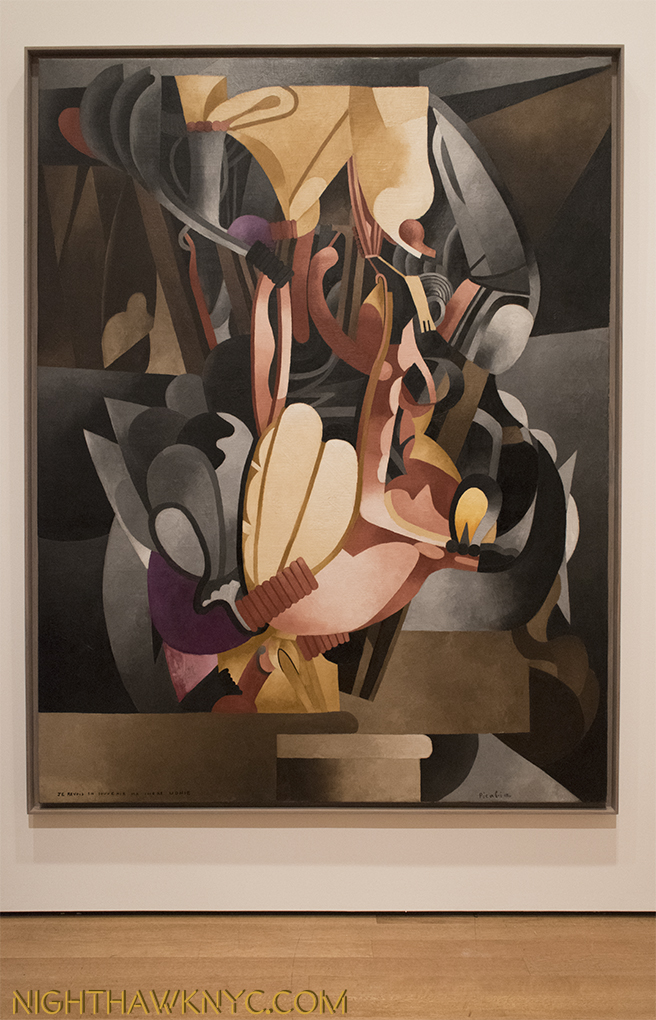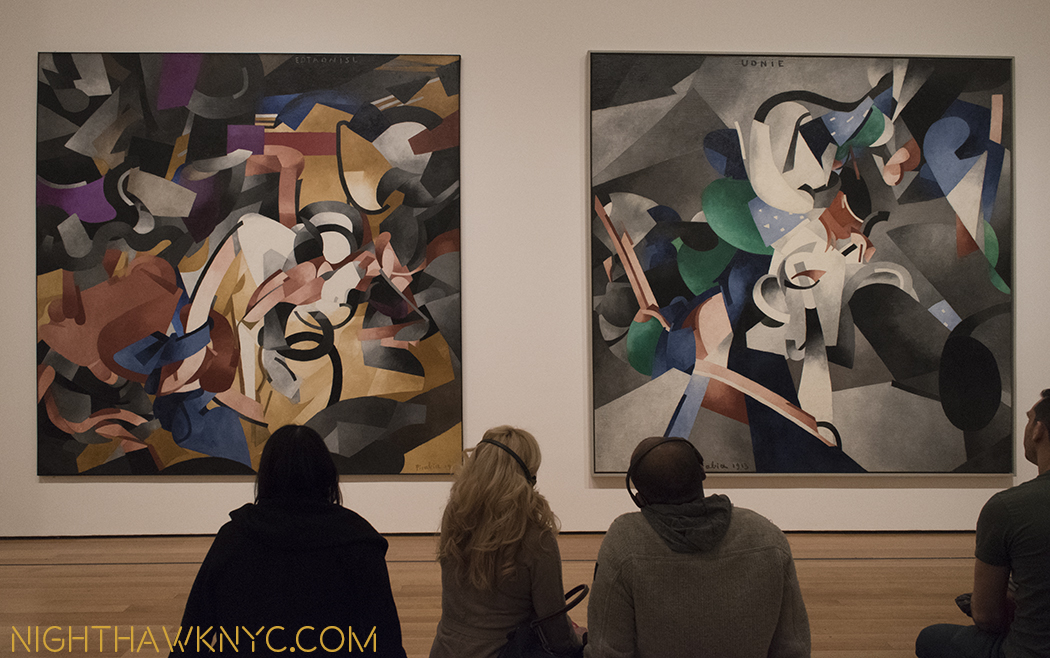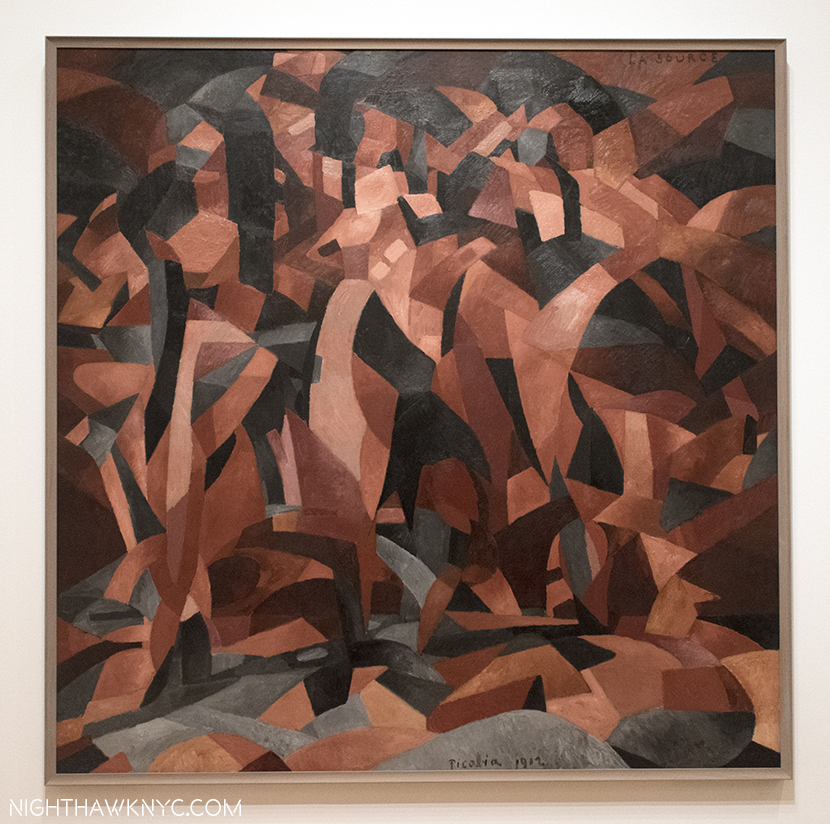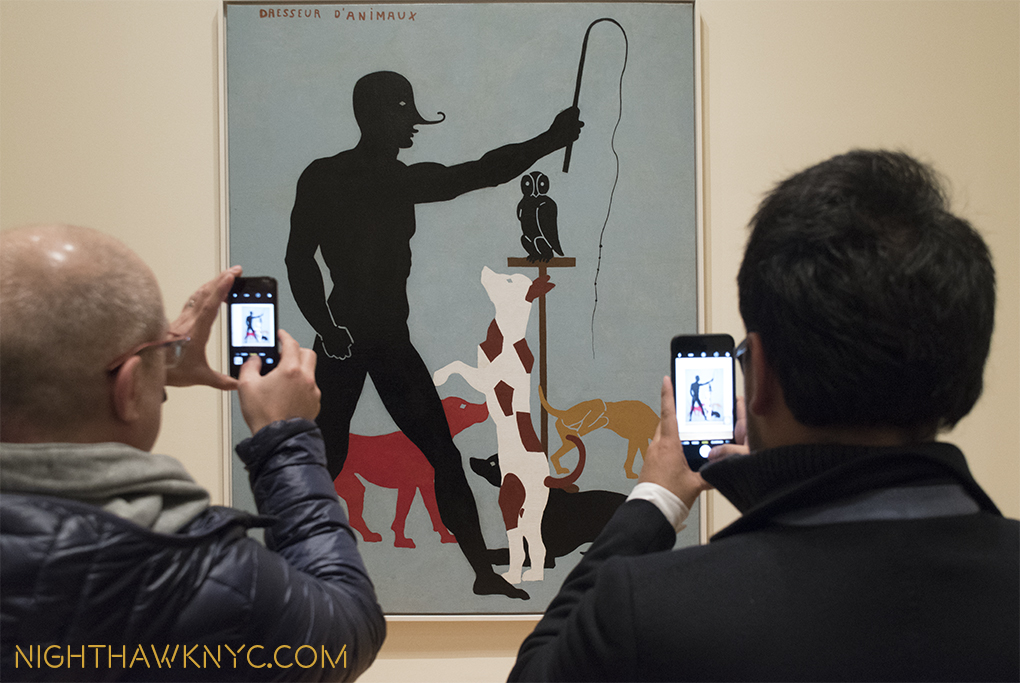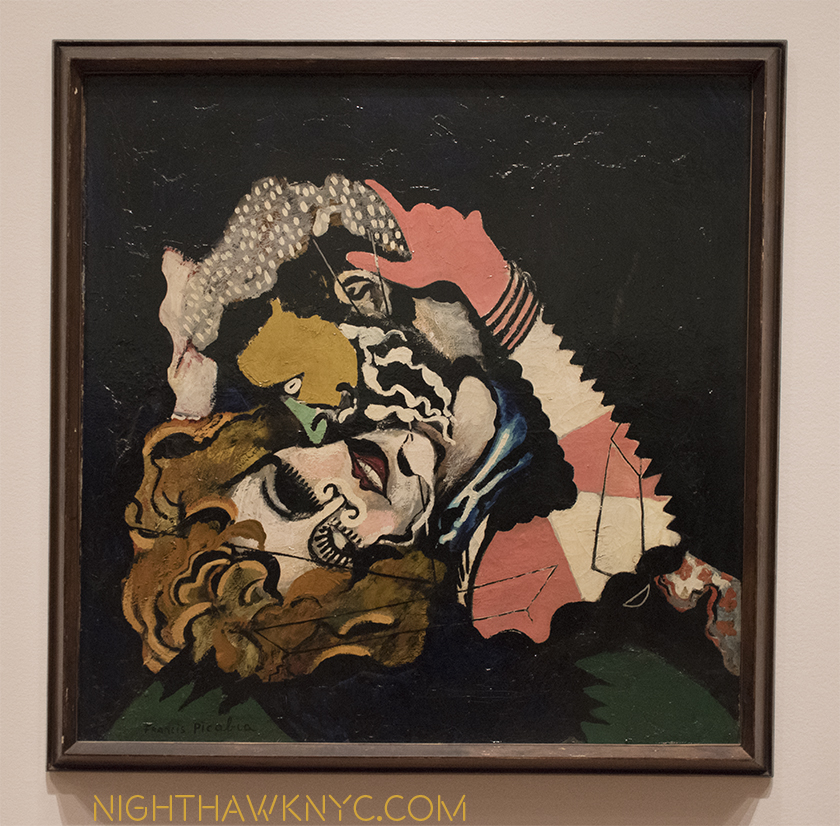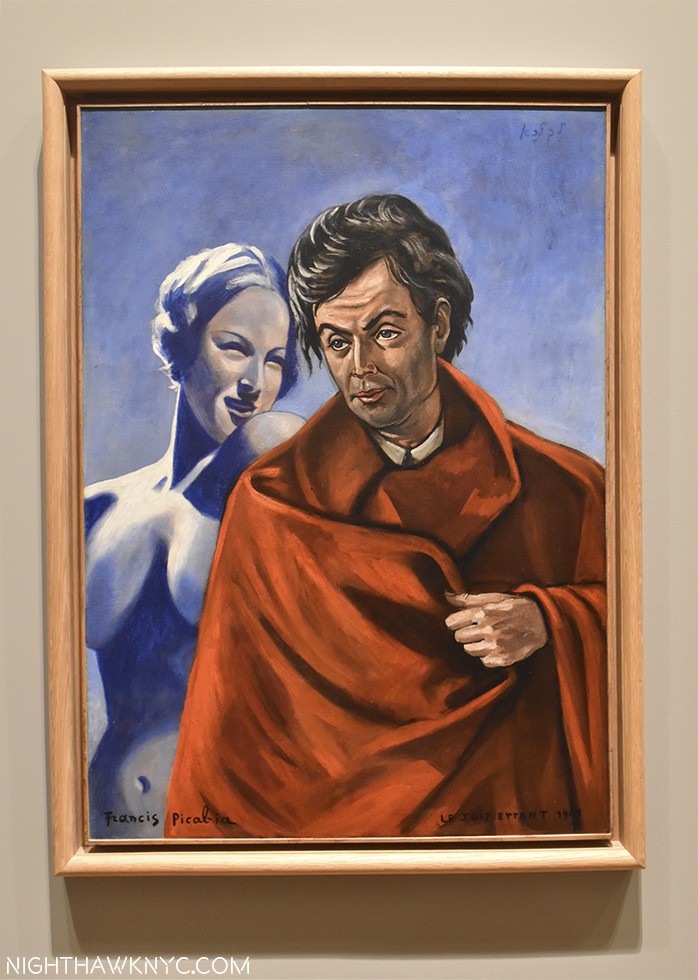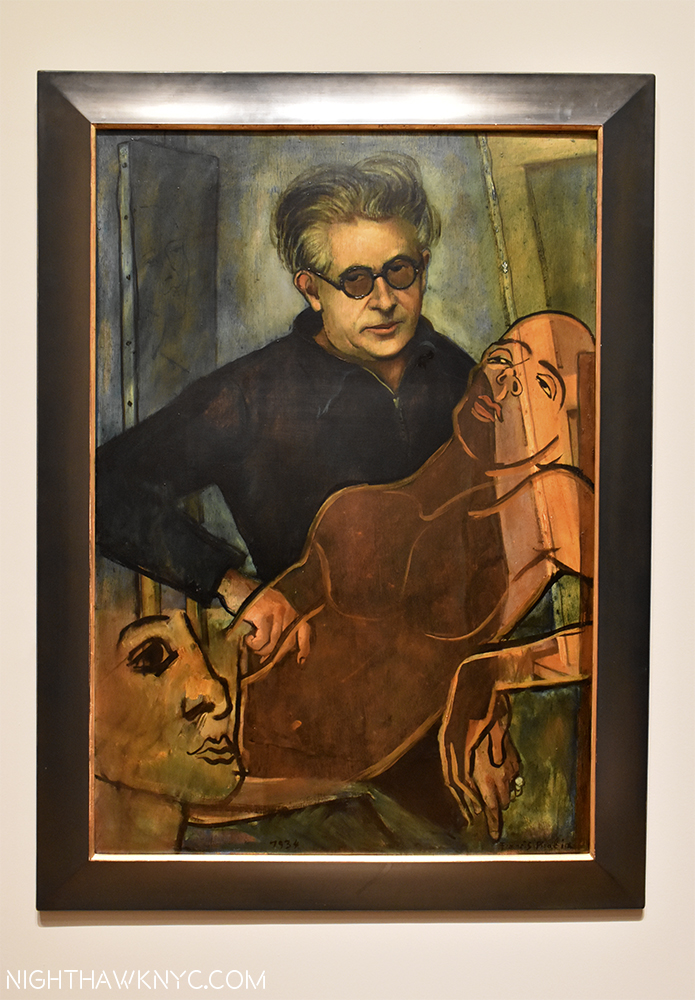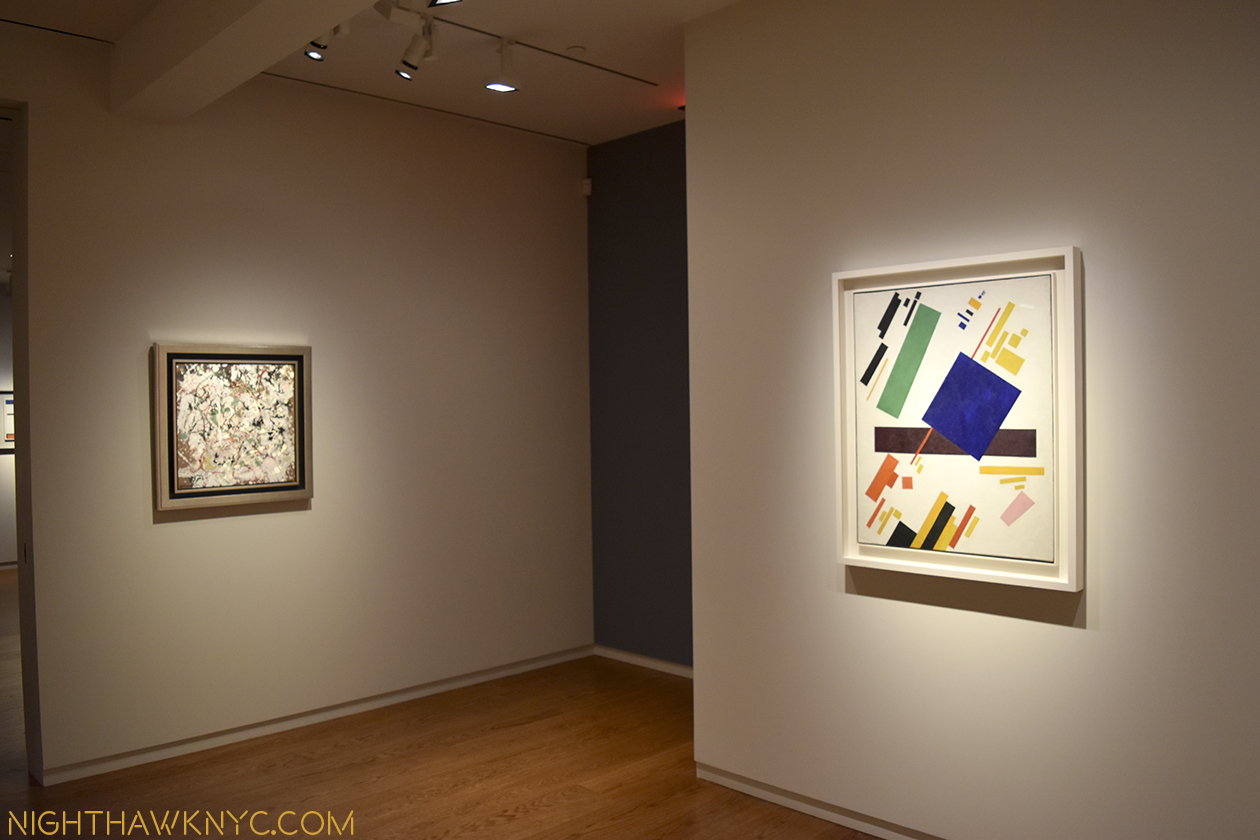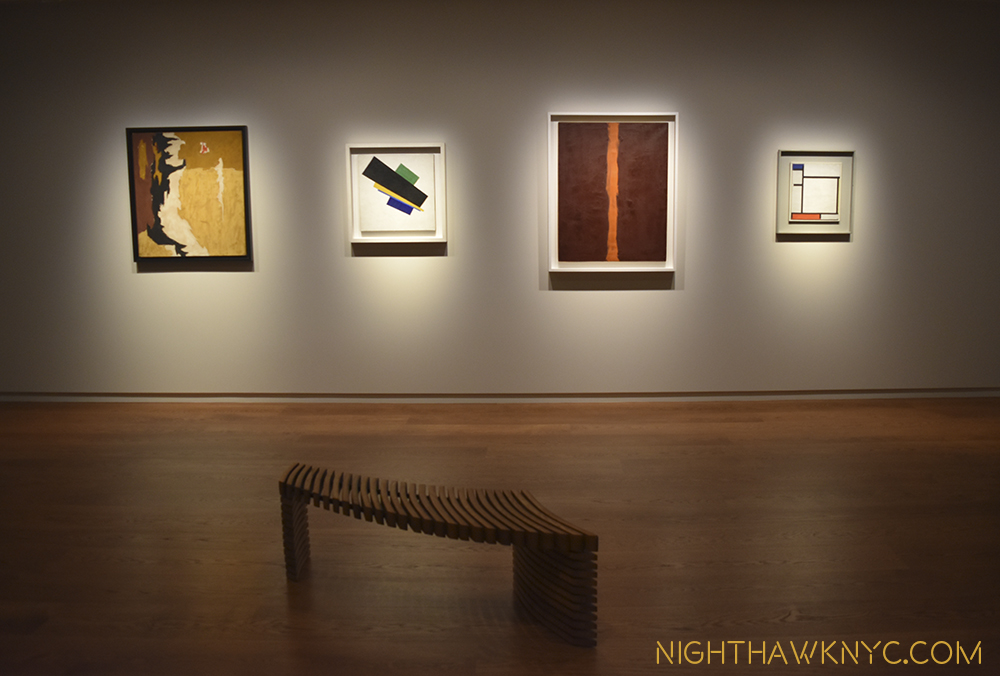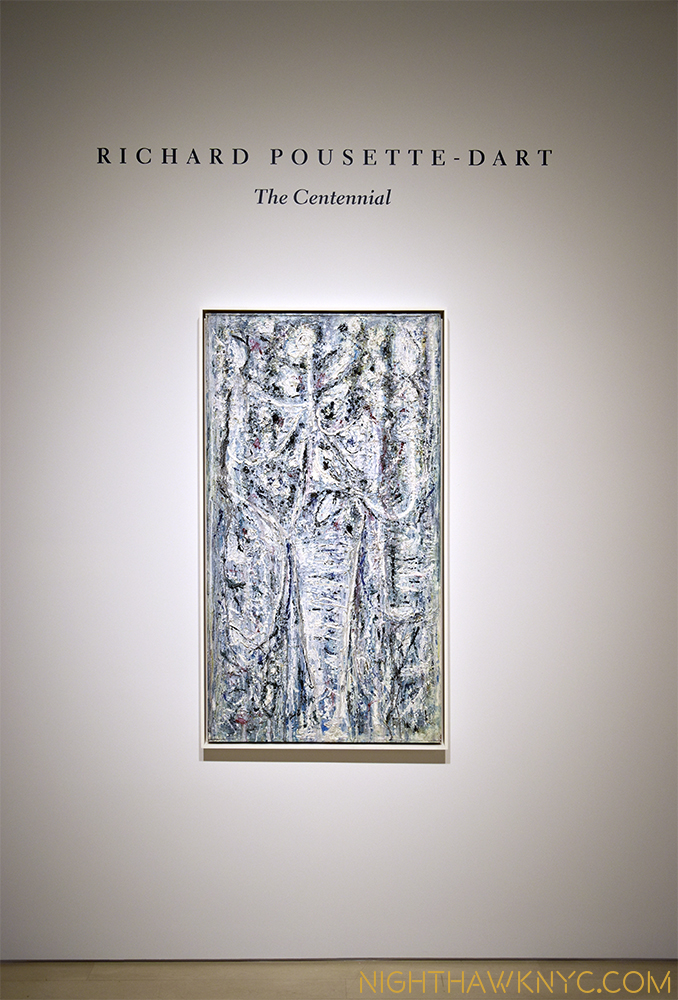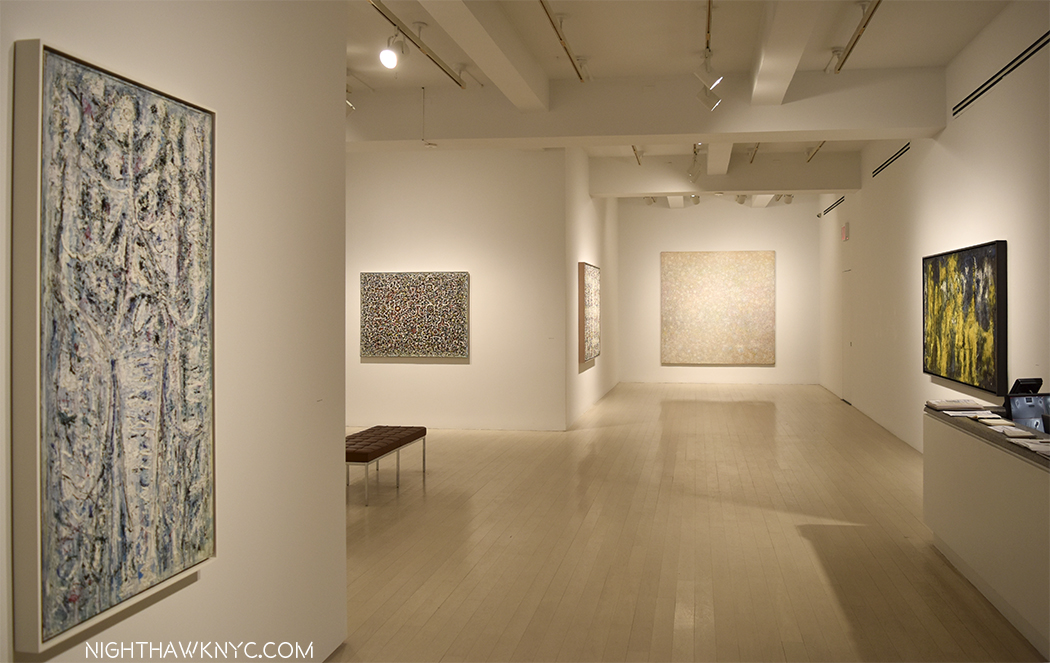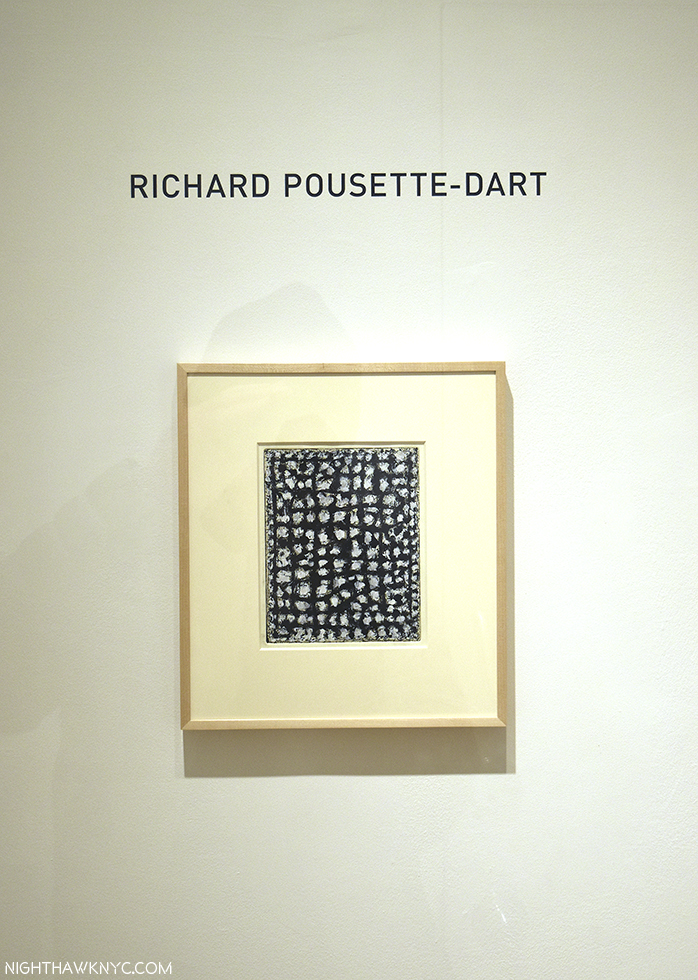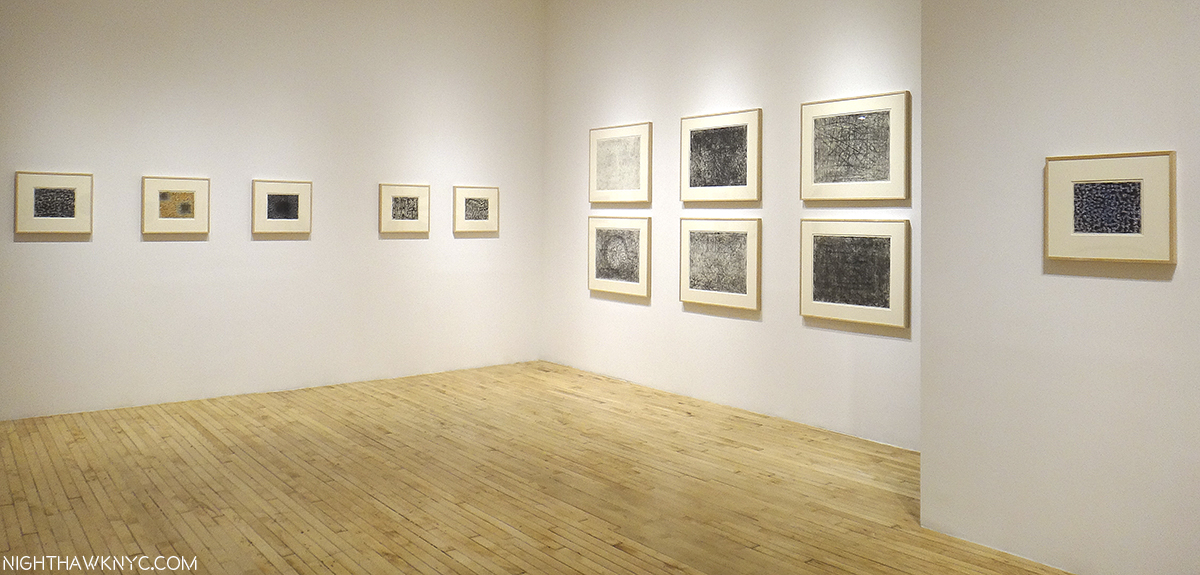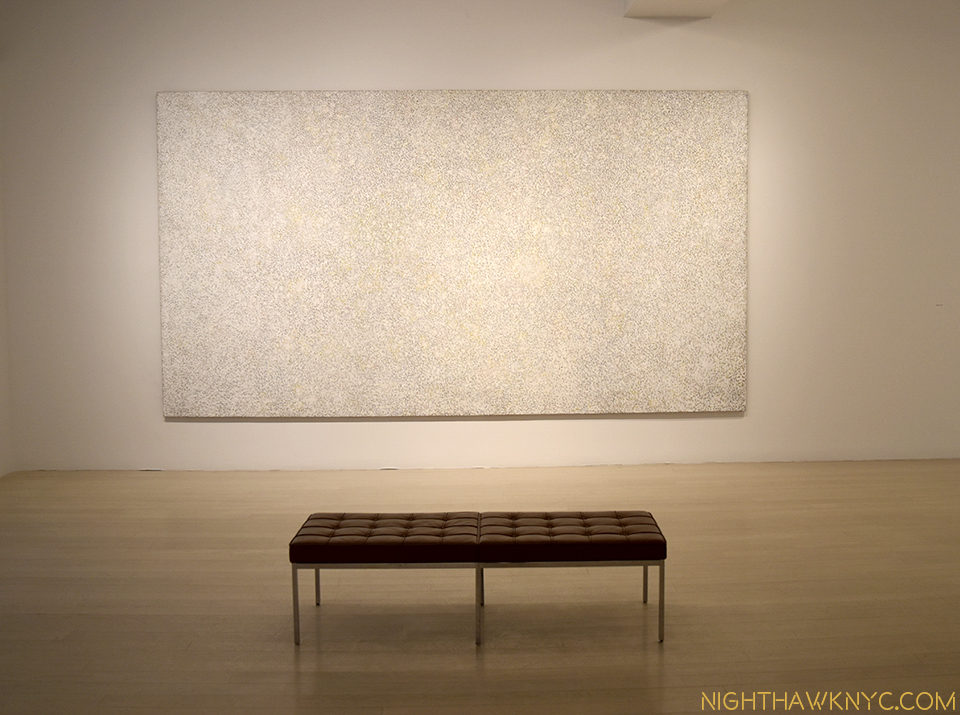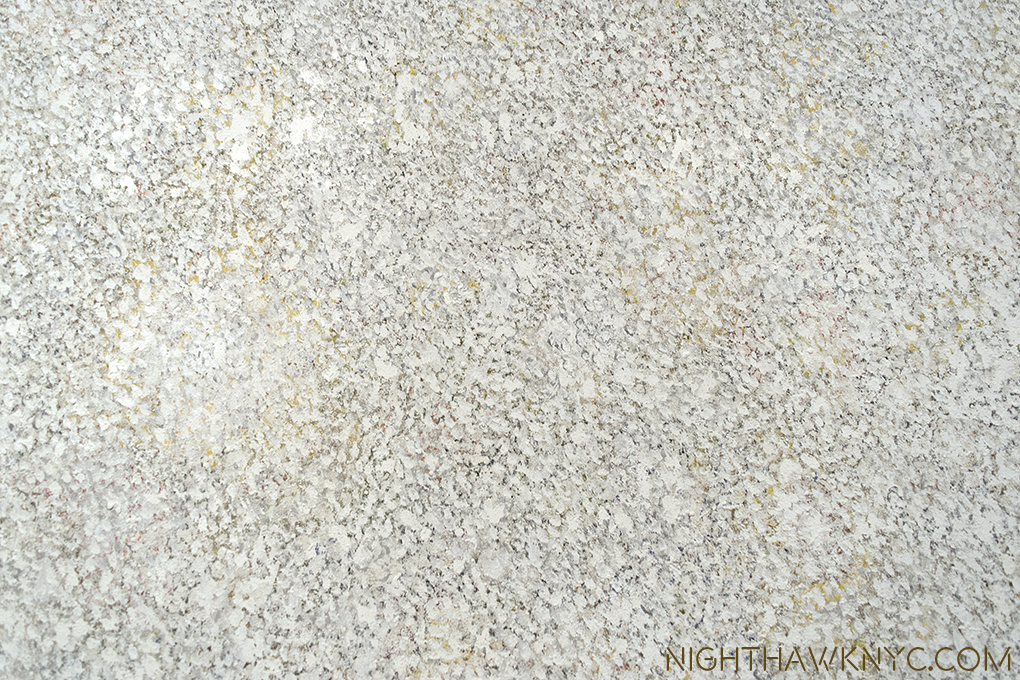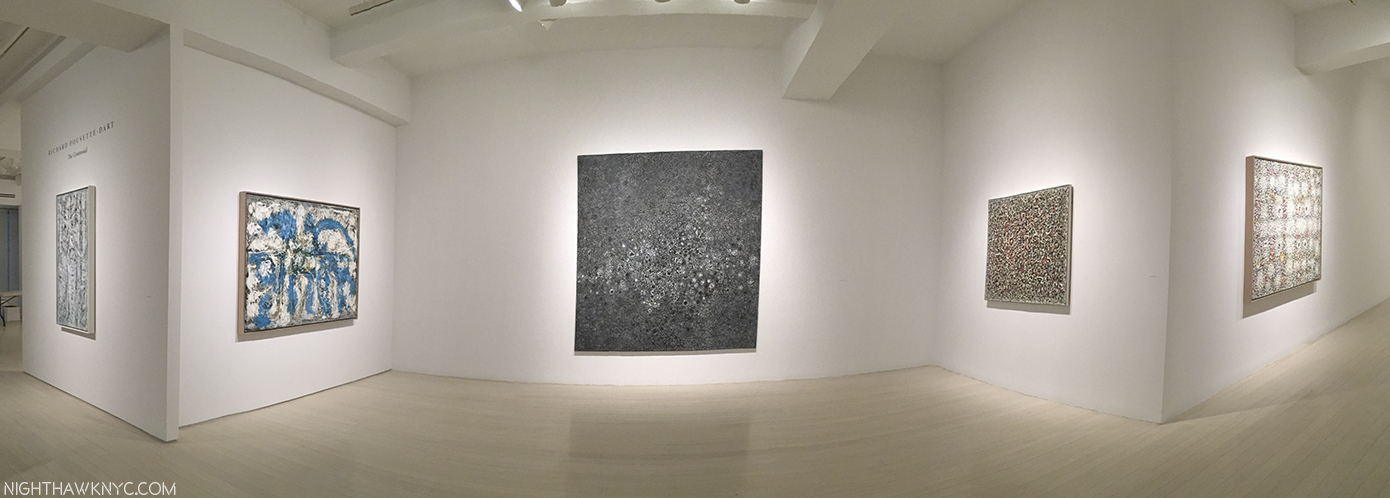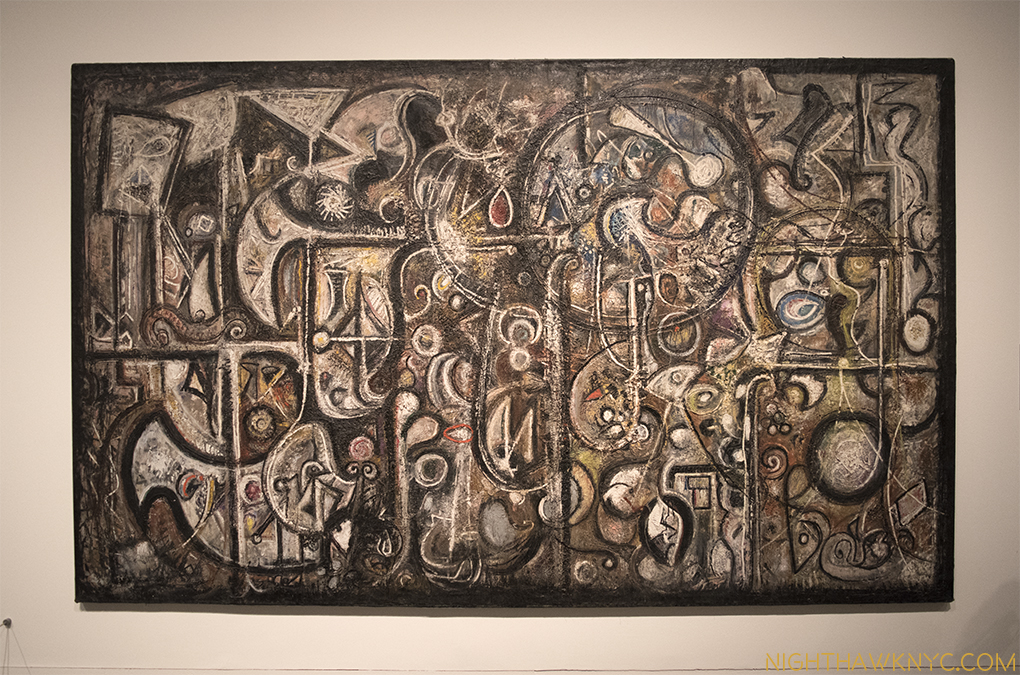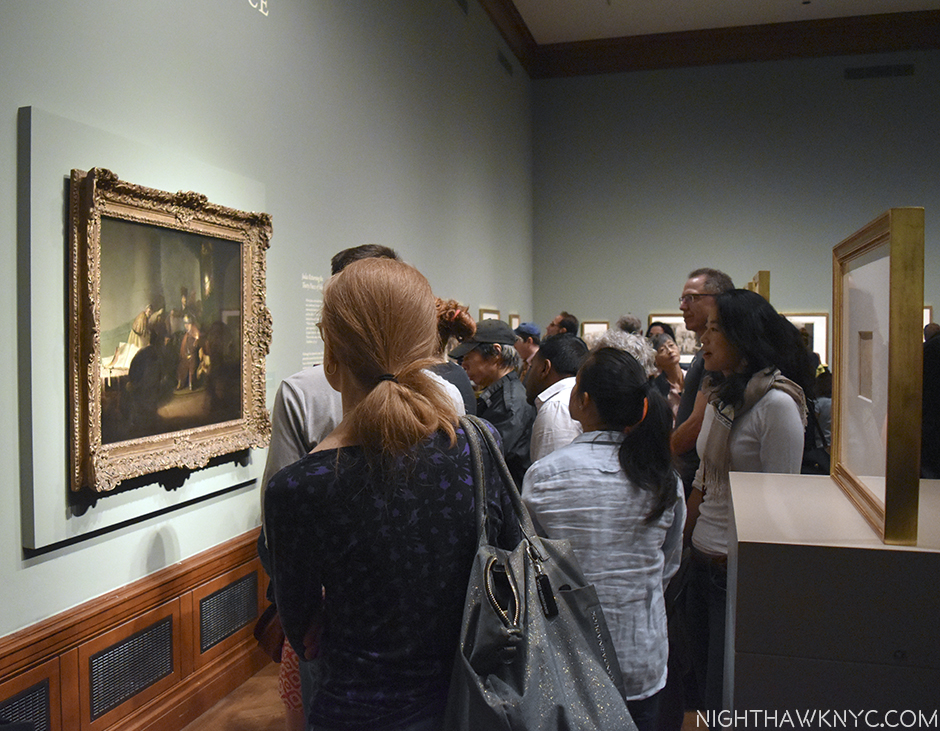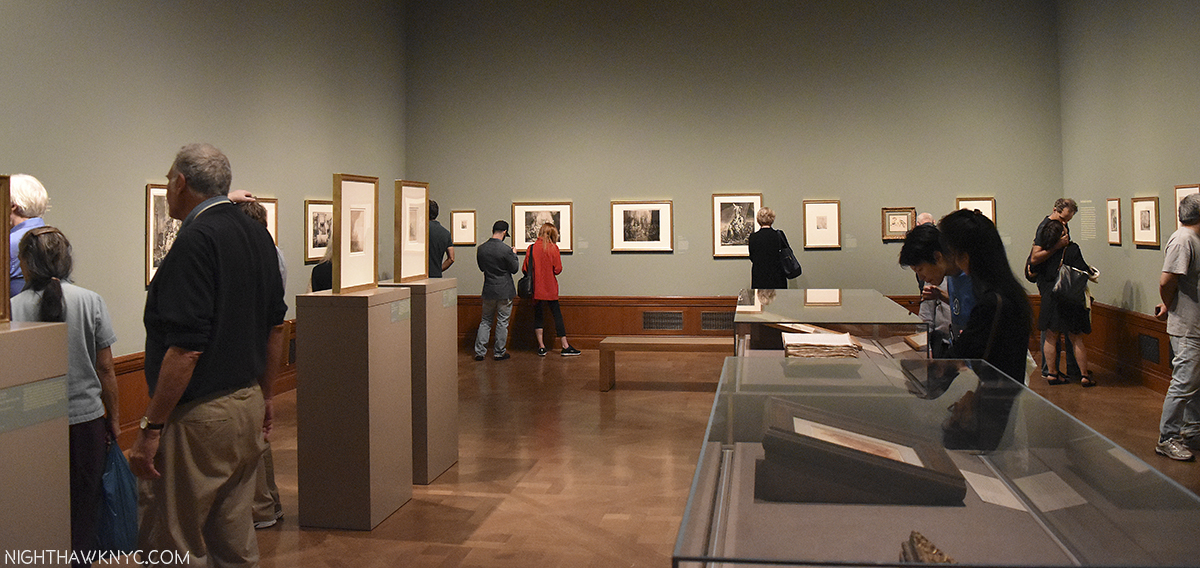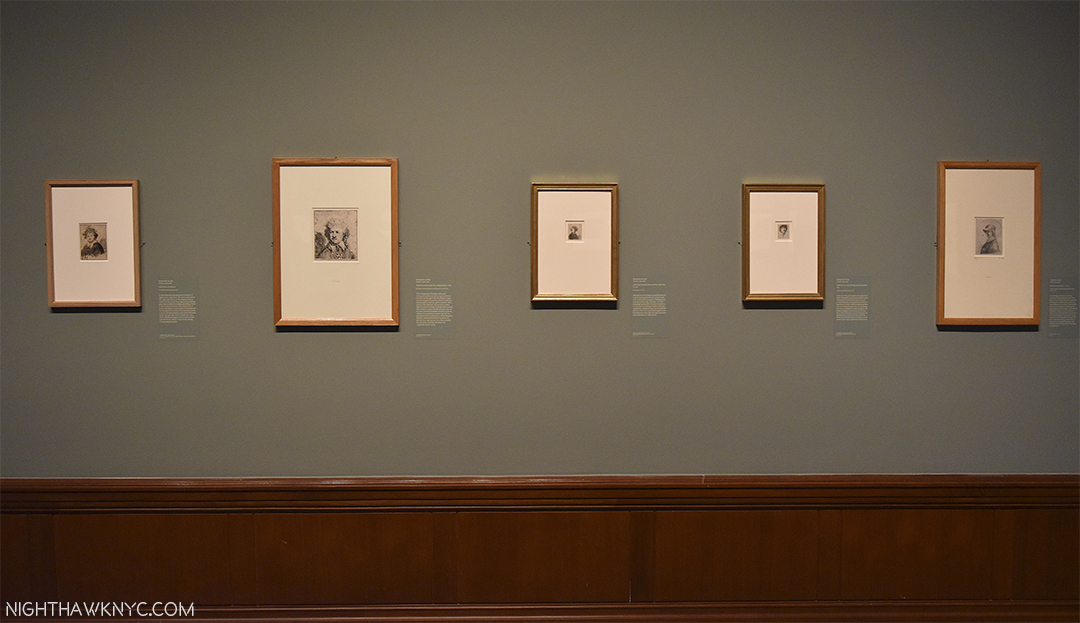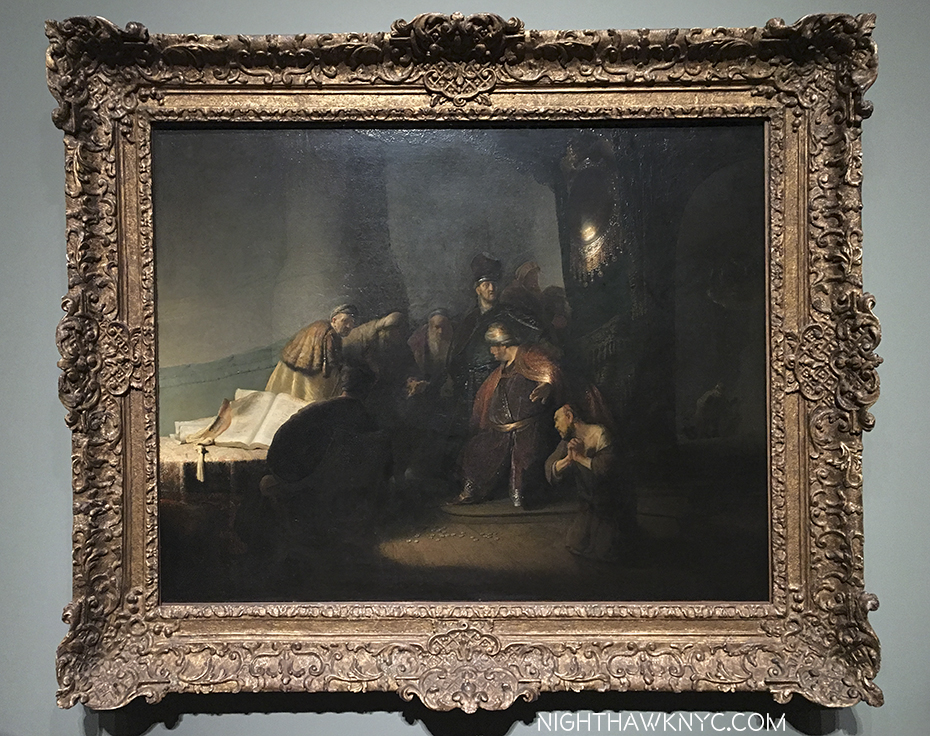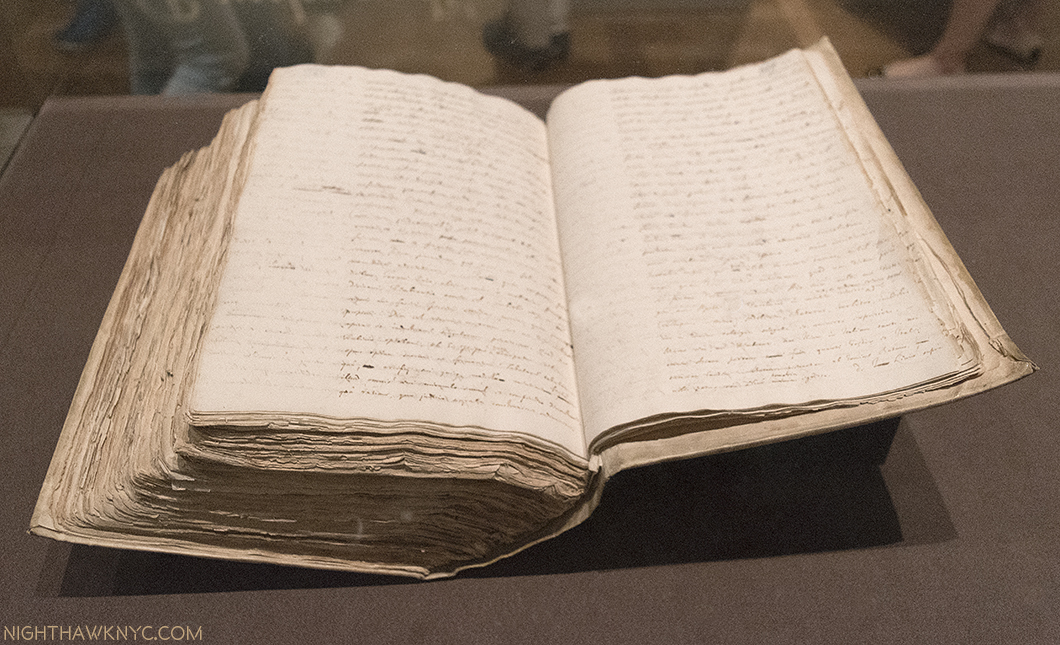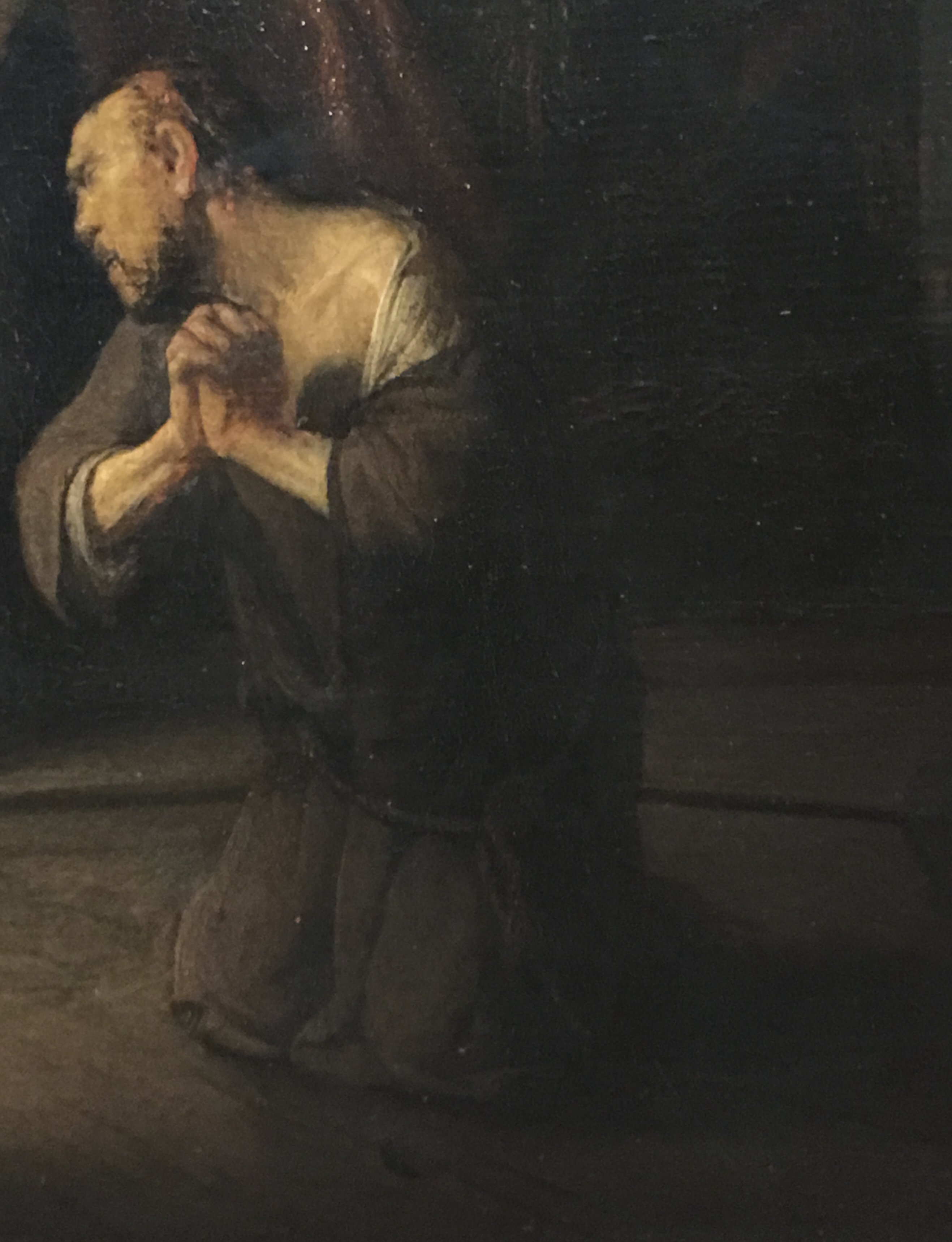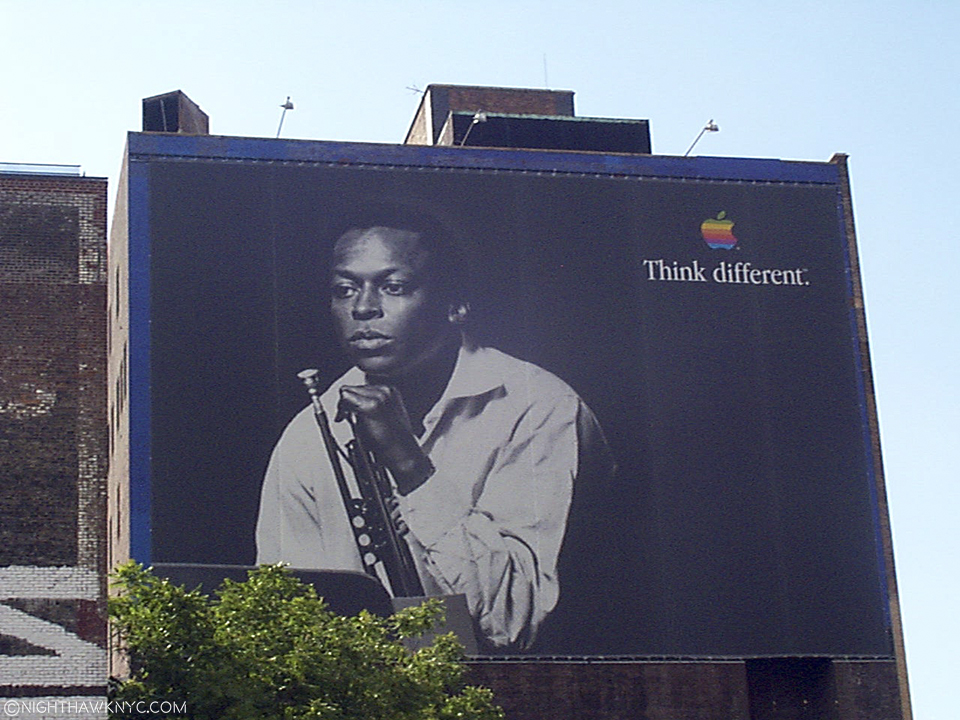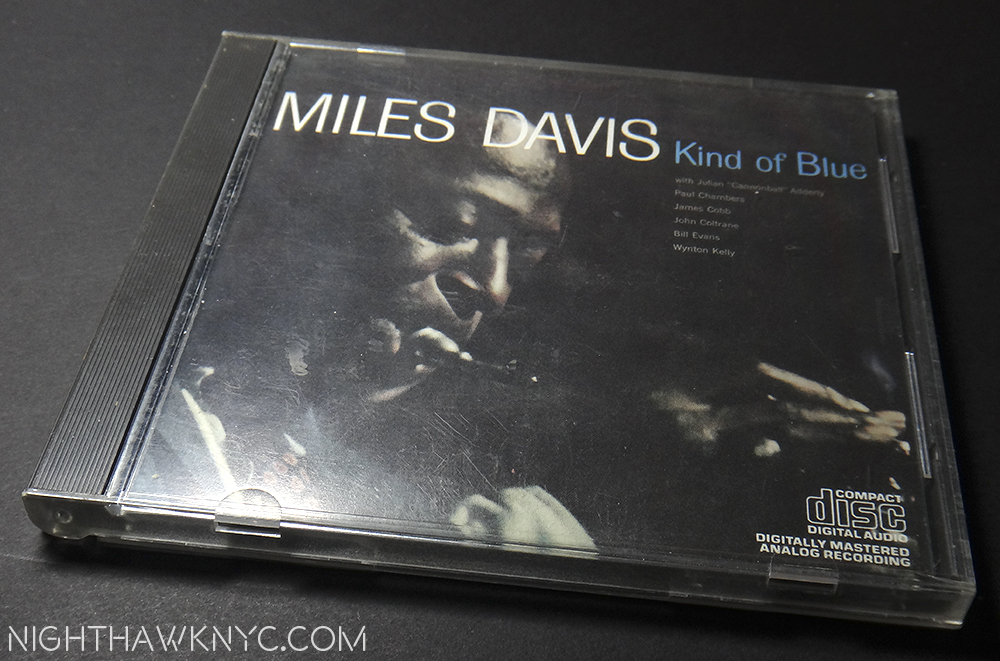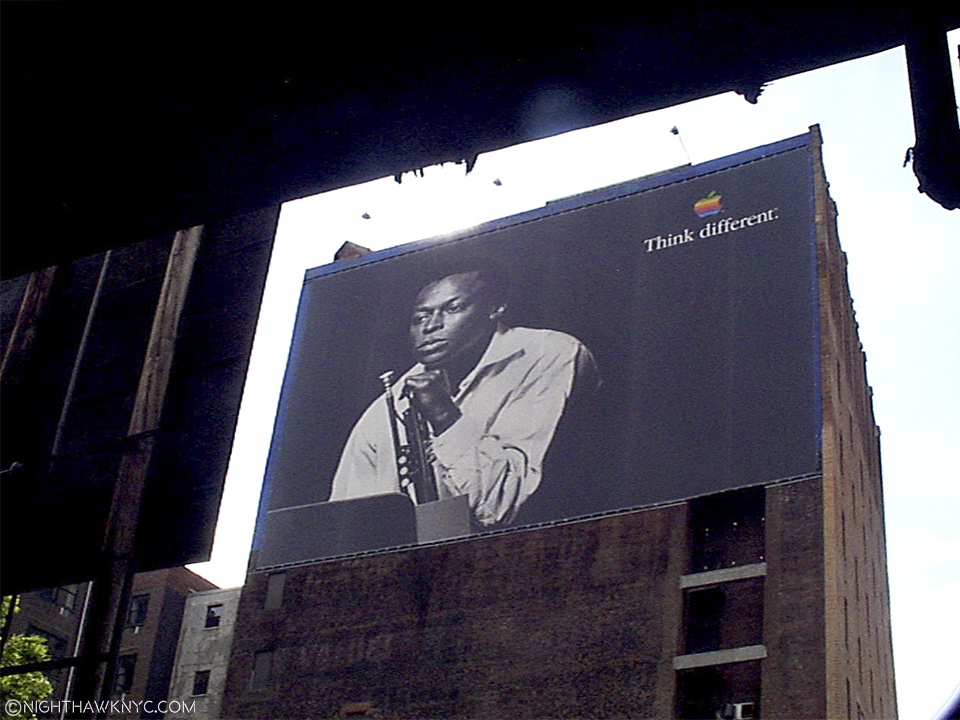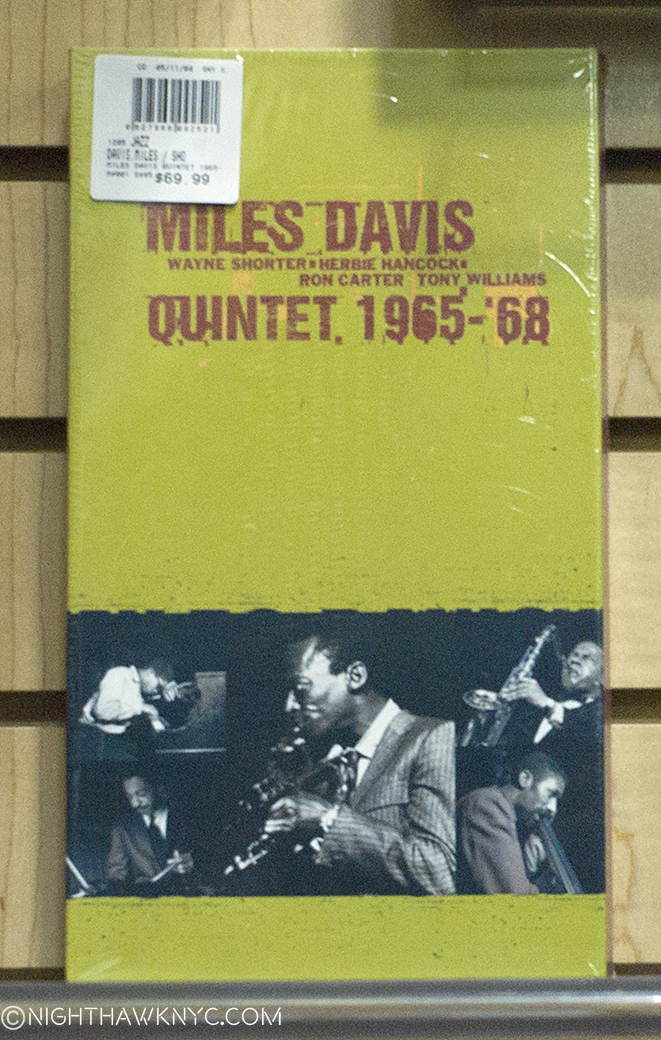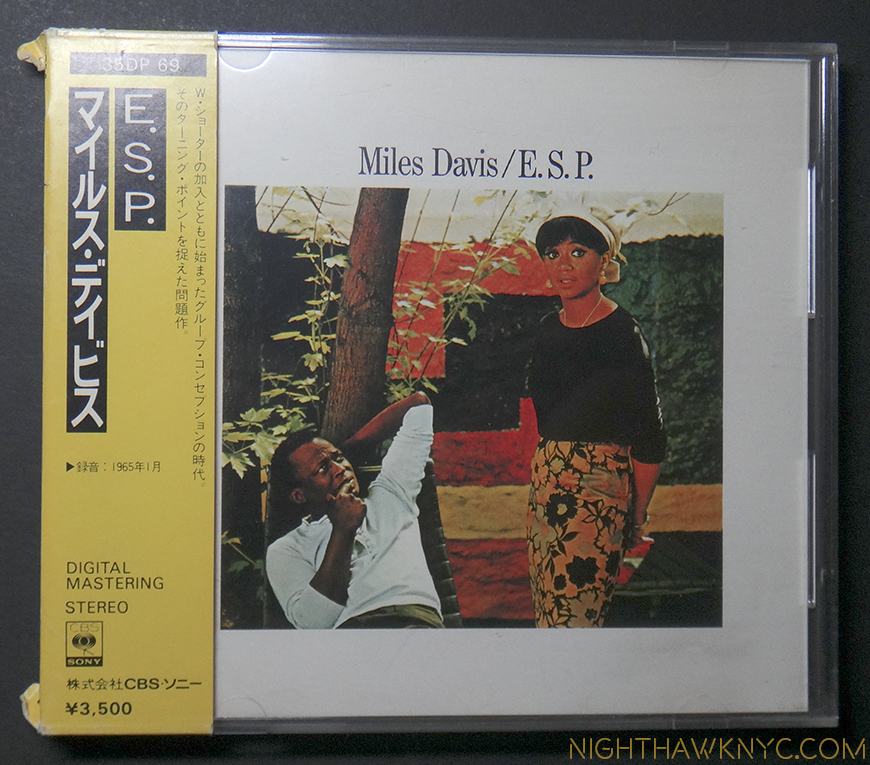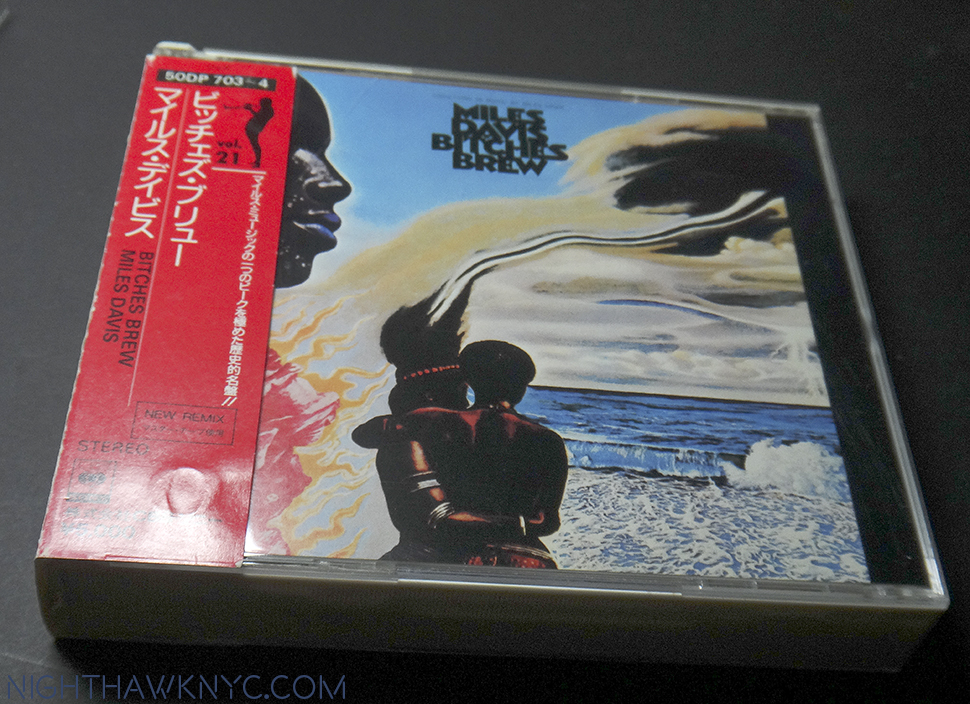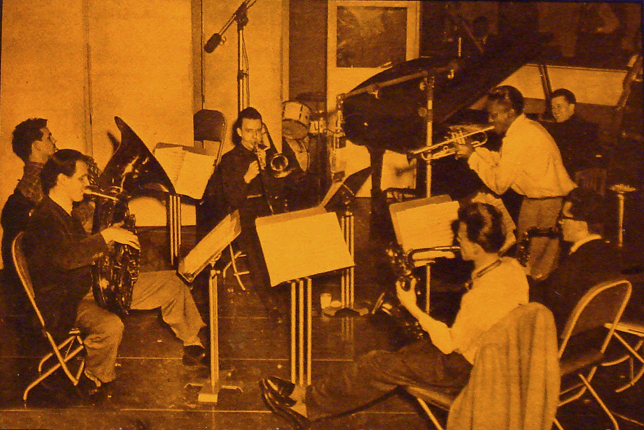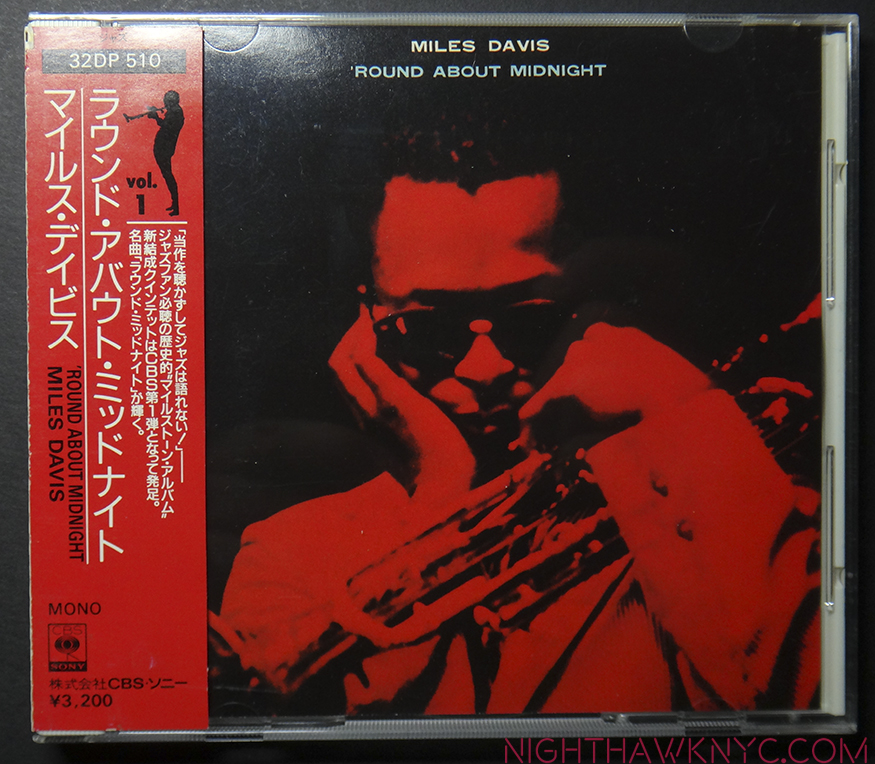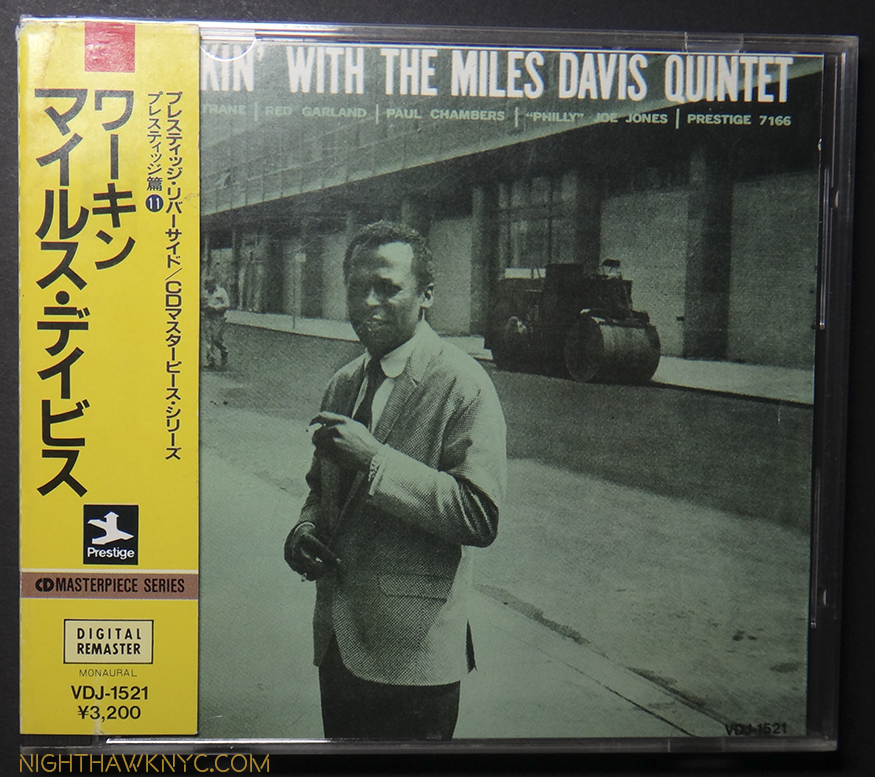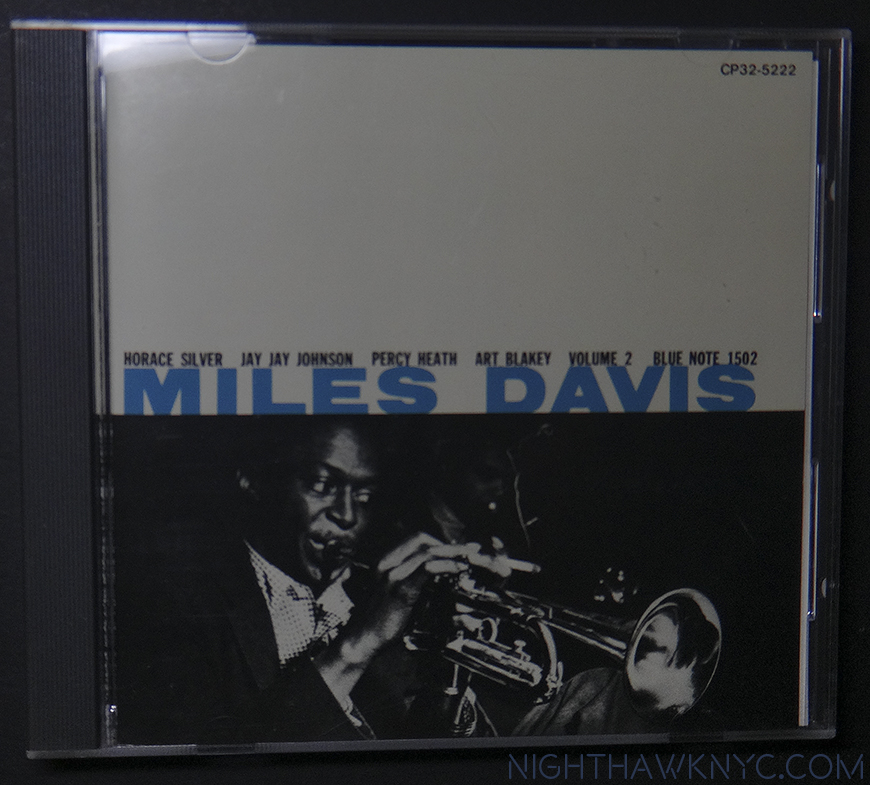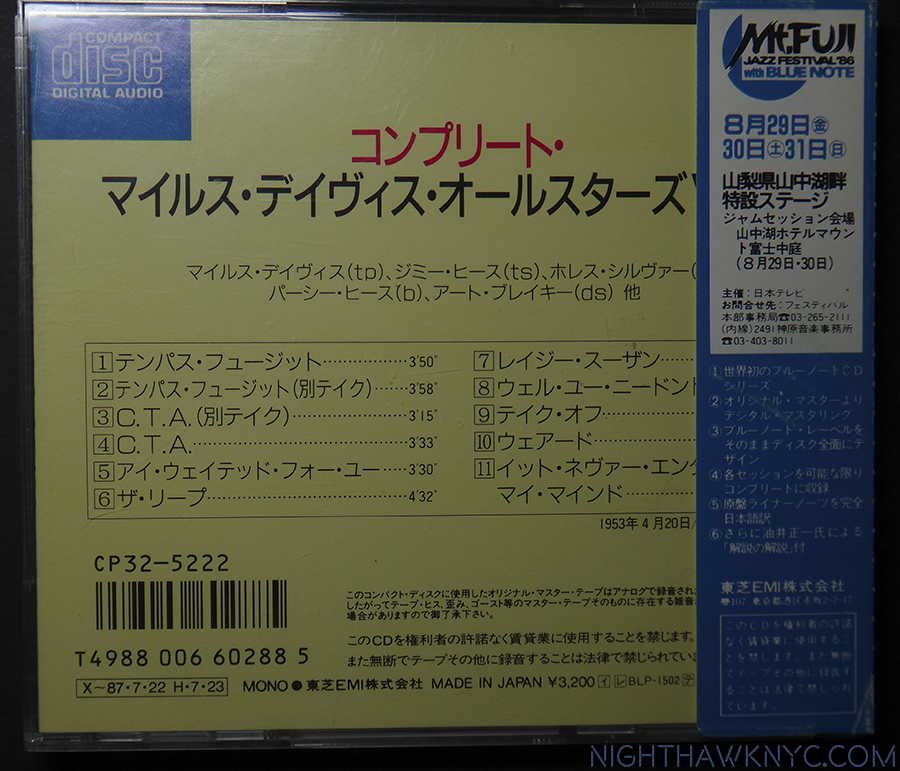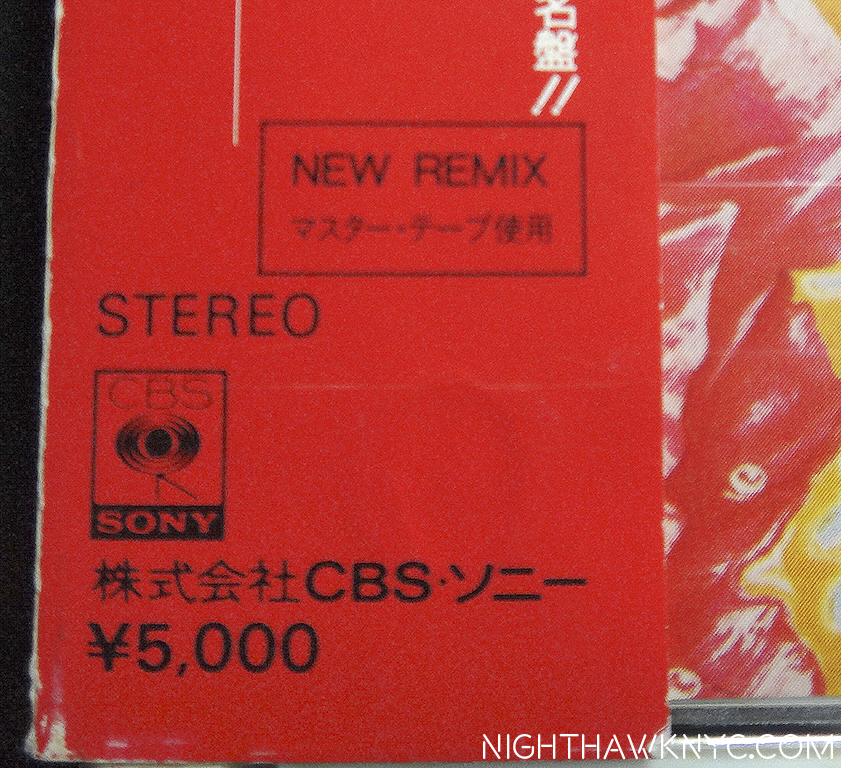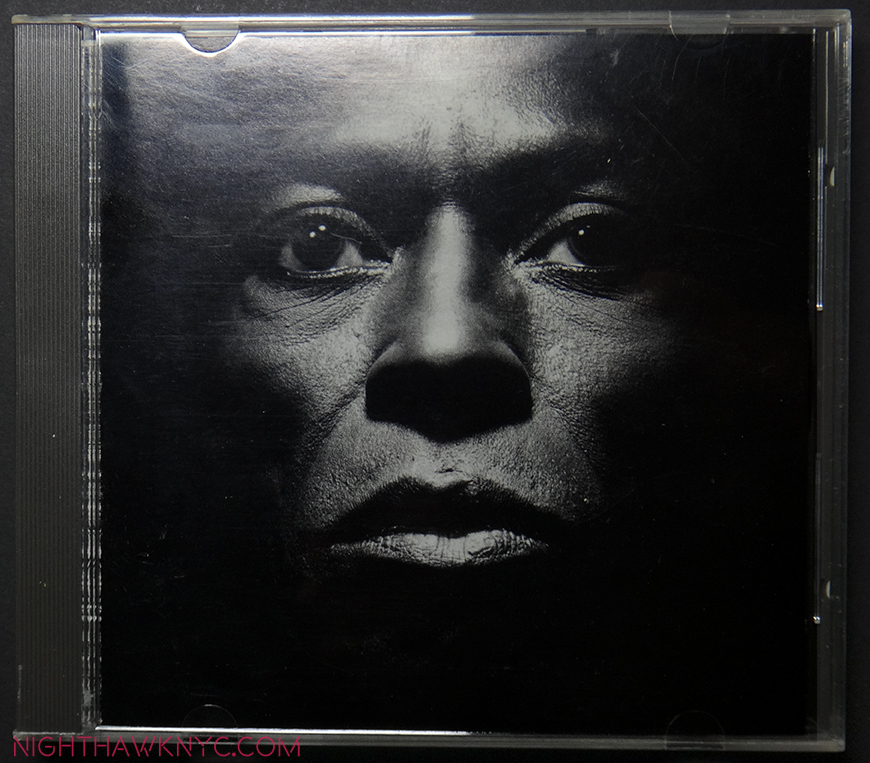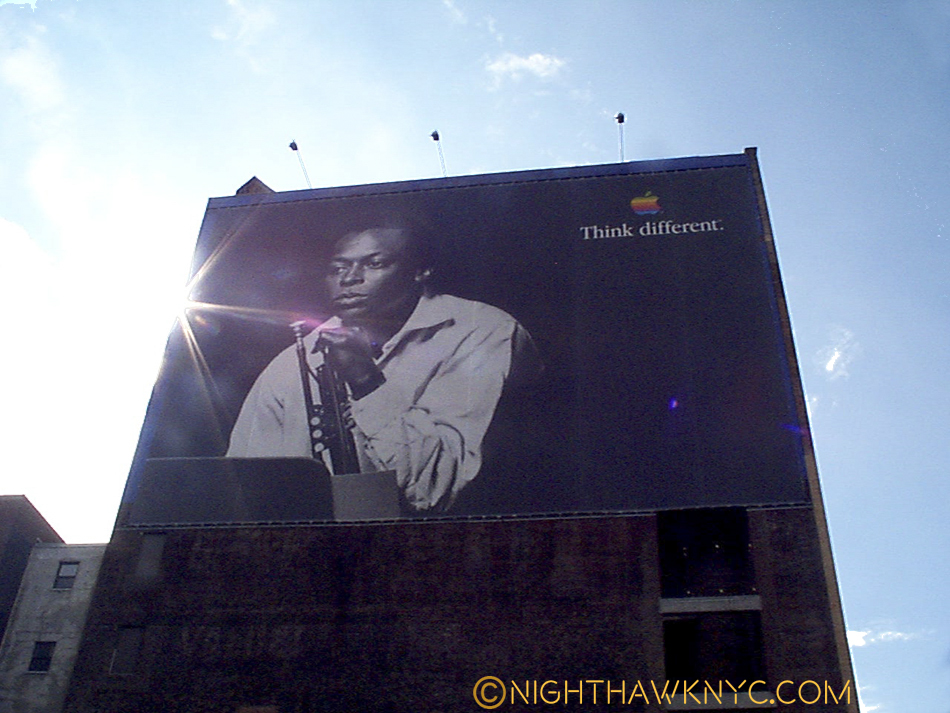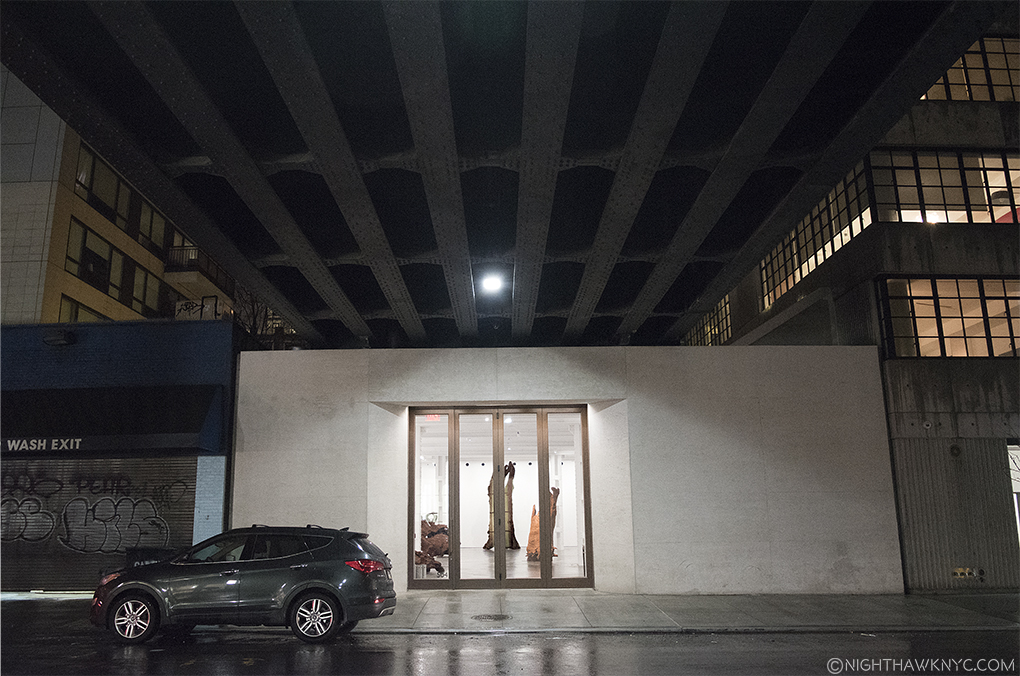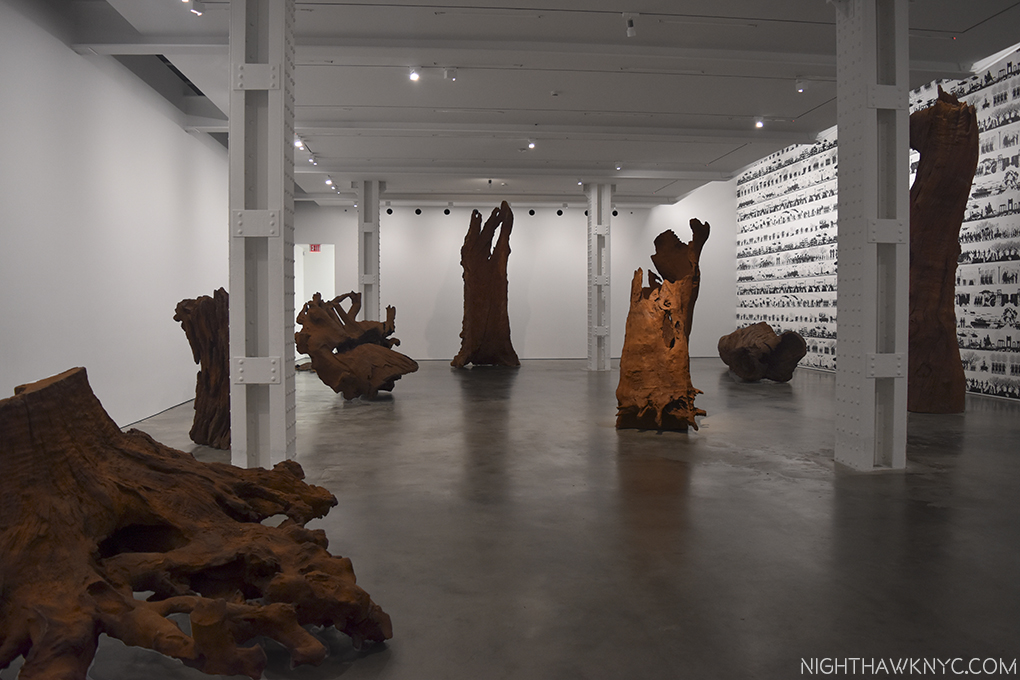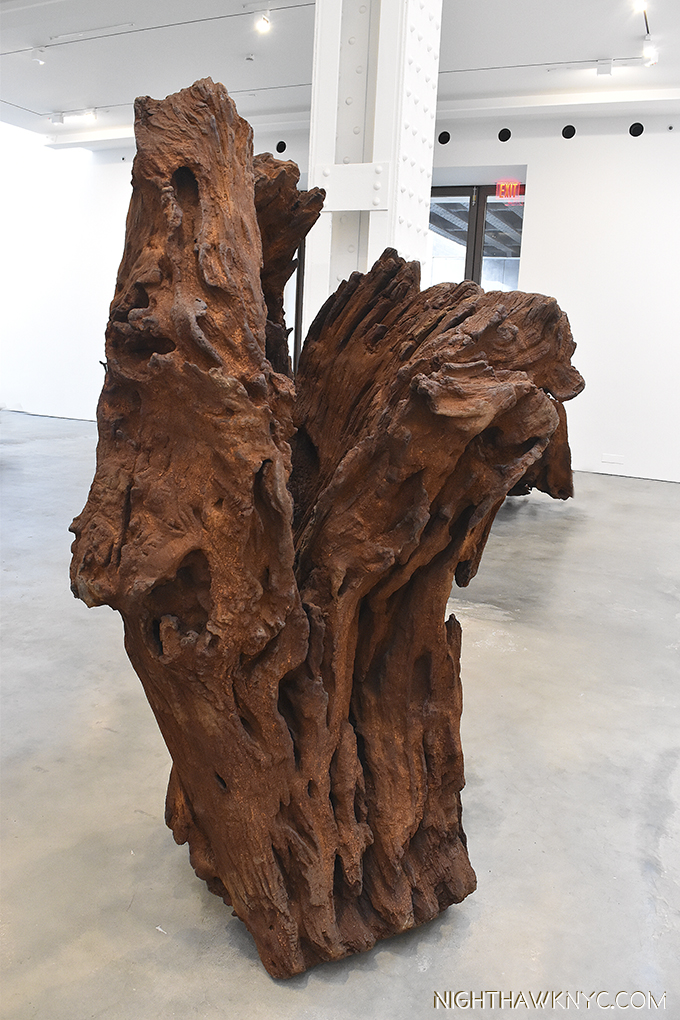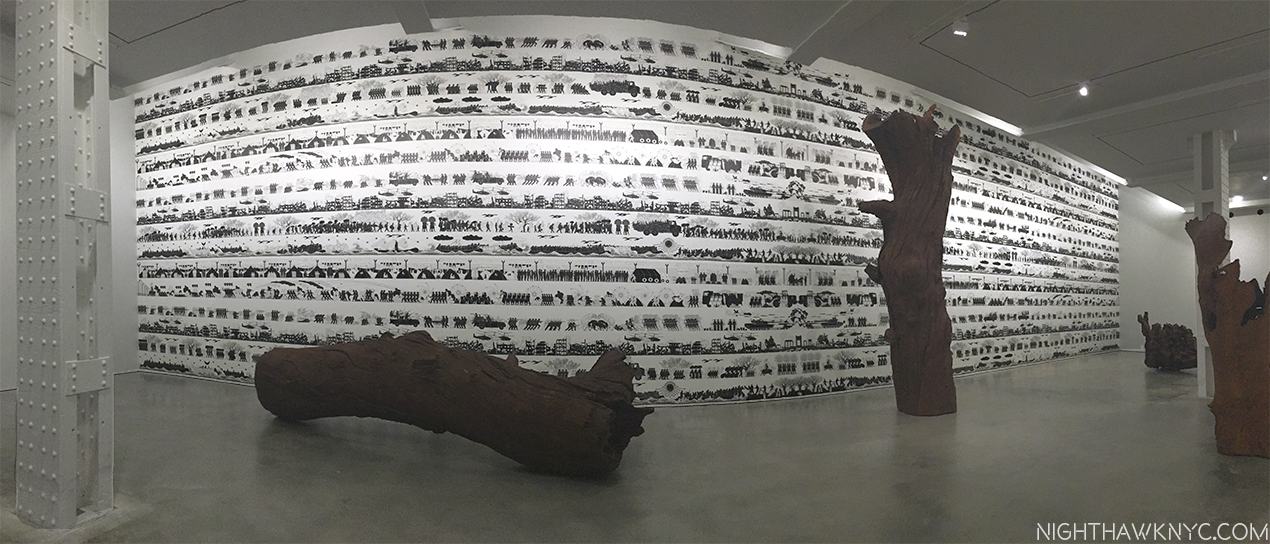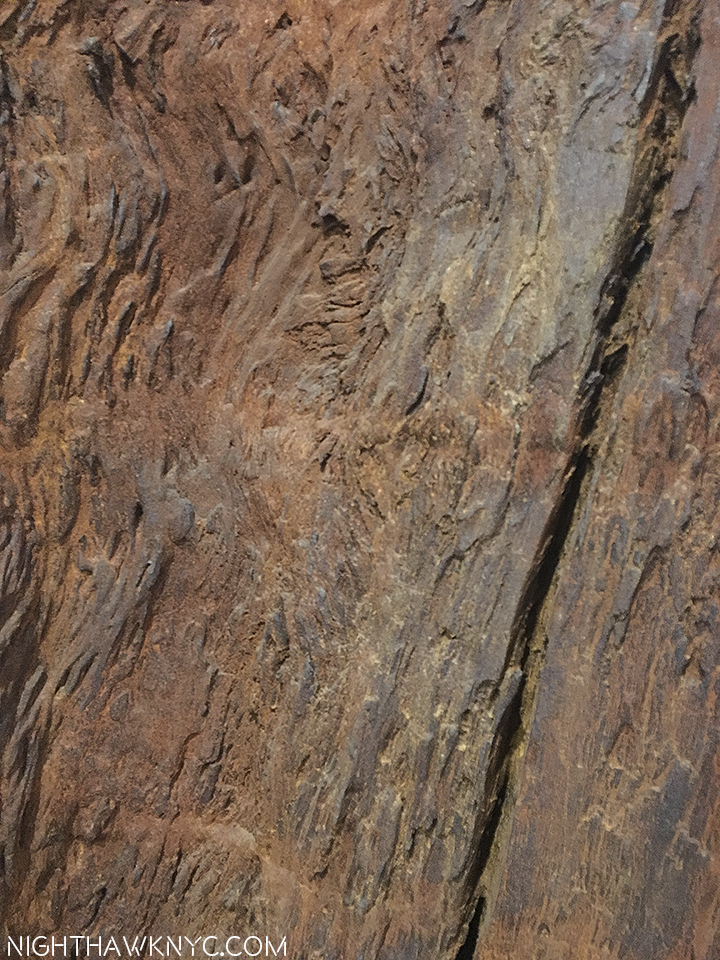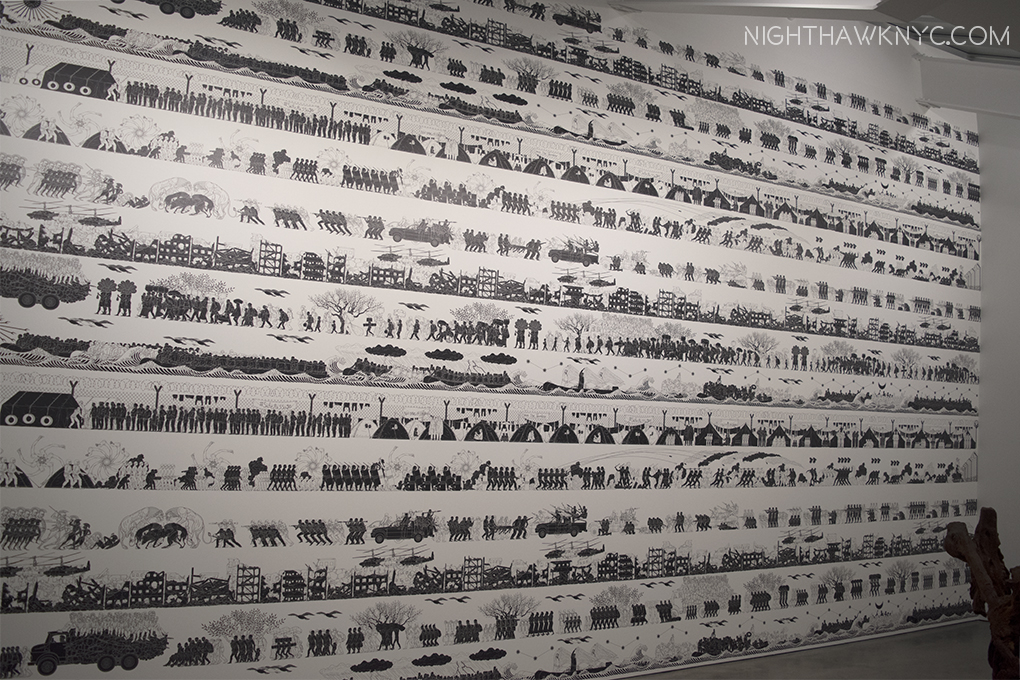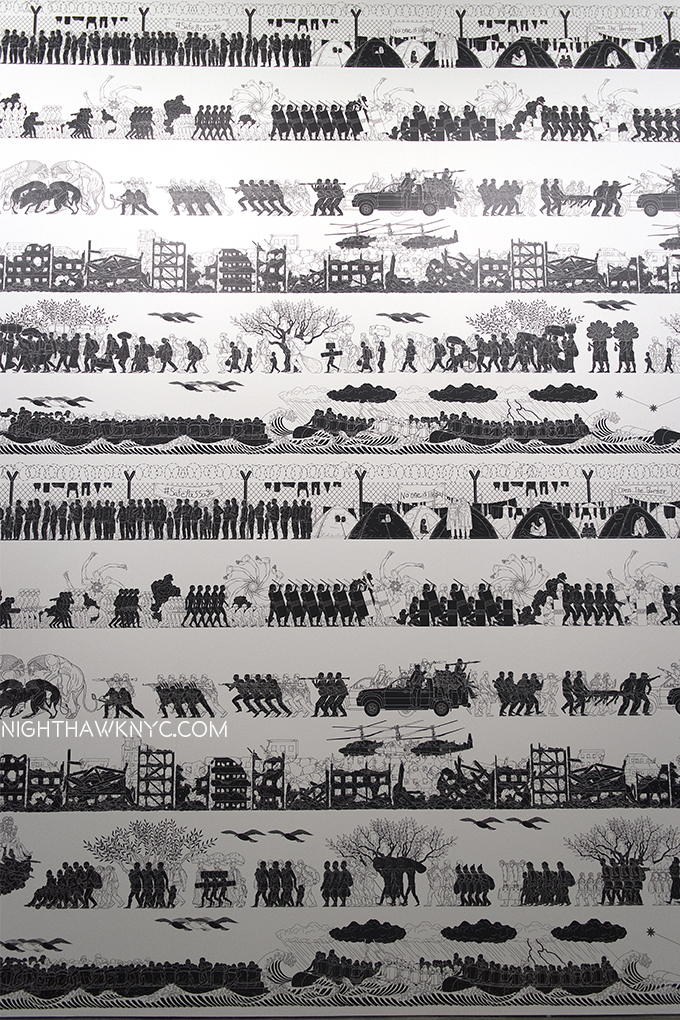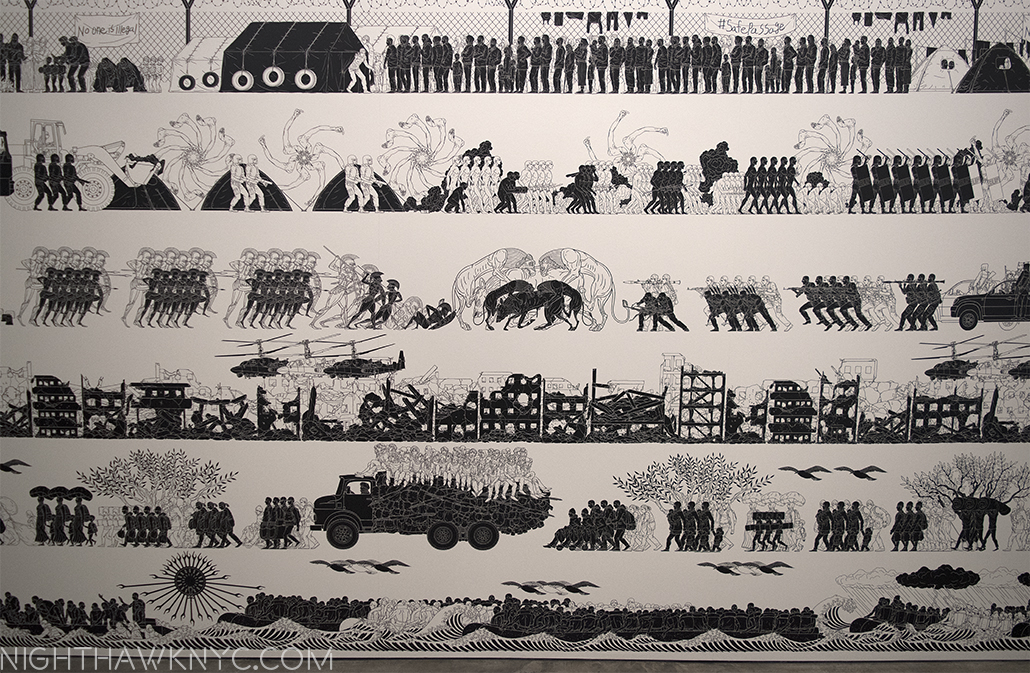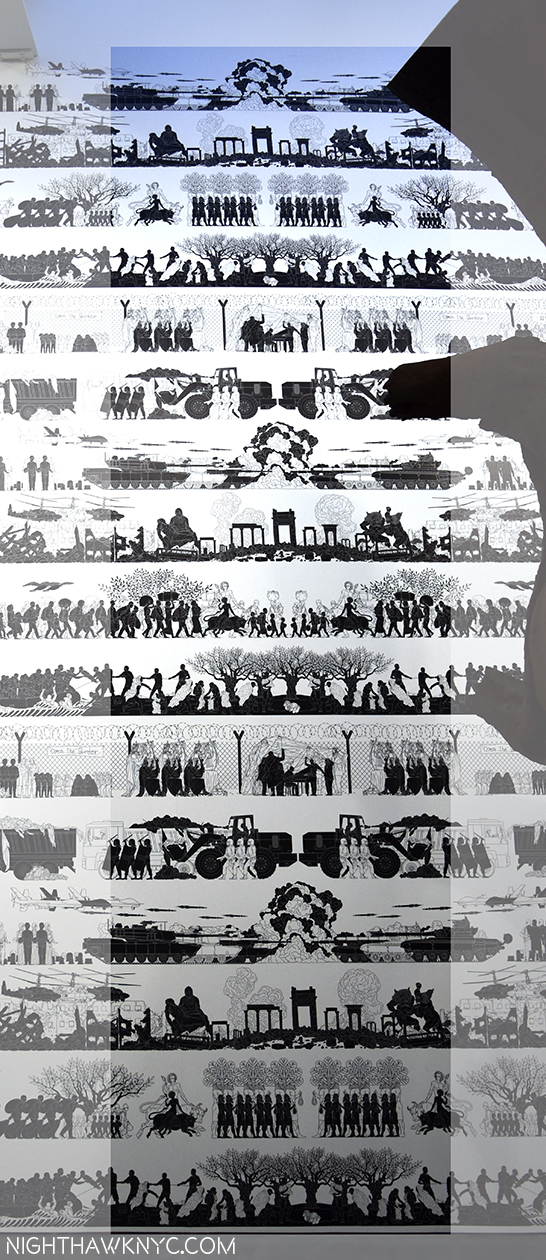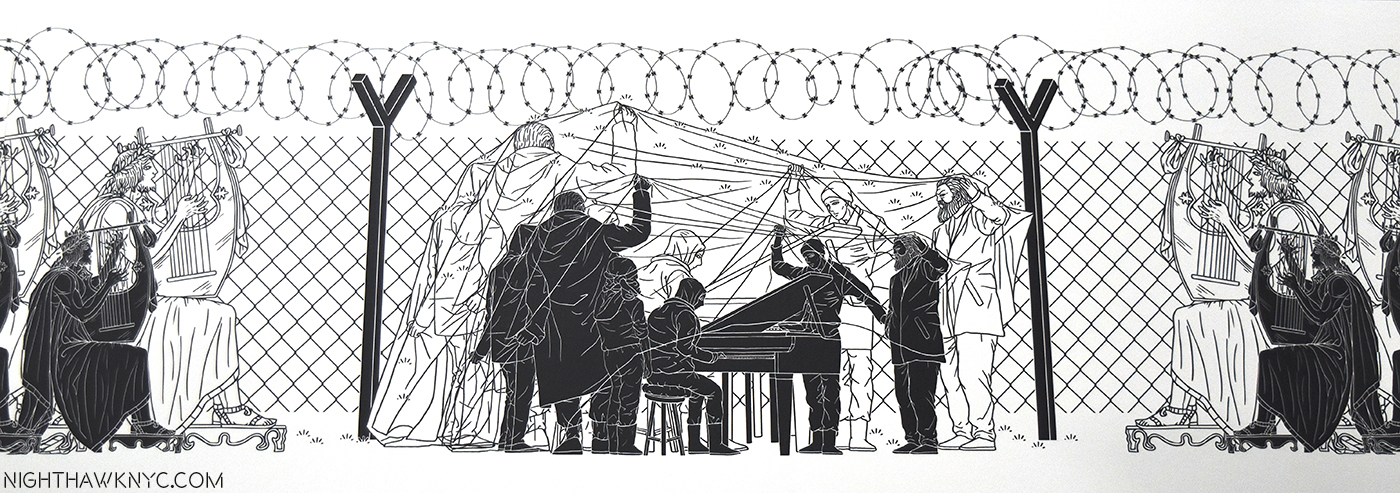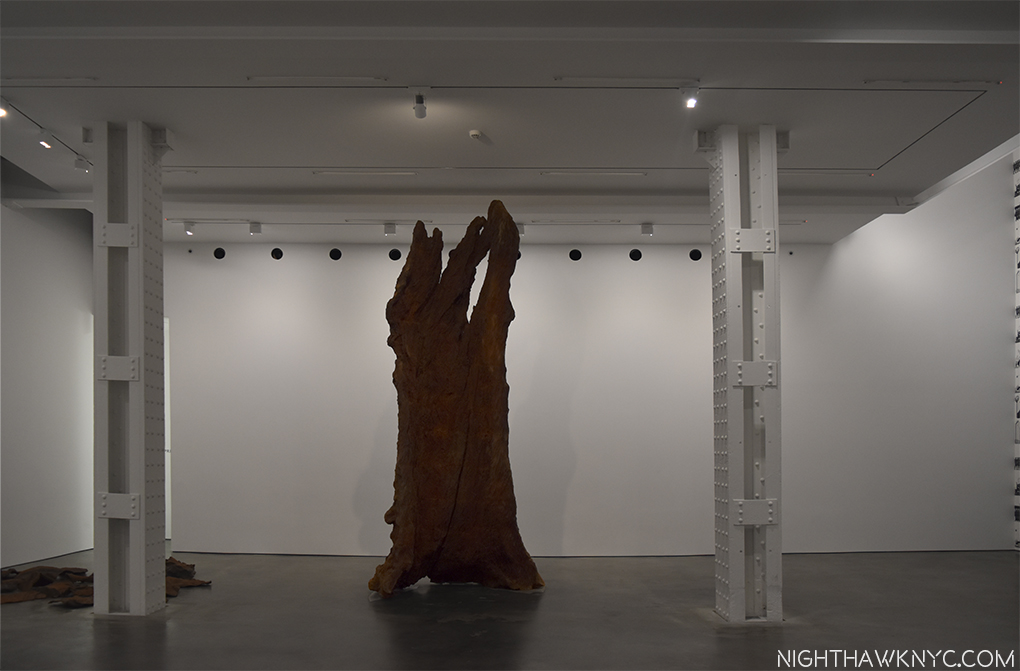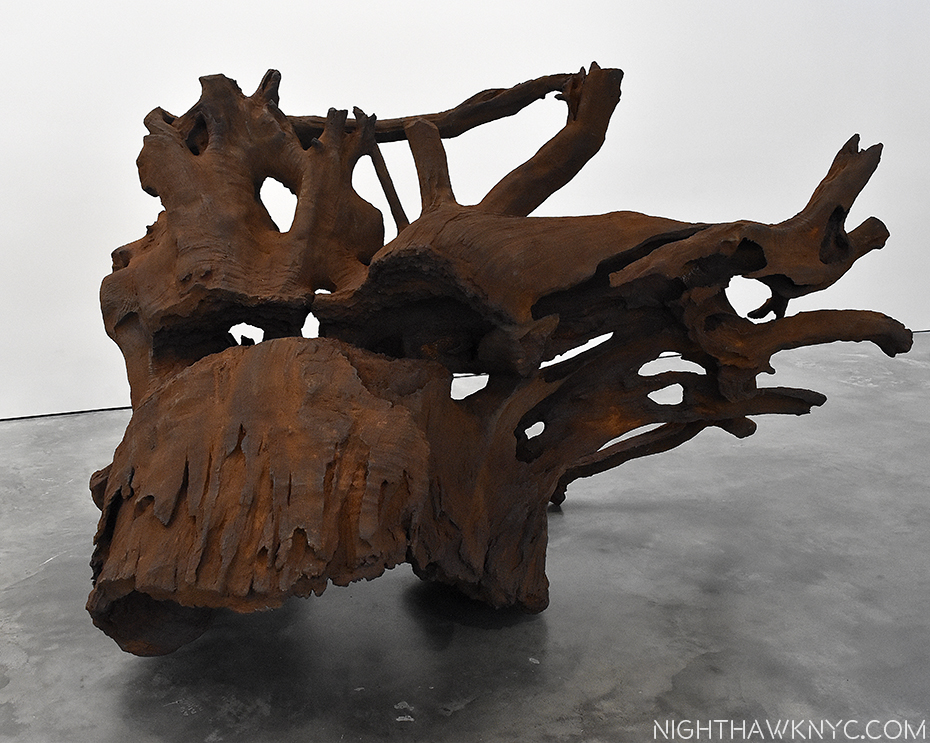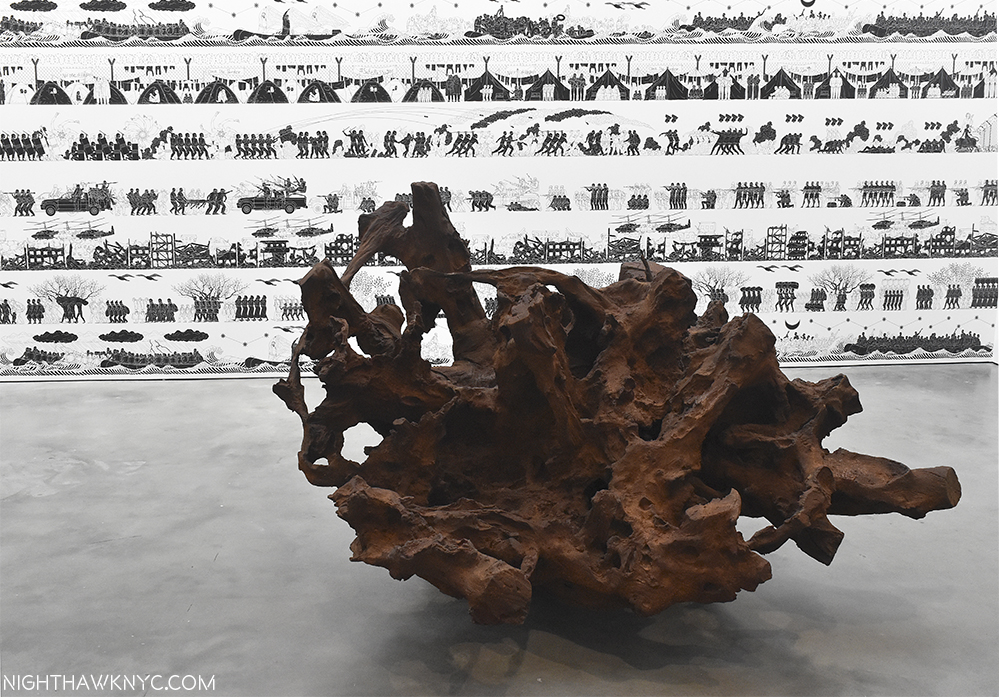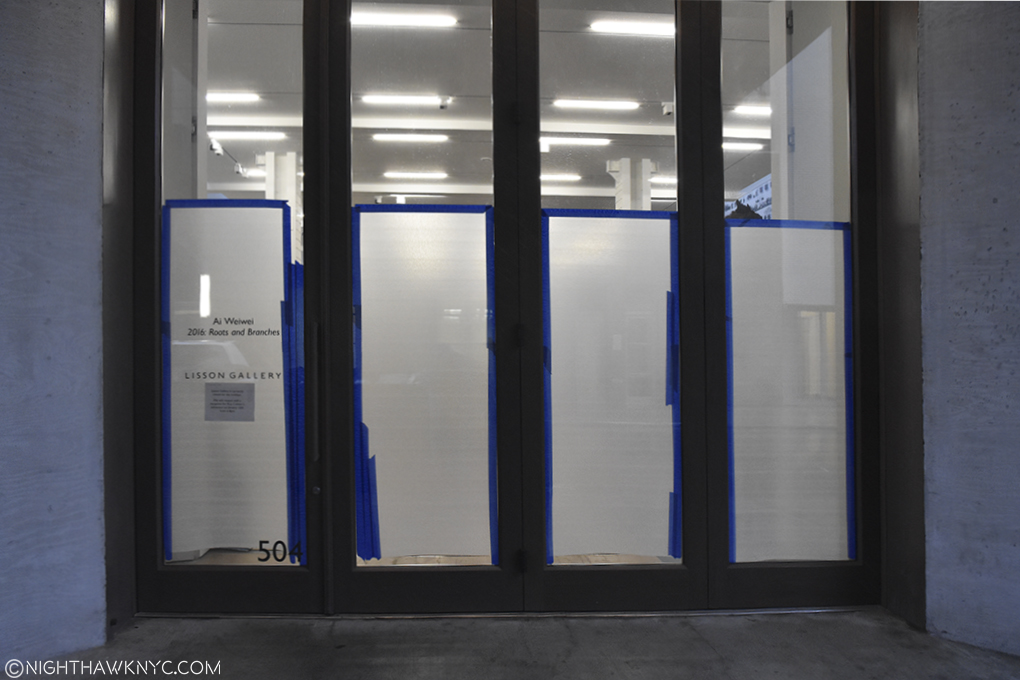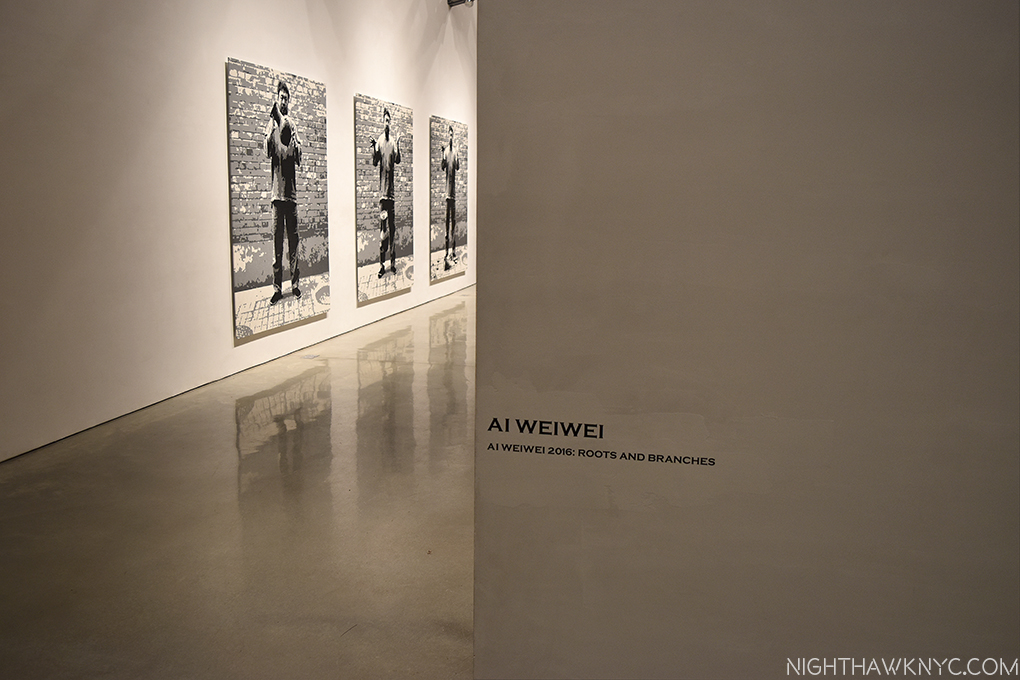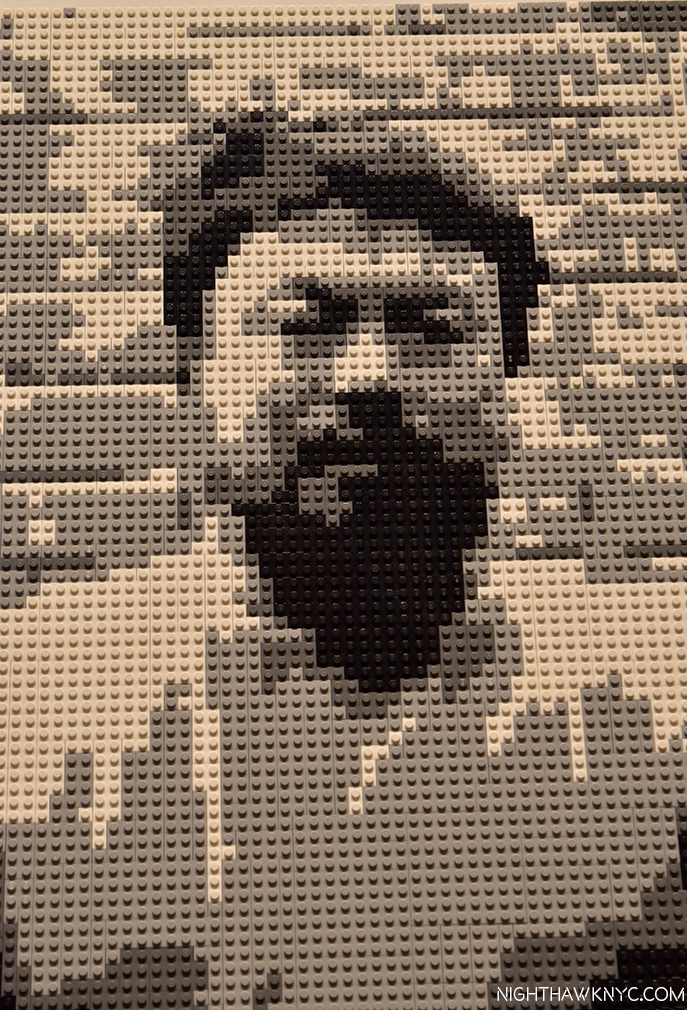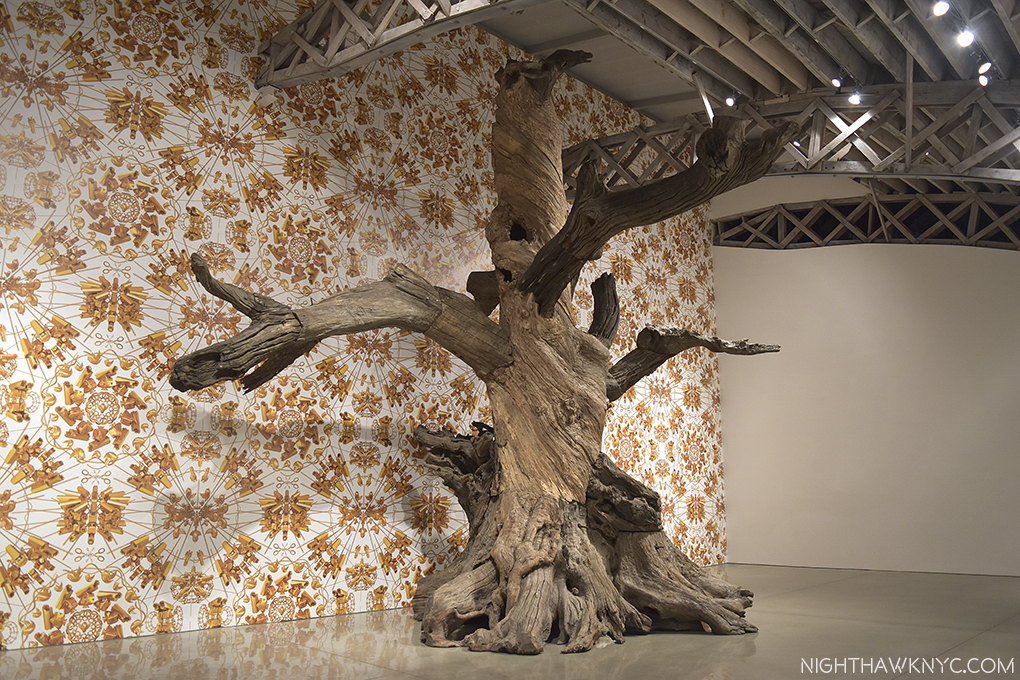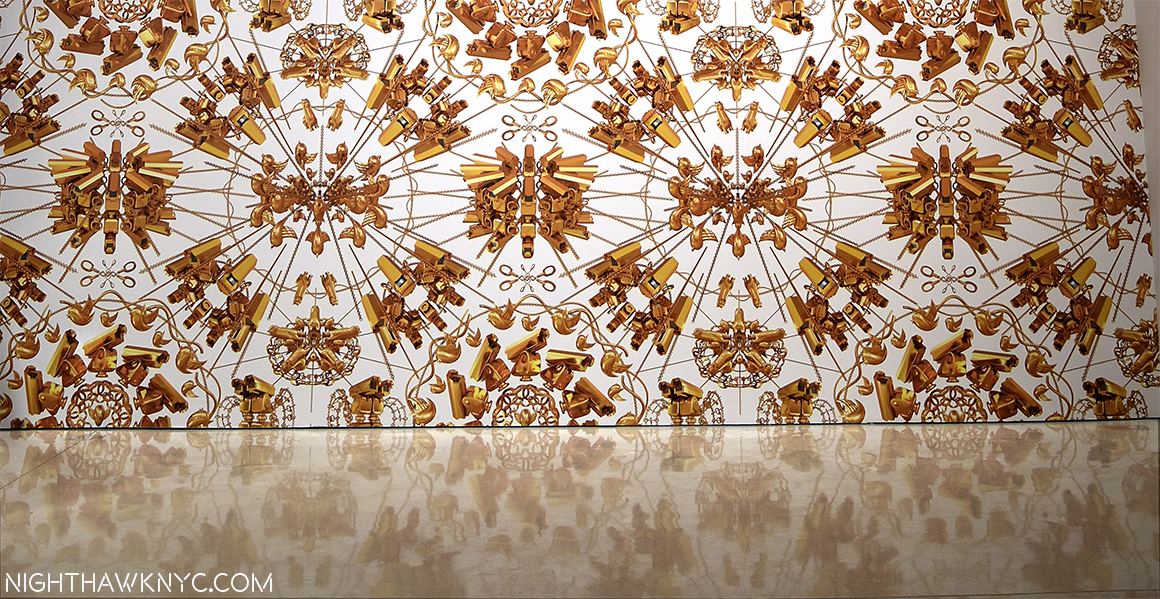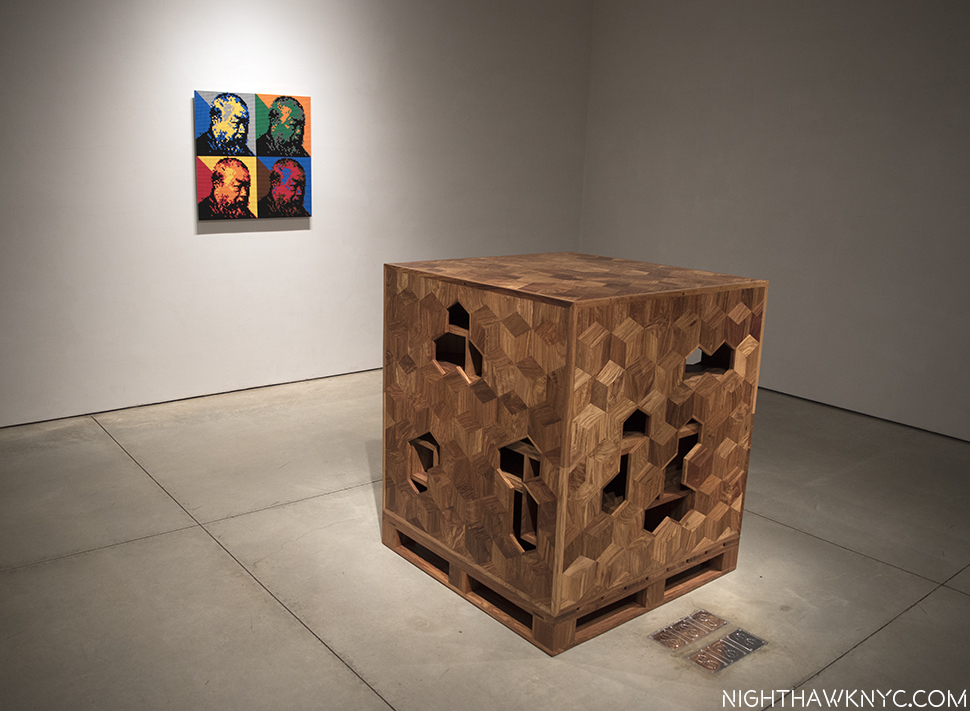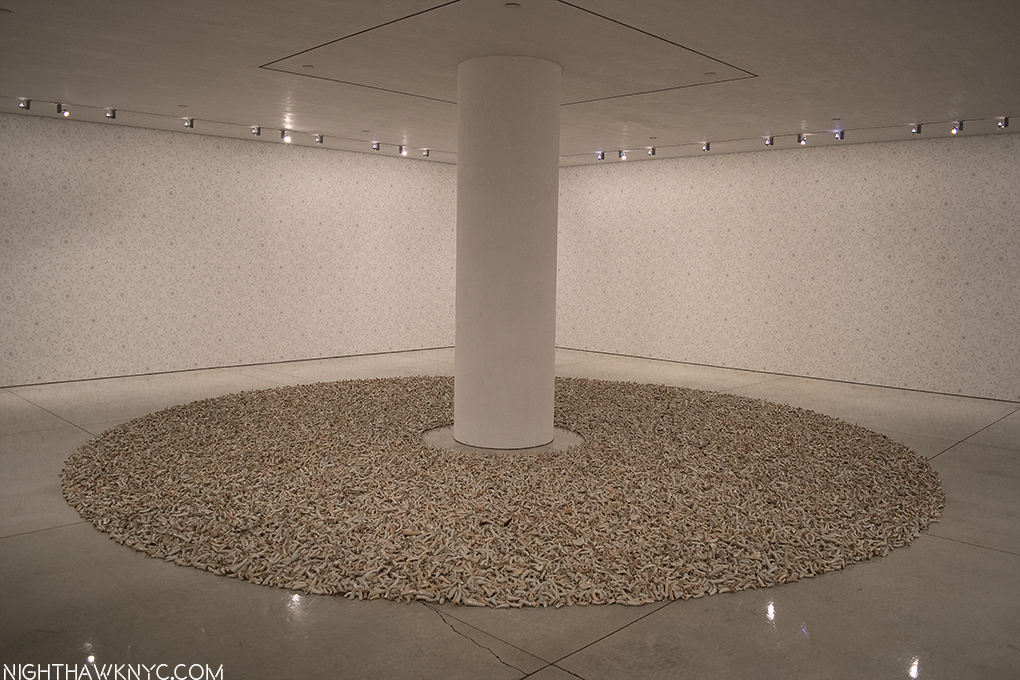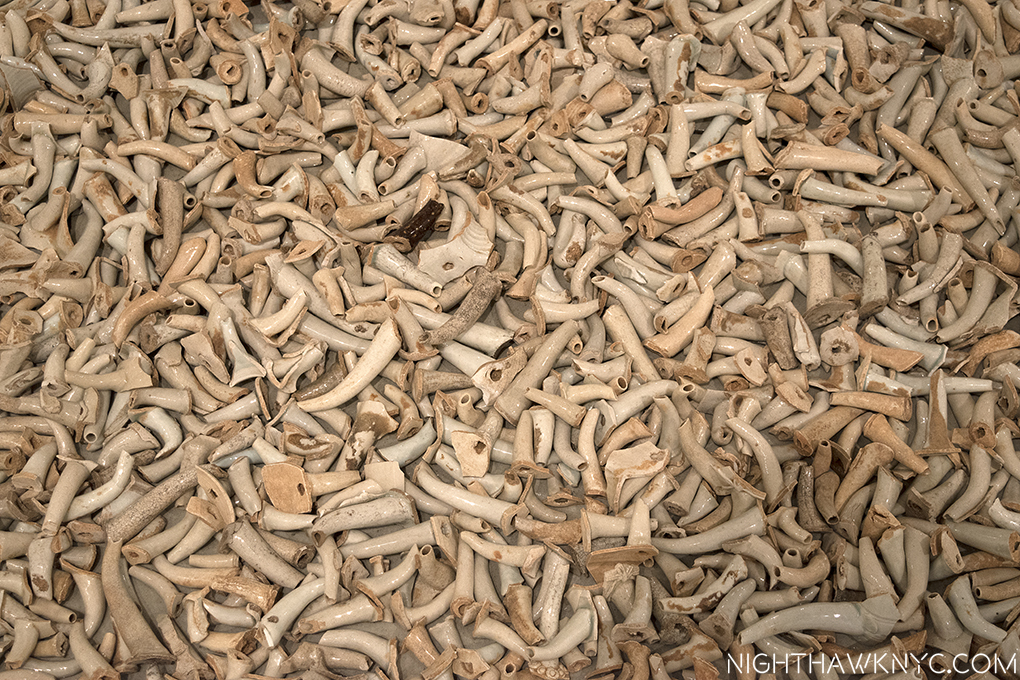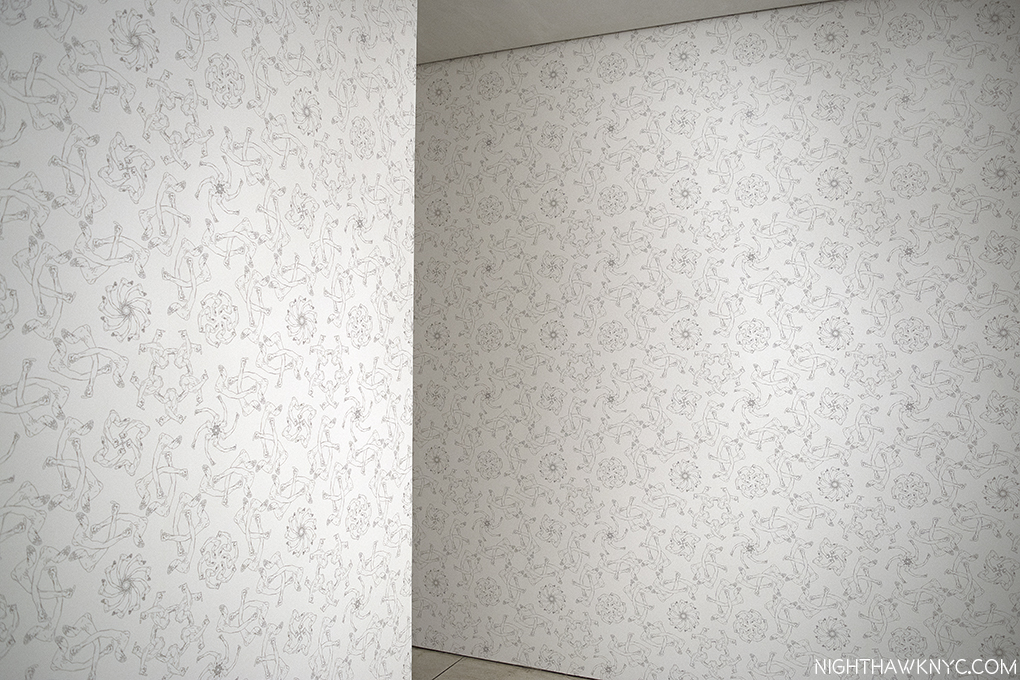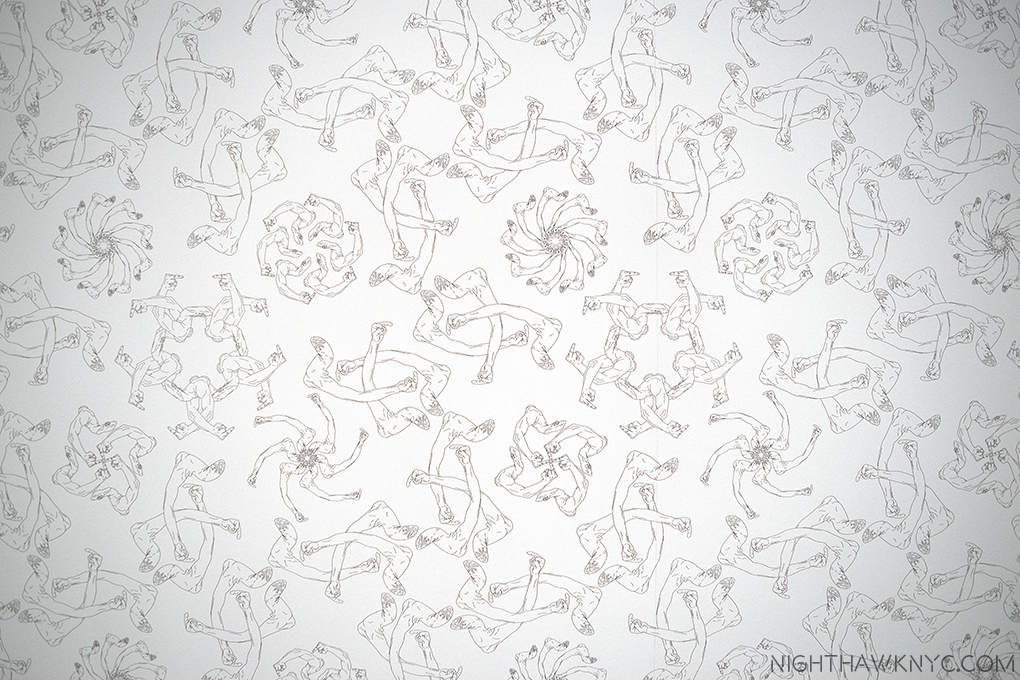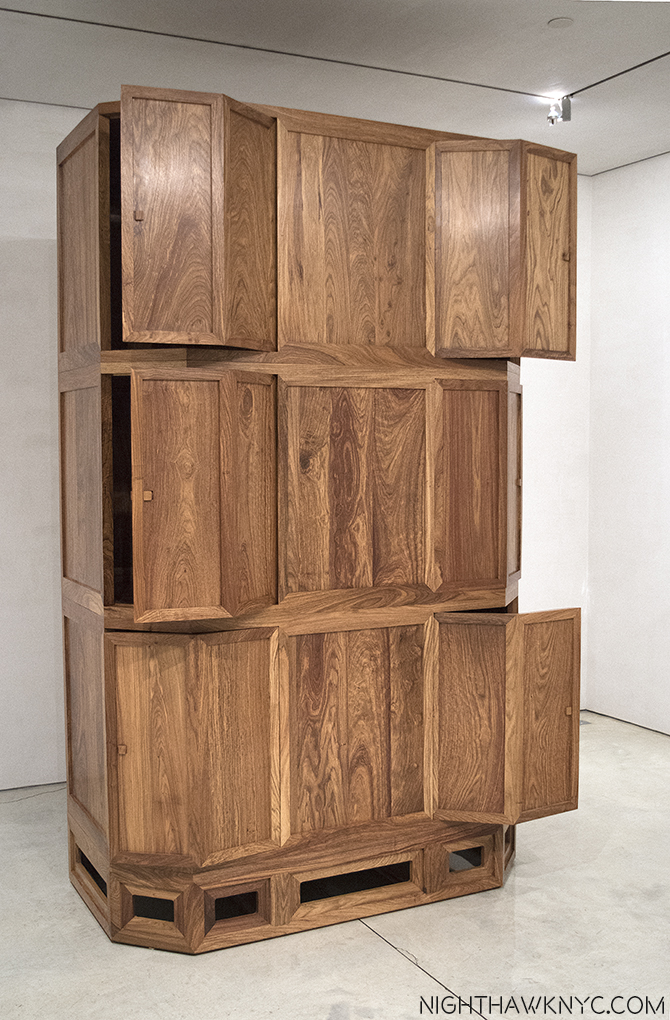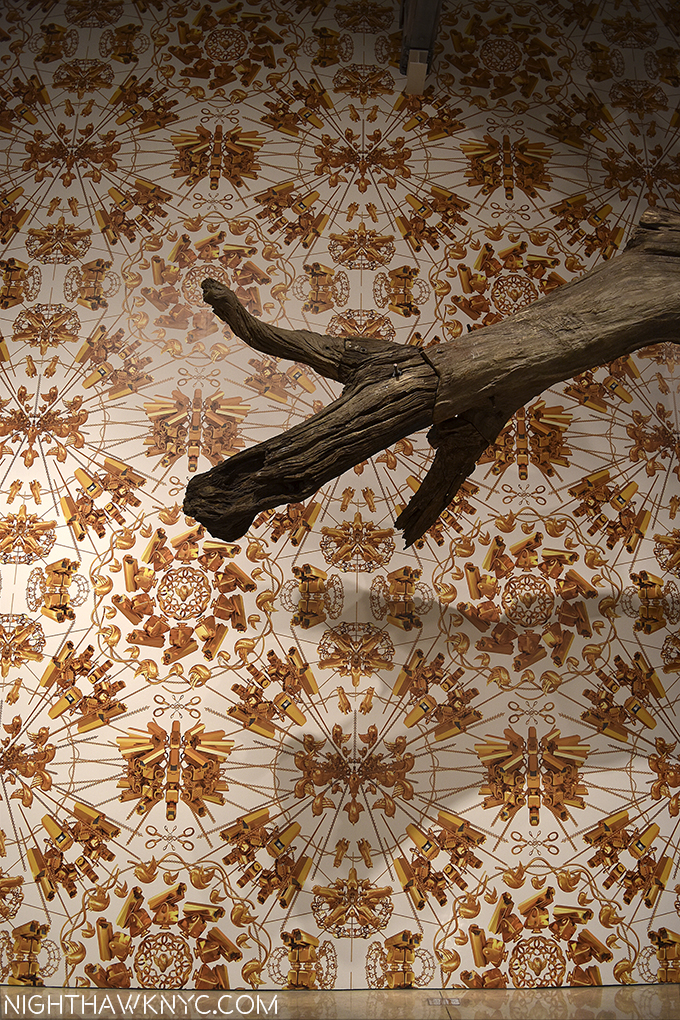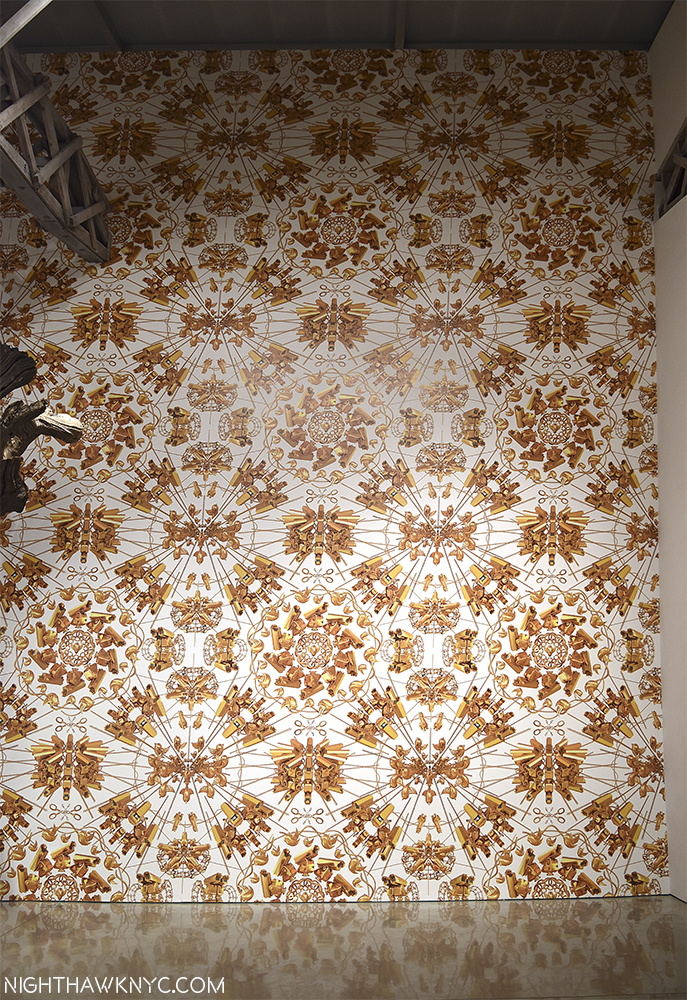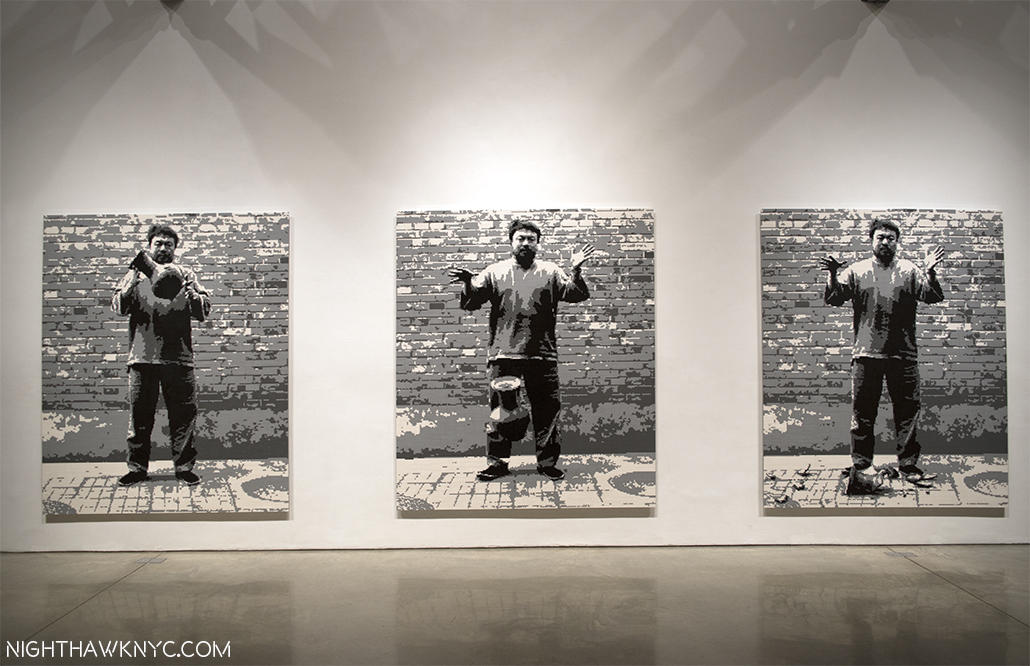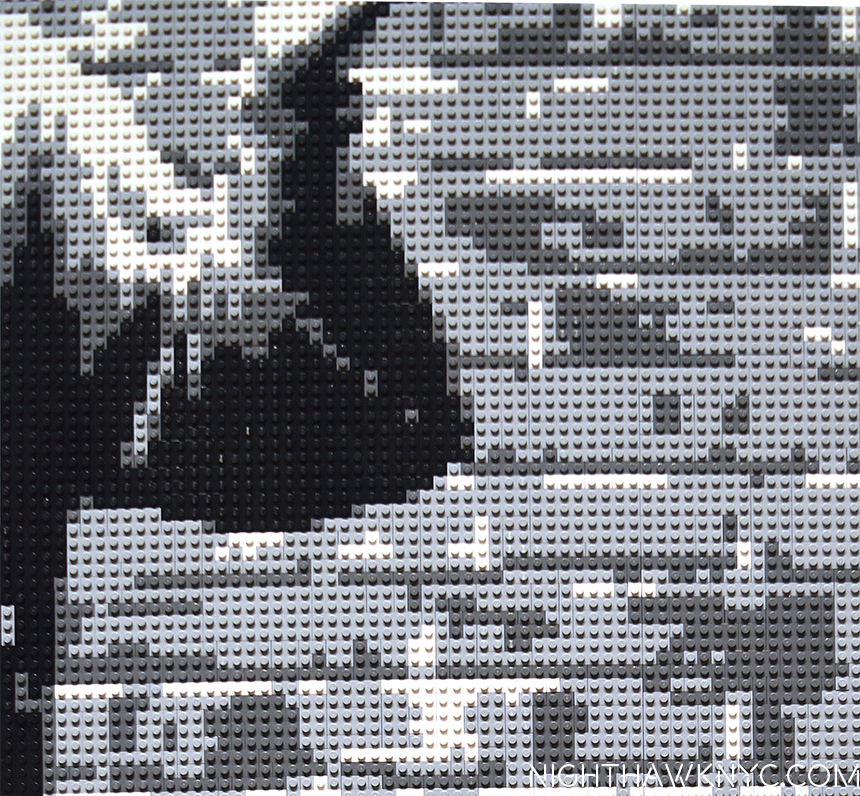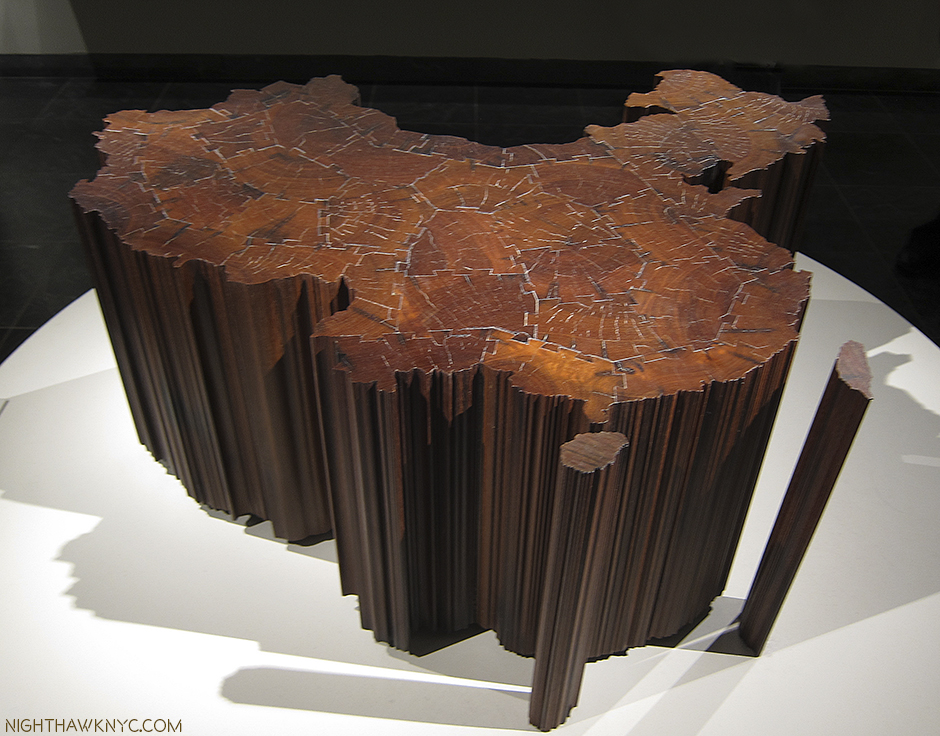This site is Free & Ad-Free! If you find this piece worthwhile, please donate via PayPal to support it & independent Art writing. You can also support it by buying Art & books! Details at the end. Thank you.
Written & Photographed by Kenn Sava (*- unless otherwise credited)
This is the third of my Series of Posts on “The Photography Show 2017” aka AIPAD.
I gave up trying to count how many Photographers of note were on hand over AIPAD’s 5 days. But, it’s with great pleasure I recount the opportunities I had to speak with many of them. Along with Jim Jocoy, the subject of the second Post in this series, here are some of my most memorable encounters…
Gregory Halpern-
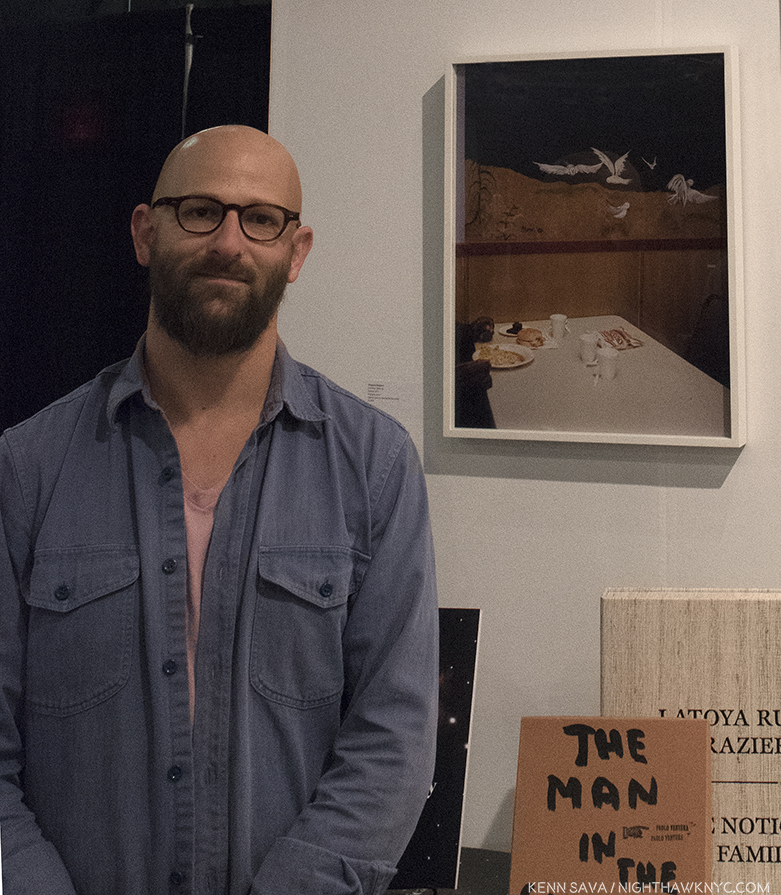
Gregory Halpern standing next to his work, “Untitled” from his “Buffalo” series, at Aperture’s Booth at AIPAD, March 31st.
Gregory Halpern was the biggest revelation I had at AIPAD. Another Photographer I had never heard of until I saw this piece, “Untitled,” at Aperture’s booth on Wednesday night. I was immediately taken by it. I went home and spent the night researching him and his work. Every single example of Mr. Halpern’s work I saw held me…fascinated me…spoke to me, and downright compelled me to look again. This doesn’t happen often (the last two times being William Eggleston and Todd Hido), so I pay attention when it does. Later, I discovered that his monographs “A”, and 2016’s “ZZYZX,” (which won Aperture’s 2016 Best Book Of The Year Award), were sold out. Hmmm…I’m not the only one his work speaks to.
Luckily, thanks to Kellie McLaughlin of Aperture, I was very fortunate to get a chance to meet Mr. Halpern and speak with him Friday afternoon. A cerebral, thoughtful and humble man, who also teaches Photography to very lucky students at Rochester Institute of Technology, he was so forthcoming, I found myself pulling back on asking him about certain of his works because I began to worry about losing some of their mystery that I love. Even in this brief time I could sense the depth of what is going on under the surface of this Artist. Beyond this, it seems to me that his work often has a magic to it that is incredibly rare. I came away on Wednesday night believing “Untitled” was the most compelling work I saw in the entire show by a Photographer unknown to me. During my research, I came across an absolutely amazing interview with him that anyone interested in his work must read, here. Not only might he become one of the most important Photographers of the next few years, he may, also, become one of it’s key writers. For my part, I was very surprised when he told me that Todd Hido was one of his teachers! Hmmm…Is Todd Hido (who I’ve never had the pleasure of meeting) teaching his students how to get to me? He seems to have the secret. Maybe if I ever do meet him, he’ll tell me.
Mike Mandel-
I met the co-author of “Evidence,” (which is listed in Martin Parr & Gerry Badger’s 3 volume set “The Photobooks,” widely considered one of the two standard references to the best PhotoBooks ever created), in passing and spoke to him briefly. My impression was that he may be a bit surprised at the ongoing importance and relevance of “Evidence,” which was first published 40 years ago in 1977. Perhaps, even he didn’t see that coming. The first book created from found and repurposed photos, the branches that have come off of it’s tree just seem to go on and on, and given the world’s current situation, show no sign of ending.
Lee Friedlander and Tabitha Soren-
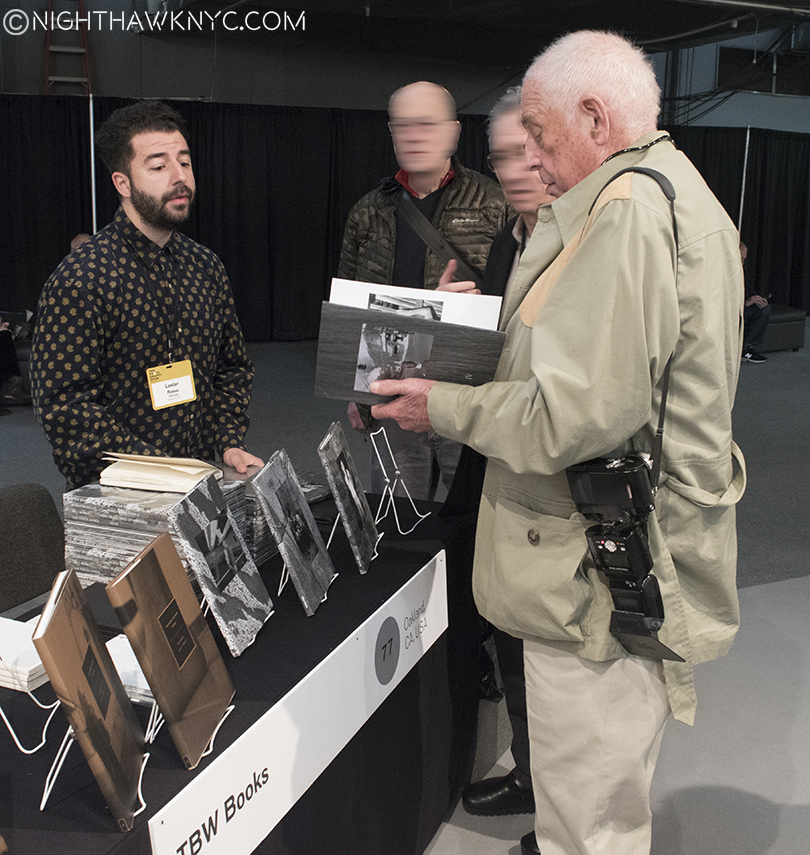
Lee Friedlander, with TBW’s Lester Rosso, left, peruses his new book, “Head,” part of TBW Books Subscription Series No. 5
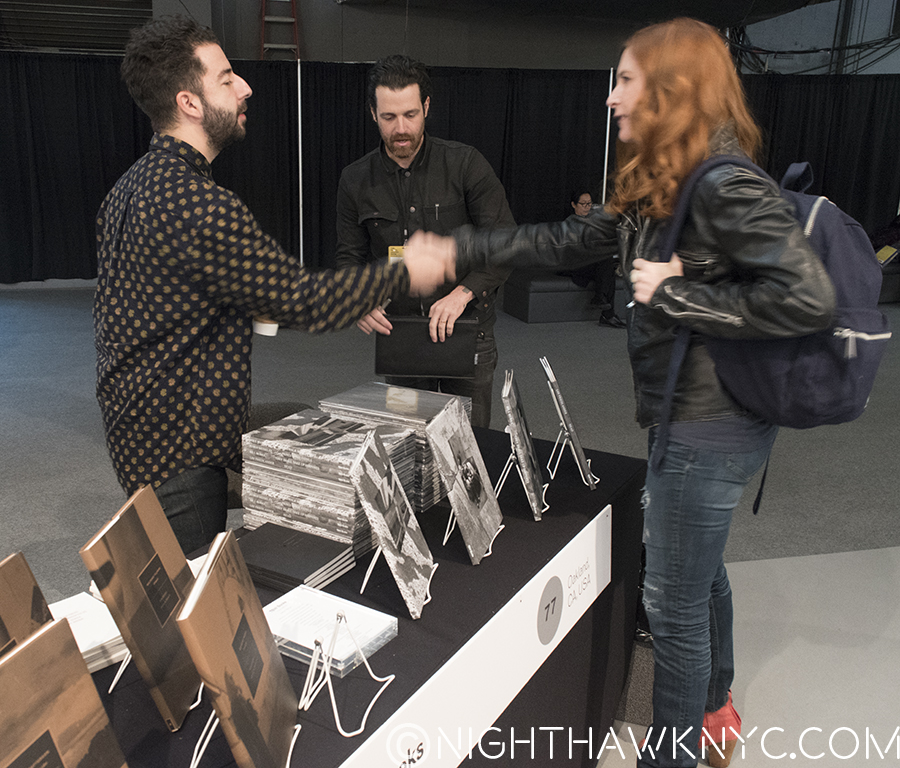
Tabitha Soren, who was with MTV back in the day, now a Photographer, with Lester Rosso and Paul Schiek (left and center) of TBW Books.
I met both (separately) in passing at the TBW Booth. The legendary Mr. Friedlander was looking over his new book by TBW, and Ms. Soren was perusing their latest releases, while 3 of her Photo-works were on view over at Aperture’s booth, along with her Baseball-themed book.
Jo Bentdal-
I met the Portraitist at Shoot Gallery, Oslo, Norway’s booth. I couldn’t believe it when I got home from the show and looked at the shot I took of him. It so looks like one of his portraits he’s standing alongside of, right? Did he do this knowingly? I don’t know, but meeting him was full of fascinating insights into the state of Photography in this country most New Yorkers know almost nothing about. Mr. Bentdal’s Portraits of young women (part of a series of 11 works of girls ages 13-15 titled “Common Sensibility”) hang in the collection of a large bank in Norway, which I found very interesting, and hopeful, as a statement of responsibility to (the) next generation(s), who are watching us. I couldn’t help but think back to the Northern European Painted Portrait tradition, which share some similar poses, but always with more going on in the background (usually religious). There is a hint of them here, for me, but more, there was a purity New Yorkers don’t often see in portraits, surrounded as we are by the Nan Goldins and others who have come along since Diane Arbus here. I found Mr. Bentdal’s work a refreshing reminder of other possibilities, and that there is a big world out there, I hear. More about him, here.
Continuing to explore Shoot Gallery’s booth, right next to four of Mr. Bentdal’s Portraits, were two double exposures by Dag Alveng-
Mr. Alveng was born in Oslo, but commuted between Oslo and NYC between 1986 and 1996. Even New Yorkers would call that a heck of a commute! Both works he showed were shot in NYC, the one above in pre 9/11 2001, which I found an interesting choice to show here. When I mentioned that, Mr. Alveng said that 9/11 had the same impact everywhere. The work has an image of dining tables in the forefront, with additional tables seen in the same shot through the window. This leads to the second exposure, which takes us further and further back, until we reach the World Trade Center all the way in the center rear. Even though 9/11 was almost 16 years ago, I still find it hard to look at pictures of the Twin Towers without thinking about that day- in spite of the fact that I have many many other, earlier, memories of them. This one was no different, with it’s juxtaposition of fine dining, which is a pleasure for most, the looming tall towers in the back, make it hard to enjoy anything, leaving me with the overriding feeling of impending doom. Like the saying “he who doesn’t remember the past is doomed to repeat it.” But, that’s just me- Your results may differ. As he explained to me, the resulting image from the double exposure was pure chance. Remarkable, indeed. It is exceedingly well done, with a subtlety that rewards multiple viewings, especially at this generous size. Depth of field seems to be a key element in Mr. Alveng’s work- be it single or double exposure. His use of the latter technique led to fascinating results in both works he showed, the other work features children frolicking in the City, an interesting “bridge” to Mr. Bentdal’s Portraits next to it. The children’s mother magically appears in the work, in double exposure, insights I could only get by being fortunate that Mr. Alveng was there, and was gracious enough to tell me about the work’s genesis, and to pose for a photo with “This is most important/Table Cloth,” a piece I will forever think of when I think of him. More of his work is here, and at Shoot Gallery, Norway’s site. I have a feeling we will be seeing more of his work in NYC. I hope so.
Right next to his work was a small set of unique works- glass negatives on black sheets by Eric Antoine, priced at 5,000. each. Mr. Antoine, who was unknown to me, and who I did not meet, is a Master of this medium, and the extraordinary detail contained in each of these very beautiful works made me feel the price was a bargain.
Raymond Meeks-
Another Photographer I had never heard of until meeting him at the booth he shared with TBW. I should have heard of him. He’s had a few books released by prestigious Nazraeli Books, including one in their renowned “One Picture Books” series, and a darn good one, as well as a book in their very first “Six By Six” (Series 1), where he was joined by no less than Todd Hido, Anthony Hernandez, Martin Parr, Mark Stenmetz and Toshio Shibata- heavy hitters, all. He’s also been published by TBW Books, and if you hurry, a classic example of his work is available at Light Work, the fine non-profit organization that supports Photographers, here, for 300.00. Mr. Meeks was showing a gorgeous hand made Artist Book entitled “Cabbage White,” a folio that includes a hand made box, a book, a broadside, a silver gelatin print, mostly shot near his upstate New York home that alternates intensely lyrical Black & White shots of nature and people- singly or in groups. The effect is transportive, like a trip to another place where people swim, hang out, jump and leap into the water and live, like people Live, like the exceptionally beautiful trees he seems to be known for live. Though accompanied by text, Mr. Meeks is a visual poet, who’s work possesses a rare lyricism that has the power to take you out of yourself on journeys his work suggests. This may be best experienced in the Artist-controlled context of this precious boxed set, of which he has only created 30 copies, so this strikes me as, perhaps, the ideal way to experience Raymond Meeks. Beware- this work will get inside you, sprout roots and grow inside of you, like one of the trees he renders with a beauty and skill reminiscent of classic Photography. Like his work, he’s an equally down to earth and forthright man, who’s looming, quiet, watchful presence mirrors his work.
Bruce Davidson-
(As I mentioned in the first Post in this series.) I asked the man who I consider the Dean of New York City Photographers how he survived shooting the 1980 photos that became his classic book, “Subway,” back when the trains were like the Wild West. He cryptically told me “It was because I looked like a photographer.” I spent the rest of the day thinking this over. While this was the fist time I’d met Mr. Davidson, I own two of his pieces, and a number of his books, and along the way, I’ve spoken to many people who know or knew and/or who worked with him. The one thing I remember all of them saying was, “Ohhhhhh…..Bruce…”, with an utter fondness in their voice, that’s rare in my experience- not about Photographers. About people. I came away feeling that Bruce Davidson has a presence, a persona that people just like, and/or don’t feel threatened around. Looking at his work, how else to explain how so many of his subjects show us parts of themselves they probably don’t show everyone? Mr. Davidson sat and signed at Steidl’s booth for a solid hour, and I took the chance to have him sign his extraordinary collection of many of his greatest books, “Black And White,” for me. It’s a set every lover of great Photography should have, in my opinion, before it goes out of print, like the original versions of all the books it contains did.
Other Photographers seen, but unmet-
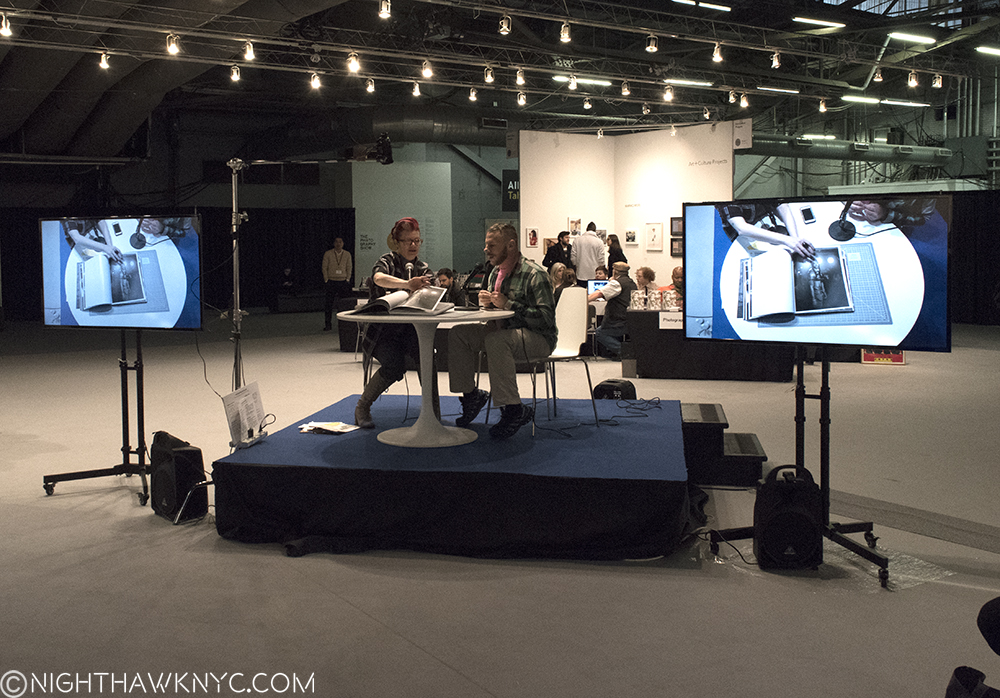
Richard Rinaldi, right, discusses his new book “Manhattan Sunday,” about night owls in Manhattan circa 2010. Hey! Wait just one minute there.
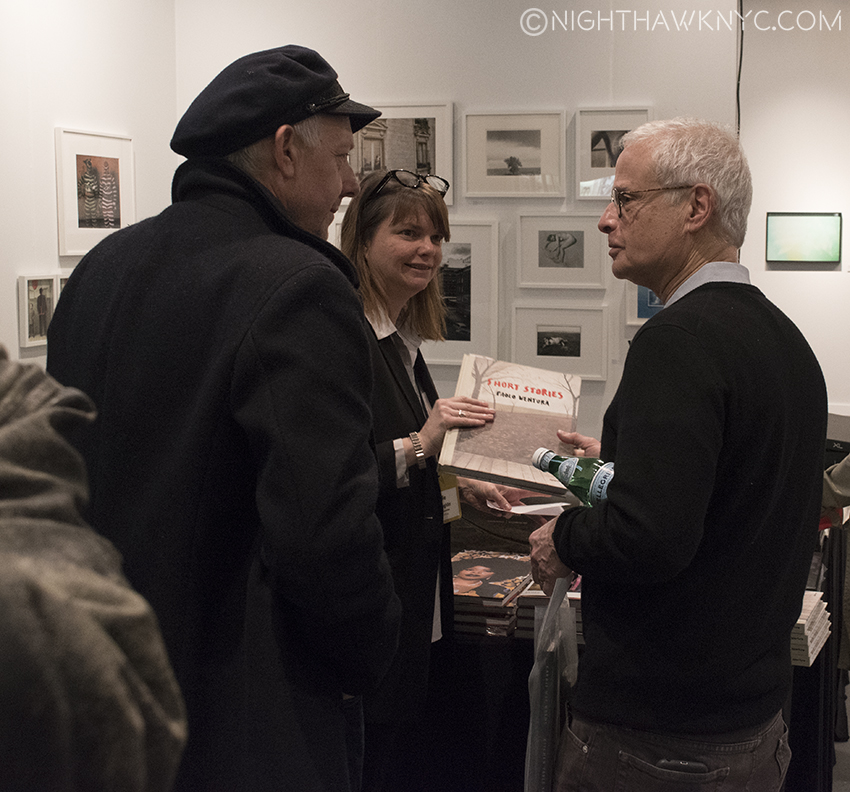
Paolo Ventura, left, with Kellie McLaughlin of Aperture (center), shows a copy of his latest book, “Short Stories.” I can’t imagine how much work goes into one of Mr. Ventura’s pieces.
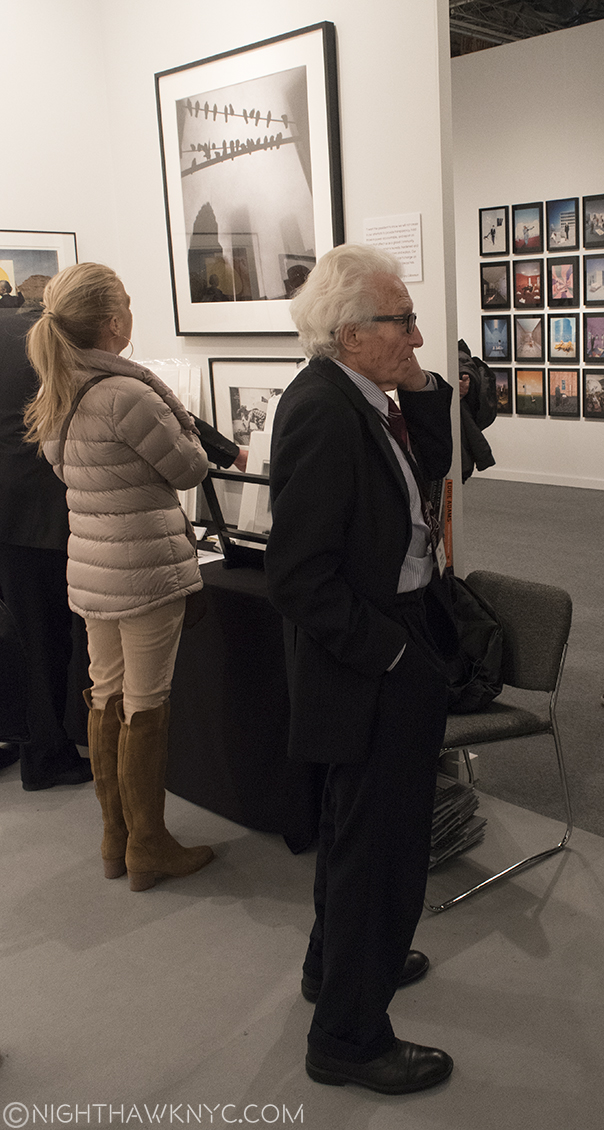
And finally, the amazing Tony Vaccaro, who’s lived an unfathomable life in Photography. Famous for iconic shots of Georgia O’Keeffe, Picasso, Jackson Pollock, Frank Lloyd Wright, among many others, oh, and World War II, which France gave him the Legion D’Honneur for his photos of, seen at Monroe Gallery’s Booth.
Had enough of AIPAD? Me neither. Over 5 days, (and I was there for all 5), there was a lot to see. More to come!
This is Part 2 of the most extensive coverage of AIPAD, 2017, available anywhere! The rest of this 4-part series is here.
*-Soundtrack for this Post is “Every Picture Tells A Story (Don’t It?)” by Ron Wood and Steve Harley and recorded by Rod Stewart.
NighthawkNYC.com has been entirely self-funded & ad-free for over 8 years, during which 300 full length pieces have been published! If you’ve found it worthwhile, PLEASE donate to allow me to continue below. Thank you, Kenn.
You can also support it by buying Art, Art & Photography books, and Music from my collection! Art & Books may be found here. Music here and here.
Written & photographed by Kenn Sava for nighthawknyc.com unless otherwise credited. To send comments, thoughts, feedback or propositions click here. Click the white box on the upper right for the archives or to search them. Subscribe to be notified of new Posts below. Your information will be used for no other purpose.

